101+ Research Project Ideas For High School – (2024 Updated)
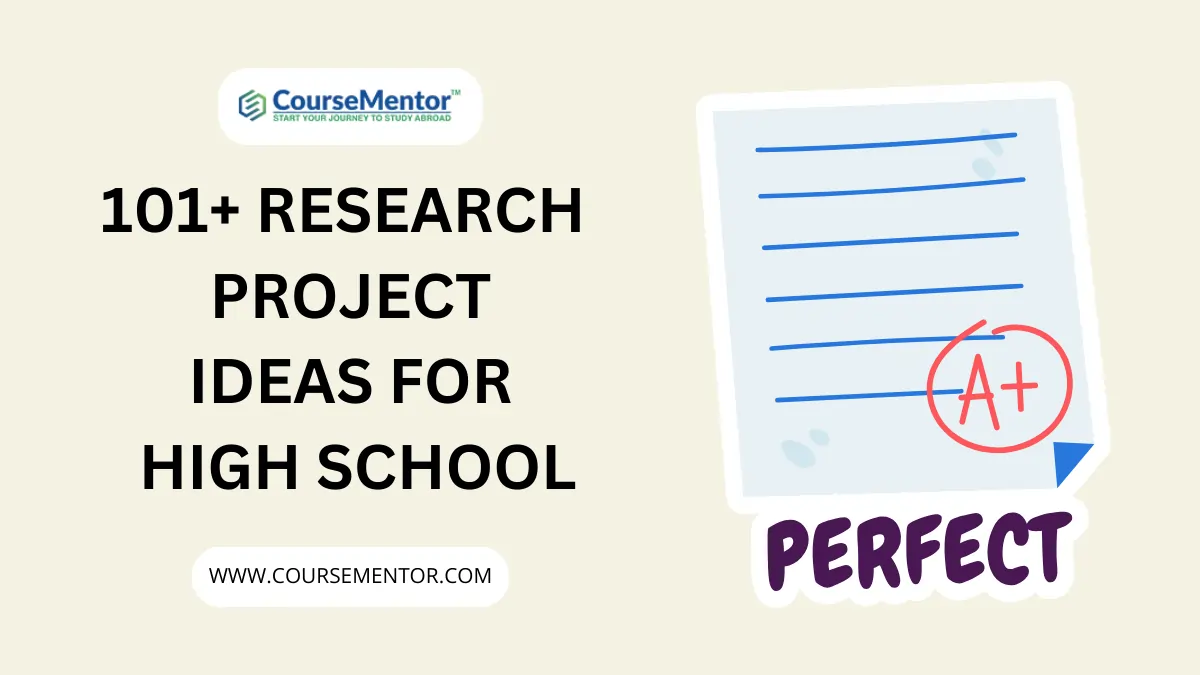
- Post author By admin
- February 2, 2024
Starting high school isn’t just about books and tests. It’s a time for trying new things, finding out cool stuff, and getting better at things that aren’t always taught in regular classes. One awesome way to get creative, think smart, and enjoy learning is by doing interesting projects.
With all their energy and new ways of thinking, high school students can dive into exciting projects that match their schoolwork and make them curious about the world.
In this blog, we’ll look at many project ideas made to make high school students think in fun ways. Whether about science, technology, arts, or helping the community, these projects want to make education a complete experience.
Let’s see how these projects can make school lessons more interesting and give a good feeling of success and a love for learning that stays with you forever. Get ready to start a journey of being creative, trying new things, and getting better at what you love. We’ll share project ideas for high school students who want to leave their mark on the world.
Table of Contents

Importance Of Research Project Ideas For High School
Here are some reasons why coming up with good research project ideas is important for high school students:
Explore Interests In-Depth
It allows you to explore an area of interest more deeply. Research projects allow you to learn more about a topic you’re curious or passionate about. This can be very rewarding.
Develop Key Skills
It develops important skills. Conducting research builds skills like critical thinking, analyzing sources, writing literature reviews, collecting and interpreting data, and presenting findings. These skills are useful in college and careers.
Demonstrate Curiosity
It shows colleges your intellectual curiosity. Good research projects demonstrate academic interests and passions that can help your college applications stand out. They show your motivation to learn.
Prepare for College Courses
It prepares you for advanced coursework. Classes like AP Research require you to conduct an independent research project. Other college courses will too. Doing one in high school helps prepare you.
Enable Creativity and Independence
It allows creativity and choice. Unlike most assignments, you pick the research topic for projects. This fosters independence, creativity, and task commitment.
Facilitate Networking
It facilitates professional networking. Research projects, especially in fields like STEM, enable you to connect with professors or experts who can advise you and open future opportunities.
NOTE: Also read our Blog on this Topic, “ 191+ Descriptive Research Topics for High School Students [2024] “
Selecting Topics for High School Research Papers
You may be confused as you review over 50 ideas for your high school research paper. Knowing how to pick the best topic to avoid that is important.
The most crucial thing to consider is how much time you have for your paper. Topics that are too big can be tough, and you might not finish on time. Stick to topics that are not too big and are clear.
Since you’ll spend time researching and writing, think about what interests you. Picking a topic you like will make researching and writing your paper easier. If things get tough and your deadline is close, you can always find a research paper for sale to help you get a good grade.
Interesting Research Project Ideas for High School In Education
- Examine the advantages of having diverse students in schools.
- Evaluate the effectiveness of charter schools within the national education system.
- Explore the impact of modern technology on the teaching methods used in schools.
- Consider the positives and negatives associated with standardized testing.
- Investigate the perks of taking a gap year between finishing high school and starting college.
- Assess which types of funding allocations provide the most advantages for students.
- Analyze whether homeschooling adequately prepares students for success.
- Debate whether universities and high schools should mandate student vaccinations.
- Examine the influence of increasing college tuition on high school students.
- Investigate whether students achieve better outcomes in single-gender educational settings.
- Explore and evaluate the influence of a well-known musician on the genre of pop music.
- Examine the transformations in pop music over the last ten years.
- Investigate the shifts in the media’s representation of women in the music industry during the past decade.
- Understand the functioning of a synthesizer.
- Explore the development of music to incorporate diverse instruments and vocal styles.
- Examine the impact of advancements in sound effect technology on the music business.
- Analyze the advantages of including music education in high school curricula.
- Do places that help people recover work better than prisons?
- Can taxes for busy areas be helpful?
- Does affirmative action support minority groups?
- Can a system where businesses are privately owned make things more equal?
- Is a government with three main parts a good way to run things?
- What makes people in politics strongly disagree with each other?
- Is the U.S. government fair to people of all races?
- Pick something important from the past and discuss how it still affects us today.
- Choose a leader from history who lost their power and figure out why it happened.
- Look at how your country has changed significantly over the last hundred years.
- Think about the biggest thing that happened in the history of the U.S. and talk about its impact.
- Check if the government has gotten better or worse at dealing with big problems throughout history.
- Talk about what happened when America was in charge of Iraq in the past.
- Explain the long story behind the conflict between Israel and Palestine.
- Does reading books matter in today’s world?
- Talk about how made-up stories can sometimes be used to spread certain ideas.
- How do stories help us learn about how people live in our world?
- Explain how the stories we read as kids can affect us when we grow up.
- Look at how books talk about relationships between people attracted to the same gender.
- Do TV and newspapers show different kinds of people like they are?
- Do TV shows and news stories keep showing the same ideas about certain groups of people?
- Why do lots of people like to listen to podcasts now?
- Will watching shows online make regular TV less popular?
- Do TV and news show different types of people like they are?
- Do TV and news stories keep showing the same ideas about certain groups of people?
- What does it mean to be a patriot?
- What are the good and not-so-good things about being a citizen of the whole world?
- Why do people bully, and what happens because of it?
- Why are fewer people getting divorced in the U.S. nowadays?
- Is it better to do what everyone expects, or what your religion says is right?
- Are there certain rules that should be followed when deciding about abortion?
- How does a big machine like an MRI work?
- Would it be good for the U.S. if everyone shared healthcare?
- Think about how using medical marijuana affects old people, health, schools, and taxes.
- How do people who don’t like vaccines affect the country’s health?
- Look at the good and bad sides of the culture around diets.
- Should workers be allowed to exercise while they’re at work?
- How much exercise should a grown-up do each week, month, or day?
- Talk about what happens to the U.S. when a lot of people are overweight.
- Do students know more things now that the internet is around?
- How is the internet different from how it was first made?
- Did getting music online help the music industry?
- Talk about the good and bad things about making internet rules stricter.
- Think about what the internet has done to newspapers.
- What happens if the internet stops working?
- What will happen to us because of artificial intelligence (AI)?
- What are the good and not-so-good things about cryptocurrency?
- How did social media change how people talk to each other?
- Should only some people be allowed to use social media?
- Why is open software important?
- What’s more important now: apps on phones or websites?
- How will cars that can drive by themselves change what we do?
- How does sending text messages affect how well young people read and write?
Mental Health
- Why is it good to exercise every day?
- How did social media change how people feel inside their heads?
- What makes people not feel good in their minds and bodies?
- Think about how people talk about feeling okay in movies, music, and TV.
- Talk about the good and not-so-good things about having more people to talk to in high school.
- What happens to the body when it feels stressed out?
- How do animals that give comfort help people feel better?
- What are black holes, and how do they work?
- Talk about the good and not-so-good things that the EPA did.
- How did Flint’s water problem change how people live in Michigan?
- Can science do something to help animals that might disappear?
- Can scientists do something to stop cancer from happening?
Environment
- What happens to the weather when we cut down a lot of trees?
- Can we make the changes to the weather go back to the way they were?
- How did the sickness that happened around the world make the weather different?
- Do the things people buy to be kind to the Earth work or are they just for show?
- Is using special power from tiny things safe and good for the Earth instead of using old stuff?
- Do cars that use both electricity and gas help make the air cleaner?
- How is throwing away plastic stuff hurting the Earth?
- Can anyone be good at starting businesses, or is it something you have from the start?
- Is it fair for the person in charge of a big company to get much more money than every one else working there?
- Can you make your own business even if you don’t have money?
- Should the smallest amount of money people get for their work be more?
- Why is it good for a business when the people who work there feel happy?
- How much does a business need to have a well-known name and look?
- Is it easy or hard to find a job today?
- How does playing games for a big audience affect money in the country?
- Do people who play sports for a job get more money than they should?
- Should guys and girls who play sports get the same amount of money?
- How can people who are transgender play sports in high school in a fair way?
- Why is it good to play games with a team of people?
- Which professional game has the most dishonest things happening in it?
5 Reasons High School Students Should Do Research
For many students, research seems like something only brilliant people or scientists do. But that’s not true! In today’s world, research helps students understand things better and gets them excited about discovering new stuff.
Even if many students already know about doing research, they still enjoy trying out new things and learning more.
If you want to become good at research and understand why it’s important, here are some cool reasons that will surprise you.
This is Fascinating
When high school students do research, it helps them see things differently. It makes them think hard, solve problems better, and learn more about different subjects.
It Can Set You Apart
Schools now use a mix of teaching called blended learning , where teachers and students work together. Students research projects and present their skills online or in regular classes. This helps students stand out from others.
Expand or broaden the Knowledge
In high school, students often feel lost about what classes to take and which college to choose for their future. But if they’re good at researching, they can solve these problems easily. Research helps them think better and find new chances to learn and use in their life.
Updated information
Some students love asking many questions; it’s good because they like staying updated on what’s happening. Doing research helps them learn more, find accurate facts, and understand how things are changing. With research, students can share their thoughts with friends and groups.
Meet New Idea
Ideas never come in the blink of an eye; they require proper knowledge and understanding of a specific topic. Students can generate ideas only if they have effective research skills. Good research skills are only possible when students read a lot, make notes, and put their thoughts into it.
Doing a research project lets high school students study stuff they care about more deeply. Coming up with a good idea that fits the assignment and still sounds fun can seem tricky. But there are many great topics—from looking into social problems to analyzing books and plays to doing science experiments.
The key is finding something you’re curious about that excites you enough to stick with it. Whether you want to spread awareness about stuff teens are dealing with or discover new things through hands-on projects, the right research topic is out there waiting!
With an open mind and some help from teachers, you can find an interesting subject to research that will be engaging and teach you something.
How do I balance the depth and scope of my high school research project?
Striking a balance is key. Ensure your project is neither too broad nor too narrow. Clearly define your research question to maintain focus while allowing in-depth exploration within the specified scope
Can my high school research project have real-world implications?
Absolutely! Many impactful projects start at the high school level. Consider how your findings or solutions can address real-world challenges or positively impact your community.
Can I integrate multiple subjects into my high school research project?
Absolutely! Many intriguing research ideas span multiple subjects. Look for topics that allow you to connect different disciplines, providing a more comprehensive understanding of the subject matter.
- Tags RESEARCH PROJECT IDEAS
- australia (2)
- duolingo (13)
- Education (264)
- General (67)
- How To (16)
- IELTS (127)
- Latest Updates (162)
- Malta Visa (6)
- Permanent residency (1)
- Programming (31)
- Scholarship (1)
- Sponsored (4)
- Study Abroad (187)
- Technology (12)
- work permit (8)
Recent Posts
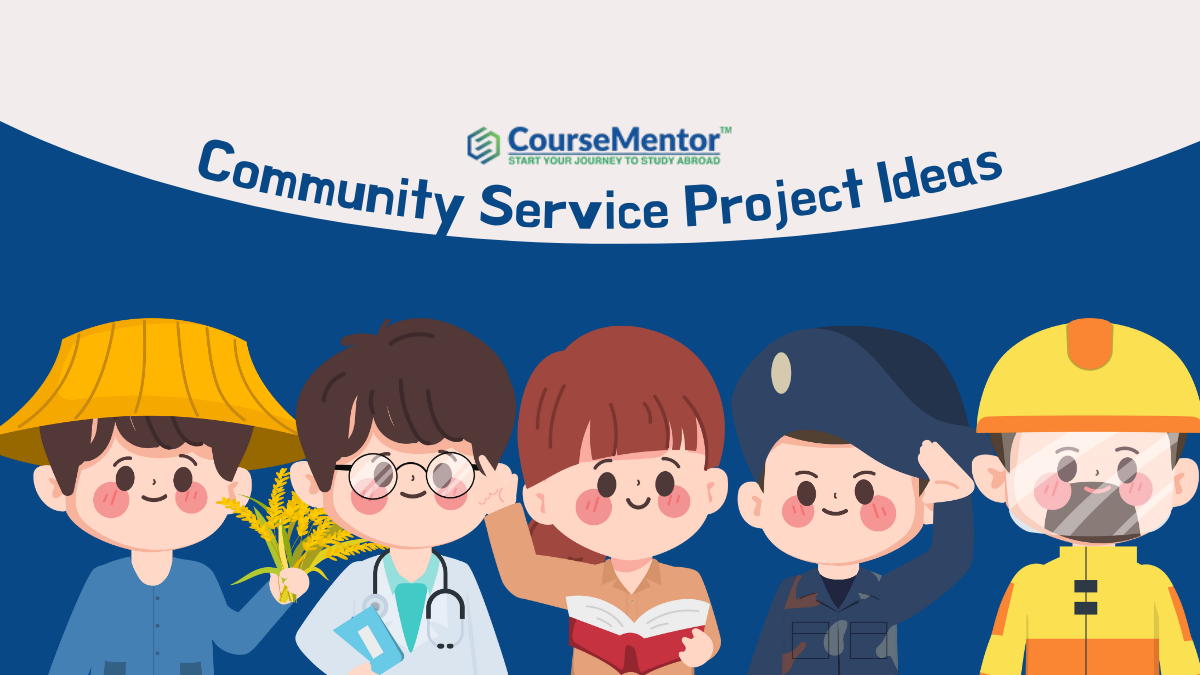
What are your chances of acceptance?
Calculate for all schools, your chance of acceptance.
Your chancing factors
Extracurriculars.
A Guide to Pursuing Research Projects in High School

Is your profile on track for college admissions?
Our free guidance platform determines your real college chances using your current profile and provides personalized recommendations for how to improve it.
Most common high school pursuits and interests can be fit fairly neatly into the academic or extracurricular categories. There are of course required courses that you take, and then there are the activities that you pursue outside of school hours, usually for your own enjoyment. You may play on a sports team, participate in a service project, or pursue visual arts. In most cases, even if your interests are somewhat untraditional, you can somehow package them in a way that neatly qualifies them as an extracurricular activity.
But what if your interests outside of school are more academic in nature? What if you’ve long been fascinated by the potential that carbon sequestration holds to limit the effects of climate change? What if you’re interested in the history of civil disobedience, or the ability of exams to measure actual comprehension? Whatever the case may be, there are some topics of interest that just don’t fit neatly into any extracurricular club or activity.
If you find yourself longing to pursue an interest such as this, you might consider conducting your own research project. While the concept may seem daunting at first, if you break it down into smaller, manageable tasks, you’ll quickly find that you probably already have the skills necessary to get started.
In this post, we will outline the process for conducting a long-term research project independently, including several avenues for pursuing recognition of your work and a step-by-step guide to completing your project. If you’re interested in pursuing an independent research project during high school, keep reading.
Why Pursue an Independent Research Project?
An independent research project is a great way to explore an area of interest that you otherwise would not get to learn about outside of school. By undertaking a research project on your own, not only will you explore a personal area of interest in more depth, but also you will demonstrate your dedication to pursuing knowledge for the sake of learning and your ability to work independently over a prolonged period.
Independent research projects, when conducted well and presented appropriately on a college application, can be a great advantage to you on your college admissions.
How to Choose a Topic for a Research Project
If you’re interested in pursuing a research project, you probably already have a topic in mind. In fact, the desire to conduct a research project usually stems from an existing interest, not just from the idea to conduct research on a vague or undetermined subject matter.
You should aim to narrow your research project to something that has some academic relevance. Perhaps it is related to your existing coursework. Maybe it reflects work you hope to pursue in the future, either academically or professionally. Try to fine-tune your project enough that you can easily explain the driving force behind it and its relevance to your future career path.
While you don’t need to decide on your exact topic or thesis quite yet, you should have a general idea of what your project will entail before moving forward.
Are There Existing Avenues for Undertaking a Research Project At Your School?
While you could certainly conduct your research project completely independently from your school, it is usually easier and more productive to conduct it in a way that is somehow connected to the rest of your schooling.
If the project is STEM-oriented, think about whether it would fit into a science fair or other STEM competition in which your school already competes. Also consider the AP Capstone Program if your school offers it. The second course in this sequence is AP Research , and it requires an in-depth research project as its culminating assessment.
If neither of these formal avenues are available, or neither provides a good fit, look into the possibility of pursuing your project as an independent study. If your school offers independent studies for credit, you can usually get information about them from your adviser. These types of projects usually require an extended application process that must be followed closely if you want to gain approval.
Finally, even if you can’t take advantage of one of the options above, if you have achieved advanced standing or enough credits, your school might still allow you to undertake an extended individual research project through some type of formal arrangement. Talk with a teacher, mentor, or adviser to learn what your options are. Clearly communicate your innate desire to learn more about this specific topic and be prepared to give some background on the issue that you want to research.
Steps for Undertaking the Research Project
1. find a mentor or adviser.
You will need someone to help guide and advise your work, so finding a willing and able mentor should be one of your first steps. This should ideally be a person with existing expertise in the subject area you wish to pursue. In the least, this person should share your interest and passion for the topic.
A teacher at your school who can also serve as an adviser is ideal, and may even be a requirement if you are formally pursuing the project as an independent study for credit. If that is not possible, you can certainly find a mentor somewhere else, even remotely if necessary.
Find out if your subject matter pertains to any local industries or companies, or if there are any scientists or professionals nearby who specialize in it. Consider checking the instructors of local summer programs or judges from past science fairs at your school. Also consider a professional who has written an article that interested you in the field.
Before you approach a mentor to request their help, familiarize yourself with his or her work. Be able to speak articulately about what has drawn you to him or her specifically. Put some thought into informed questions you might ask him or her. Be upfront about your needs if you are going to require any specific guidance or extended time or energy from your mentor. It might be difficult to find someone at first, but keep trying. Finding a mentor for your project is an important step.
2. Set a Timeline and Stick to It
Once you’ve found a mentor, you can get started laying out the timeline for your project. When you do this, list each step of your project as specifically as possible. These will include at a minimum: background research, writing a thesis statement, in depth research phase, outlining your final paper, drafting your paper, editing your paper, and publishing your paper.
You will probably have a completion date in mind, whether it’s required by the school or simply the end of the semester or school year. Work backwards from your completion date to set a realistic timeframe for each of these steps.
It helps to have a calendar displayed prominently with your deadlines listed clearly on it to keep you on track. Also be sure to put your deadlines into your school assignment book or Google calendar so that you can see how they overlap and affect your other commitments.
Discover your chances at hundreds of schools
Our free chancing engine takes into account your history, background, test scores, and extracurricular activities to show you your real chances of admission—and how to improve them.
3. Conducting Research
After you’ve completed your deadline calendar, you’re ready to get started with the fun stuff: the actual research. There are many sources for finding high quality research materials. You can use your school library, your local library, and sometimes even the library at local colleges or universities. Sometimes the libraries at colleges are open only to registered students and faculty, but if you contact a library official or a member of the department related to your research project, you might be able to gain access for research purposes.
You may also take advantage of online research tools. Google Scholar is a good place to find peer-reviewed, high quality publications. You may also find out if your school has a subscription to any online research databases like Ebsco , or JSTOR . These databases provide digital compilations of hundreds of research journals, both current and archived.
Be careful what you choose to use as sources, though. You need to ensure that every source you rely on is high-quality and fact-based. Many internet resources now are not as accurate as they might appear. Some are outdated and some are just wrong. Remember that just about anyone can publish something online these days, so you can’t rely on information that you find on just any old website. Be particularly wary of pages like Wikipedia that look like fact-based resources but are actually drawn from unfiltered user submissions.
As you research your topic, take careful notes to track your work. Choose a system to organize your notes, such as writing on notecards that can be easily organized, or using different colored pens to color code different subtopics of your research. By carefully organizing your notes, you’ll be better set up to organize your paper.
4. Organize Your Paper
Once you’ve completed the research phase of your project, you’re ready to organize your paper. Go through your notes carefully to see how they support your thesis. If they don’t, be prepared and open to changing your thesis. Always allow the research to guide the direction of your paper, and not vice versa.
Organize your notes into the order that makes most sense in your paper. Use them to guide an outline of your paper. Once they are in order, write out a rough outline of your paper.
Prewriting is an important step to writing your paper. It allows you to go into the drafting phase with as much preparation as possible so that your writing will have a clear direction when you begin.
5. Write Your Paper
After your organization and prewriting, you’re ready to draft your paper. Try to break this phase up into smaller pieces so that you don’t burn out. Your final product will probably be one of the longest papers you’ve ever written, usually ranging from 15-30 pages depending on your subject, so you’ll want to pace yourself.
Break up your writing deadlines into more specific sub-deadlines to help guide your work. Set goals for completing the introduction, various sections of the body, and your conclusion.
6. Edit Your Paper
There will be multiple stages of editing that need to happen. First, you will self-edit your first draft. Then, you will likely turn a draft of your paper in to your mentor for another round of editing. Some students even choose to have a peer or family member edit a draft at some point. After several rounds of editing, you will be prepared to publish your work.
7. Publish Your Work
Publication sounds like a very official completion of your project, but in reality publishing can take many different forms. It’s really just the final draft of your project, however you decide to produce it.
For some students, publication means submitting a draft of your project to an actual journal or formal publication. For others, it means creating a polished draft and a display board that you will present at a school or public event. For still others it might just be a polished, final draft bound and turned into your mentor.
However you decide to publish your work, be mindful that this should be a reflection of an entire semester or year of work, and it should reflect the very height of your learning and abilities. You should be proud of your final product.
If you’re a high school student with in-depth interests in a subject area that doesn’t fit neatly into any of your existing extracurriculars or academic courses, you should consider pursuing a research project to reflect your interest and dedication. Not only will your pursuit allow you to further explore a subject that’s interesting to you, but also it will be a clear example of your independence and commitment on your college applications.
Looking for help navigating the road to college as a high school student? Download our free guide for 9th graders and our free guide for 10th graders . Our guides go in-depth about subjects ranging from academics , choosing courses , standardized tests , extracurricular activities , and much more !
For more information about research and independent projects in high school, check out these posts:
- Ultimate Guide to the AP Research Course and Assessment
- How to Choose a Project for Your AP Research Course
- How to Get a Research Assistant Position in High School
- An Introduction to the AP Capstone Diploma
- How to Choose a Winning Science Fair Project Idea
- How to Plan and Implement an Independent Study in High School
Want access to expert college guidance — for free? When you create your free CollegeVine account, you will find out your real admissions chances, build a best-fit school list, learn how to improve your profile, and get your questions answered by experts and peers—all for free. Sign up for your CollegeVine account today to get a boost on your college journey.
High School Graduation Year* 2017 2018 2019 2020 2021 2022 2023 Other
Can't see the form above? Subscribe to our newsletter here .
Related CollegeVine Blog Posts

Science of Curiosity

Focus Students with the Mini Research Project
A mini research project can help students focus on the most important central theme of the lesson. The goal of the mini research project is for students to invest in learning about a new topic, and then sharing with their classmates what they learned. The project is meant to support and reinforce a specific central idea of the lesson or unit. I suppose this is true of any research project, but as you will see, the mini research project has some unique characteristics that make it a great choice!
Mini Research Project Learn and Share
There are two parts to the mini research project: first students learn, then they share!
Learn:
The mini research project is designed to allow students to take a deeper dive into a particular topic. For example, in my Biology class we learn about the drivers of Climate Change. Students then do a mini research project to learn and share about new renewable energy innovations that work to fight climate change. Everyone chooses a different innovation to write about!
Structure of the Mini Research Project
The mini research project invites students to jump right into the meat of a topic. There is no introductory paragraph, no conclusion, no fluff to fill up space – just information.
Here I must confess, I am a science teacher. English teachers forgive me….this may not be the blog post for you! As a science teacher, my goal is to help students learn a specific science objective. This does not include how to write a formal paper. It does not include how to cite a formal paper. Nor even how to search online for resources. I just want them to learn a very specific central idea. If you, fellow teacher, have the same goal, read on!
Give students a short, concise rubric for what you want them to learn and share. Try to hone in on the two or three most important things you want them to focus on. Students write one paragraph for each part of the rubric.
In my example, they must describe how their renewable energy technology/innovation works, and then explain how the technology helps to fight against climate change. Just two paragraphs, but they both reinforce the central idea of the lesson, causes of climate change. They must reflect on the causes of climate change as they explain how their innovation combats climate change.
Here are a few other possibilities as inspiration for your own classroom:
- Topic: Adaptations. Project: Research an animal/plant. Describe two adaptations of the animal/plant. Explain specifically how the adaptation allows it to live in its biome. Central idea reinforced: Adaptations help organisms survive in their particular environments.
- Topic: Cell Organelles. Project: Research a disease that is caused by a faulty organelle. Describe two symptoms of the disease. Explain how the dysfunction of the organelle leads to the symptoms of the disease. Central idea reinforced: Organelles may be small, but they are vital to the function of the body.
- Topic: Cell Types. Project: Research a particular cell type (neuron, red blood cell, skin cell, sperm, etc- there are over 200!). Describe the shape of the cell type. Explain the function of the type of cell. Central idea reinforced: The body is made up of many different unique cell types that work together.
- Topic: Industrial Revolution. Project: Research one new technology of the industrial revolution. Provide a brief summary of who invented it, when and where. Describe what the invention did. Explain the impact of this invention. Central idea reinforced: The inventions of the industrial revolution changed the world!
Students Each Research Something Different:
Each student must pick something different to research. It can be very helpful to provide a list of possible ideas to choose from. This ensures they are choosing something that makes sense! It also prevents wasted time for kids who have trouble making a choice. Plus, by allowing students to sign up for a particular idea, first come first serve, you are ensuring that everyone is researching something unique.
In my example, I did a bit of research myself and compiled a list of 30 new innovations that combat climate change. The list is on a shared Google Doc. Everyone logs in and selects their topic by writing their name beside it.
To save even more time, consider providing a link to information about each topic on the list. Students can jump right into learning about their topic, rather than searching the internet. Again, my goal for this assignment is not to teach students how to find sources. I want them to spend their time learning about the central idea in a deeper way. So I have no problem providing them with the resources for their learning.
If there are not enough topics for your whole class to choose something unique, create a list of possibilities as long as you can, and still allow the fewest number of duplicates. For example, if you have 30 kids, and only 15 topics, allow each topic to be covered twice. On share day, they must still hear from two to three people that have unique topics (more on that later!).
Incorporate Art
Mini research projects are a great way to include art in science. Have your students create a drawing that represents their research in some way. In my example, they draw an annotated image of the innovation they choose.
The act of drawing utilizes different areas of the brain and strengthens learning. That is one reason doodle notes are so effective! They must think about the subject in a new and different way. A drawing is also super helpful for visual learners, both for the student doing the project, and for the students he shares the project with.

Put it on Paper:
I give kids a half sheet of white paper (cut ‘hamburger style’). They write what they learn on the front, and draw on the back. Mini research projects are simple and short – the half sheet of paper reminds them not to write too much. The small size is less daunting to timid writers.
The same is true of the drawing. Give them a whole sheet of whtie paper and you are likely to get back a drawing that is still mostly open white space! But a half sheet seems to encourage students to use the space.
Challenge them to fill the whole page! Fill one side with words, the other side with a colored drawing! My motto is ‘full color for full credit!’ But be sure to provide opportunity for students to use your classroom colored pencils or markers. Some kids do not have access to these at home.
Once students have finished their project, they are ready to share!
Traditionally, research projects are shared to the whole class at the front of the room, one student at a time. This can be an option if you have the time and inclination. Consider using a document camera to project students’ drawings. Or take a digital photo of the drawing so you can project it.
However, one of the joys of the mini research projects is that they are perfect for speed sharing!
Speed sharing is fast and interactive! Students pair up and share what they learned with each other, then move on to pair with someone new and share again. There are two ways you can do this.
Controlled Speed Sharing
Have half your class sit or stand, while the other half rotates around the room. Give students 5 minutes (or however long you think it will take) with each partner. When the buzzer sounds, the rotating students move one student to the right. You decide how many partners they share with!
Chaos Speed Sharing!
Let students wander around the room finding new partners to share with at will. To provide a bit more structure, set a timer and have them stay with one partner until the timer goes off, then find a new one.
Provide Accountability:
You want to be sure that students are actually learning from their partners. Here are a few ideas:
- Have them write down what they learn as they go. Provide a sheet to fill out that is basically your rubric, but with space to write on. They will fill out one ‘rubric’ for each partner they talk to. Since the rubric is short and simple, you can fit four or five on a single page. Then collect the sheets for a classwork grade.
- At the end of the rotations, call on a few random students to tell the class what they learned from another student. Let the class know beforehand that you will be doing this – you will find that a lot of them will choose to take notes on their own!
- Tell students the central idea that you are looking to reinforce with this mini research project. Have them collect three (or however many) pieces of information from their classmates that supports the central idea. Write them down and turn them in.
- For an advanced class, challenge students individually to come up with what they think the central idea is! Have them collect information that supports their central idea. It is fun to have students share what they think is the central idea after rotations are finished.
Great Things about the Mini Research Project
If you are not yet sold on the mini research project, here are a few more reasons they are great!
- Student interest: They get to choose what to research!
- Save paper: Half sheet per student!
- Prevent plagiarism: The research is so constrained that students are forced to summarize what they learn.
- Save class time: Compared to a traditional research assignment, it is so much faster for students to complete a mini research project. I give around 50 minutes of class time, plus a night or two to finish for homework if need be. Share time can take only ten to thirty minutes, depending on how many rotations you want to go through.
- Save YOUR time! Grading traditional research paper vs a half sheet? Not even close!
- Focus students: The rubric and single half piece of paper force students to focus on just the important bits of the project.
- Challenge: Long winded students must practice brevity!
- Safety: Students who struggle with reading, writing, and sharing feel much more comfortable with mini research projects.
What do you think of the mini research project?
Let us know in the comments: what central ideas and topics would work well for a mini research project in your classroom?
If you like this article, check out this one – Eleven ways to keep students engaged during direct instruction!
Or this popular article from our sister site – Best Way to do Test Corrections to Save Time and LEARN from Our Mistakes!

Sign up to Science of Curiosity and enjoy exclusive updates, blog posts, and freebies sent directly to your inbox!
We don’t spam! Read our privacy policy for more info.
Check your inbox or spam folder to confirm your subscription!
Leave a Reply Cancel reply
Your email address will not be published. Required fields are marked *
Save my name, email, and website in this browser for the next time I comment.
Yes, add me to your mailing list

Don’t miss these tips!
Sign up to know when new products, resources and classroom ideas are available.
Recent Posts

Make Digital Lessons with Google Forms

End of the Year Activity: The Power of a Letter

Loading metrics
Open Access
Community Page
The Community Page is a forum for organizations and societies to highlight their efforts to enhance the dissemination and value of scientific knowledge.
See all article types »
Creative Research Science Experiences for High School Students
* E-mail: [email protected]
Affiliation Tous Chercheurs, Equipe de Recherche Technologique en éducation (ERTé) Hippocampe n°47, INMED and Aix-Marseille II University, Marseille, France
Current address:Department of Zoology, University of Oxford, Oxford, United Kingdom
- Constance Hammond,
- David Karlin,
- Jean Thimonier

Published: September 21, 2010
- https://doi.org/10.1371/journal.pbio.1000447
- Reader Comments
Citation: Hammond C, Karlin D, Thimonier J (2010) Creative Research Science Experiences for High School Students. PLoS Biol 8(9): e1000447. https://doi.org/10.1371/journal.pbio.1000447
Academic Editor: Cheryl A. Kerfeld, University of California Berkeley/JGI, United States of America
Copyright: © 2010 Hammond et al. This is an open-access article distributed under the terms of the Creative Commons Attribution License, which permits unrestricted use, distribution, and reproduction in any medium, provided the original author and source are credited.
Funding: The team is funded by the Ministry of French Education. JT and CH are Inserm members. The Tous Chercheurs lab is financed by the Direction Regionale de la Recherche et de la Technologie (DRRT), Haut Commissariat a la jeunesse, Region Provence-Alpes-Cote d'Azur and Ville de Marseille. The funders had no role in study design, data collection and analysis, decision to publish, or preparation of the manuscript.
Competing interests: The authors have declared that no competing interests exist.
The influence of scientific discoveries on daily life has never been greater, yet the percentage of students pursuing careers in science and technology has dropped dramatically in the Western World [1] , [2] . Student disenchantment begins even before high school, where students must typically memorize scientific facts and occasionally perform experiments following a strict protocol that teaches abstract concepts with little relevance to daily life [3] – [5] . French high school students, as in other countries, opt out of scientific tracks in the 6th and 7th grades, often selecting scientific courses simply to increase their chances of being accepted at prestigious universities [6] . This passive teaching style squanders children's intrinsic curiosity, imagination, creativity, and fascination with the natural world and forces universities to invest enormous sums in an effort to recover from these lost opportunities [7] – [9] . Offering high school students the means to explore the world the way working scientists do can rekindle their inquisitive nature.
Tous Chercheurs: A Bioscience Research Program for High School Students
To build bridges between high school students and scientists, our teaching laboratory is located within a research institute of the French medical research council (Inserm), on a scientific campus of the University of Aix-Marseille, France. The institute hosts approximately 1,000 high school students per year for three-day periods to participate in “miniature” research projects. The lab is managed by the non-profit organization Tous Chercheurs—loosely translated as “Researchers, All”—reflecting its philosophy that everyone can be a researcher for at least a little while. Following the success of this program, now five years old, similar initiatives are being planned in other regions of France.
The program engages students in open-ended investigations to teach critical thinking and communication skills [10] – [12] . Our approach has two main components: students spend several hours developing a research question (in the context of a well-defined topic), and then a portion of their time post-experiment to consider the problems encountered during their experimentation. They can redo their experiments if necessary ( Figure 1 ). This approach, which is adaptable to any scientific field, relies on six principles ( Box 1 ). This strategy helps pupils learn different aspects of research, including complex and critical thinking [13] , the experimental method, and teamwork. In addition, PhD students learn how to teach research in an intuitive and inspiring way.
- PPT PowerPoint slide
- PNG larger image
- TIFF original image
https://doi.org/10.1371/journal.pbio.1000447.g001
Box 1: The Teaching Strategy
- No pre-selection of students (the entire classroom participates, as well as the science teacher);
- Pupils work in teams, with each team tutored by a PhD student;
- Pupils design, perform, and interpret experiments in a process that is as similar as possible to experiments in a typical research laboratory;
- Pupils perform hands-on experiments (not restricted to computer-based virtual experiments);
- Trials are encouraged and mistakes are not penalized;
- Pupils do not receive grades or exams regarding the research experience. They present their results and discuss their errors much as researchers do among themselves.
Chronology of a Three-Day Mini Research Project in the Tous Chercheurs Lab
We have created thematic workshops (most lasting three days) within several disciplines. All correspond to the French national curriculum to allow students to focus on the research process rather than on absorbing complex concepts. Our workshops have covered a broad range of research topics and fields, including the uses of fluorescent proteins (molecular biology), response to infection (immunology), brain development and plasticity (neuroscience), and the study and mitigation of aquatic pollution (sustainable development).
Each workshop is separated into three parts: (i) observation, creation, and understanding of a problem, what to study, and how to proceed; (ii) experimentation, quantification, and discussion of the results; (iii) interpretation and critical oral presentation of the results ( Figure 1 ). As in real research, high school students do not know the results of the experiments in advance.
High school teachers organize the class into three to five groups of students, each tutored by a PhD student. Each group independently observes the same biological problem, focusing on two to four slides. For example, in the sustainable development workshop, students are shown two slides describing phenotype modifications of different species of fish living in two types of environments influenced by human activity.
For the discussion during these sessions, tutors neither ask for questions nor provide information unless students ask for it. Students are initially surprised by this approach, but soon become more interactive, sharing their thoughts freely, organizing their thoughts and questions, generating hypotheses, and proposing and designing general protocols to test them, guided by their tutor. During the sustainable development workshop, for example, students identify multiple important aspects of aquatic pollution, including biological, chemical, economical, and sociological perspectives. They must then consider how to identify the impact of pollution on the biological and ionic composition of water and how to minimize it.
When the discussion progresses to a more advanced stage and clear-cut suggestions for avenues of investigation have been made, the tutor explains that resources limit the ability to investigate all of the questions raised and proposes that each of the four groups tests a different, complementary research question, so that all the experiments provide a more complete story that addresses the issue.
Students conduct the experiments they have discussed and designed between the first afternoon and the third morning. The tutor fills in the precise details of the general protocol and teaches them how to read and follow a written protocol, explains why they have to design control experiments, how to use the equipment, suggests that they quantify results, discusses the results with the students, and makes sure that they have dealt with artifacts and interpreted data in order to draw reliable, well-supported conclusions. Though the protocols have been prepared in advance, students may suggest and perform additional experiments to test their ideas. In addition, if a technique fails to yield results (a common situation in the course of research), students interrupt the research project and investigate the likely source of the technical failure with the help of their tutor.
For instance, in the sustainable development workshop, students identify whether the effluent of a waste water plant modifies the bacterial and chemical composition of rivers from water samples taken upstream, at the source, or downstream from the effluent. With microbiological experiments on the three water samples, students identify the phenotypes and metabolism of bacterial colonies grown in Petri dishes, using macroscopic and microscopic observations, respirometry, and polymerase chain reaction (PCR) techniques. Chemical experiments on the same water samples allow comparison of the concentrations of various ions in the three water samples, using colorimetry, photometry, and pH measurements. In addition, students investigate the willingness of an interviewed population to pay for ecosystem preservation (this includes creating an economic survey, interviewing a population on campus, and analyzing the result). Finally, students create slogans for an awareness campaign on pollution based on a tool (metaplan) derived from psychological studies and management tools [14] .
Teams prepare slide presentations summarizing their questions, hypotheses, and experimental work and then present their work, explaining the problem investigated, the results obtained, and the conclusions drawn. The director encourages questions and facilitates debate to ensure that pupils understand the work performed by the others. If needed, he explains the question their experiment answers and does not answer, the role of control experiments, and the conclusions they can draw. Then students are sorted into four new “chimera” groups containing at least one student from each of the previous groups. Each chimera group designs a poster that summarizes the multiple investigations performed by the different teams and provides a complete overview of the issue. Assembling the results together reinforces multidisciplinarity and group cohesion and facilitates the subsequent oral presentation.
External researchers (one per chimeric group) are then brought in to listen to the students' explanations of the poster and ask for hypothesis-driven approaches in their explanations (rather than simple recapitulation of the results). They help students critique the poster's title, presentation, figures, and application of the scientific method. Finally, pupils and researchers retrospectively analyze how they could have improved their experimental approach.
Recruitment of Students and Tutors
This program requires the concerted efforts of researchers (the organizers and assistants) and their labs, PhD students, science teachers, and high school students. Workshops are designed by us (the Tous Chercheurs team) or by groups of PhD students from different scientific fields (such as biology, physics, chemistry, economics) under our supervision. This is considered part of their teaching obligation and their work is generally promoted by a publication [14] , [15] .
High school teachers have learned about our workshops through word of mouth, and through electronic messages to high schools. Teachers select the research subject six months in advance and organize their lesson plans accordingly. Scheduling the experimental workshop before the theoretical coursework allows students to explore the subject with a more candid, unbiased approach. To ensure teachers that the PhD students can take their place in the lab, the lab's team explains how the plan will work and how pupils will be taught to conduct experiments. Participating teachers are highly motivated to manage the time required for the workshops by collaborating with other teachers at their school. For example, teachers may swap duties for the days needed in exchange for an invitation to attend the course.
Tutors are recruited by advertisement through PhD student associations, trained before their first workshop, and are paid for the sessions. They gain valuable teaching experience for their CVs, and a better understanding of the research process. It is so completely different from their previous experience as lecturers in a passive instructional role, that it often takes some time before they can fully engage the students in active learning. The high school students are actually helpful in that they may look up to the tutors (often closer in age than their own instructors), and come to mimic many of the researchers' behaviors. Researchers who come to the lab at the end of the workshop for the students' presentations are easily recruited from campus labs thanks to their interest in interacting with students and because they enjoy explaining their day-to-day life as researchers.
We have not encountered any problems with keeping students interested. They enjoy the chance to actively participate during the school day, to work as a team, and to test their ideas, experiment freely, and engage in discussion with their tutor. The layout of the lab is also very important. The benches of our lab are not aligned in rows, which hinder efficient teamwork, but are easily moved, allowing many people to engage in face-to-face discussions. Students can move freely within the lab and to their offices opposite the lab, where they have access to computers and whiteboards. They also have access to an outdoor terrace to relax under the Mediterranean sun.
Though evaluation of the program will be complete by the end of 2012 [16] , we have results from one cohort of high school students who participated in the program for three years (2006–2008). Seventy-four percent of those who passed the French baccalaureat (equivalent of A level in the UK or college entrance exam in the USA) are majoring in science at the science or engineering universities, and 5% are enrolled at liberal arts universities.
A few other centres offer high school students the opportunity to conduct experimental science in a dedicated laboratory on a university campus. Israel pioneered this concept with The Belmonte Science Center for Youth ( http://www.belmonte.huji.ac.il/ ), and at least six others have since been created in Europe. These include XLAB ( http://www.xlab-goettingen.de/ ), Life Lab ( http://www.lifelab.de/ ), and Gläsernes Labor ( http://www.glaesernes-labor.de/ )(Germany), Open Lab ( http://www.viennaopenlab.at/ ) (Austria), House of Science ( http://www.houseofscience.se/ ) (Sweden), and Petnica Science Center ( http://www.psc.ac.yu/eng/ ) (Serbia). They all provide excellent equipment and mentoring by scientists. Although they differ in the duration of the workshop (four hours to several days), whether or not they pre-select students and in their educational approach, all share the common goal of encouraging high school students to choose scientific careers.
Acknowledgments
The authors thank F. Challande, A. Guimezanes, C. Langlet, and M. Mathieu for their crucial help in the Tous Chercheurs association and all the partners who supported or assisted the project.
Notes and References
- 1. European Commission Europe Needs More Scientists: Report by the High Level Group on Increasing Human Resources for Science and Technology (EC, Brussels, 2004). Available: http://ec.europa.eu/research/conferences/2004/sciprof/pdf/final_en.pdf . Accessed 23 August 2010.
- View Article
- Google Scholar
- 3. Pring R, Hayward G, Hodgson A, Johnson J, Keep E, et al. (2009) The Nuffield review of 14–19 education and training in England and Wales, in Education for All: The future of education and training for 14–19 year olds. Abingdon, UK: Routledge.
- 6. OECD Programme for International Student Assessment (PISA) (2006) : Science competencies for tomorrow's world. Available: http://www.pisa.oecd.org/ . Accessed 23 August 2010.
- 10. Gott R, Roberts R (2008) Concepts of evidence and their role in open-ended practical investigations and scientific literacy; background to published papers.
- 14. Vergnoux A, Allari E, Sassi M, Thimonier J, Hammond C, et al. (2010) A multidisciplinary investigation on aquatic pollution and how to minimize it. J Biol Educ. In press.
- 16. Evaluation by the Centre d'études et de recherche sur les qualifications CEREQ, France. Available: http://www.cereq.fr . Accessed 23 August 2010.
13 Cancer Research and Passion Project Ideas for High School Students
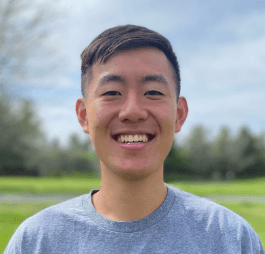
By Alex Yang
Graduate student at Southern Methodist University
By Soha Aslam
Principal Nuclear Engineer
8 minute read
Cancer research addresses one of the most devastating and widespread diseases that affects millions of people worldwide. Cancer is a complex group of diseases and ongoing research is essential to better understand its underlying causes, develop innovative treatments, and improve early detection methods. This research not only saves lives by advancing our ability to diagnose and treat cancer more effectively but also improves our knowledge of the fundamental workings of cellular biology, allowing for breakthroughs in fields beyond just cancer research.
Cancer research can be a particularly exciting field if you already have an interest in STEM. Although high school courses like AP Biology may provide an introduction to cancer, you don’t have to wait until college to dive deeper into the topic. A cancer research passion project can be a great way to learn on your own.
Finding the Right Cancer Research Passion Project For You
Even within the topic of cancer research there are many different directions you can go with your project. For example, you could focus your research on a specific kind of cancer and its nuances. You could also focus on different aspects of cancer research, like investigating what may cause cancer, how to treat cancer, how to detect cancer, and how cancers develop over time. Try to focus on one of these specific areas as opposed to doing a project about cancer as a whole. A more targeted approach will make it easier for you to do research and organize your findings.
13 Cancer Research Passion Project Ideas
1. on top of genetics - epigenetics in cancer.
Mutations within a cell are a driving force in cancer; however, it is not the only way a cell could become malignant. In this project, you will explore how epigenetic modifications (ie. DNA methylation or DNA oxidations) can facilitate cancer cell survival. This project could be conducted in multiple ways: a scientific blog, a review article, a brief video, or a podcast.
Idea by cancer research mentor Alejandra
2. Cancer deep dive
Different types of cancer, and even different subtypes, have drastically different outcomes. For example, patients with HPV-mediated cancers are more sensitized to radiation, meaning lower doses of treatment may be equally effective as higher doses but with fewer side effects. In this project, students can pick a specific type of cancer and do a deep-dive on the mutation that causes the cancer, the treatment, and current/future therapies.
Idea by cancer research mentor Kendra
3. How can RNA be used to treat cancer?
One class of new cancer therapies uses RNA molecules to specifically target cancer cells. In this project, you will explore RNA therapies currently in use. After learning about these therapies, you will then come up with a new target or approach for the use of an RNA therapy in treating cancer or another disease of your choice. Your findings can be summarized in a scientific paper or presentation.
Idea by cancer research mentor Rebecca
4. Essentiality of genes in pancreatic cancer
Certain genes are essential for all cancer cells to survive. However, some genes are only essential in certain cell type contexts. To figure out how to kill cancer cells of certain cell types, we can use publicly available data on the Broad Institute's Cancer Cell Line Dependency Map database . This database shows which genes are essential across thousands of cancer cell lines. For example, if you look at pancreatic cancer specifically, you can identify genes that are important for cell survival only in the pancreatic cancer context. Look at other cancers and learn about the genes that are essential for the cancer’s survival and present your findings.
Idea by cancer research mentor Lauren
5. Designing a novel CAR T cell therapy
Chimeric antigen receptor (CAR) T cells are immune cells genetically engineered to attack specific proteins implicated in cancer, autoimmune diseases, or viral infections. This project will challenge students to design a CAR T cell therapy for their disease of interest by 1) reviewing literature on antigen(s) specific to their chosen disease; 2) learning basics of T cell biology and genetic engineering; and 3) writing a research proposal to assess the safety and efficacy of their designer T cell therapy.
Idea by cancer research mentor Josh
6. Investigating the role of a particular gene in the development of breast cancer.
Breast cancer is a leading cause of cancer-related deaths in women, and understanding what causes its development is crucial for developing more effective treatments. In this project, you will investigate the role of a particular gene in the development of breast cancer, using online databases and other sources to collect data on the expression of the selected gene in normal and cancerous breast tissue. This project could involve the following steps: 1. Research the function of the selected gene and its potential role in cancer development. 2. Use online databases and other sources to collect data on the expression of the selected gene in normal and cancerous breast tissue. 3. Use bioinformatics tools to analyze the data and determine if the selected gene is differentially expressed in cancerous tissue. 4. Analyze the data and interpret the results, and write a scientific report summarizing the findings and their implications.
Idea by cancer research mentor Chanelle
Create a research project tailored to your interests and your schedule
Polygence pairs you with an expert mentor in your area of passion. Together, you work to create a high quality research project that is uniquely your own. We also offer options to explore multiple topics, or to showcase your final product!
7. Personalized disease markers
Cancer is a personalized disease - no two patients will have exactly the same cancer. This problem makes cancer difficult to treat and cure. Modern cancer research looks for disease markers specific to certain patients that may make them respond better to certain treatments. In this project, you can choose a cancer type and review the different markers known to inform patient treatment outcomes.
Idea by cancer research mentor Sarah
8. Dormant cancer cells
Cancer cells undergo a process called dormancy to evade immune surveillance, by which cancer cells are not actively undergoing the cell cycle process, allowing them to remain "asleep" within a patient's body. The major problem with dormant cancer cells is that once they "wake up", they spread quickly to other parts of the body and are resistant to treatment. Explore and learn about the concept of dormancy.
9. Understanding how cells in the tumor affect tumor growth
When researchers evaluate the cells present in a tumor, there are generally two main classes: cells that help the tumor grow (pro-tumor) and those that try to destroy the tumor (anti-tumor). As we start to learn more about which cell types are present in the tumor, we start to understand how the tumor evades our bodies natural defenses. These insights can also be used to develop new treatment strategies for patients with cancer. Writing a literature review on this topic will provide you with a thorough understanding of many aspects of immunology and gives you the opportunity to publish your research in a journal .
Idea by cancer research mentor Xanne
10. Cancer health disparities
Unfortunately, many studies have shown that race and gender can affect the level of care cancer patients receive which ultimately affects their survival chances. In this project, you can research a specific area of disparity and its effects on cancer patients and the treatment they receive. Next, you can propose a strategy to overcome the disparity using knowledge of cancer medicine and public health policy.
11. Decreasing risk of getting cancer
While there are many factors predisposing a person to getting cancer, it is important to share the ways we can work to control being exposed to certain risk factors. Students can explore these risk factors to prepare a review article, presentation, or community event to educate the next generation about how limiting factors such as sun exposure, poor diet, alcohol use, and getting genetic testing early if your family has a history of cancer, can decrease your risks of getting certain cancers.
Idea by cancer research mentor Carly
12. Exploring the connections between cancer, organ transplantation and pregnancy
For years, scientists have been trying to solve problems related to organ transplantation and cancer. When a patient receives a much-needed organ from a donor, the immune system can recognize the organ as foreign and attack it. However, when a patient develops cancerous cells, the immune system can fail to recognize that the cells don't belong, allowing the cancer to spread. Yet, during pregnancy, a mother is able to carry a fetus for 9 months even though half of its genetic material is not shared by the mother. Can cancer and pregnancy help us solve some of the challenges related to organ transplantation? Explore this question and share your findings.
Idea by cancer research mentor Amber
13. Exploring nuclear physics and radiation detection for cancer therapy
Last but not least, nuclear physics plays a pivotal role in cancer treatment, with applications like radiology, boron neutron capture therapy (BNCT), and the use of radioisotopes for diagnosis and treatment. Here are some project ideas in this realm:
Radiology and Cancer Imaging: Radiology, a branch of medical science that uses ionizing radiation, is a powerful tool for cancer diagnosis. Explore the various imaging techniques like X-rays, CT scans, and MRI that utilize radiation to detect and visualize tumors. Investigate the advancements in radiology technology and how it aids in early cancer detection and treatment planning.
Boron Neutron Capture Therapy (BNCT): BNCT is a cutting-edge cancer therapy that involves targeting tumor cells with boron-10-loaded compounds and irradiating them with thermal neutrons. This technique results in the release of high-energy alpha particles, specifically damaging cancer cells while sparing healthy tissue. Delve into the principles of BNCT, its potential applications, and the latest research in this field. Share your insights through a detailed report or a presentation.
Radioisotopes in Cancer Treatment: Radioisotopes are radioactive forms of elements that can be used in various cancer treatments. Investigate how radioisotopes like iodine-131, yttrium-90, and others are employed for targeted cancer therapy, such as radioiodine therapy for thyroid cancer. Explore the mechanisms, benefits, and challenges associated with using radioisotopes in cancer treatment. You can present your findings through a research paper, presentation, or even an educational video or podcasts.
By venturing into nuclear physics and radiation detection for cancer therapy, you can contribute to the understanding and advancement of non-invasive cancer treatments and diagnostics, making a significant impact in the field of oncology.
Idea by nuclear physicist research mentor Soha
How to Showcase Your Cancer Research Passion Project
After you’ve done the hard work of researching cancer, you should also dedicate time towards deciding how you want to showcase your project . There are many unique ways that you can showcase a project. Specifically for cancer research, you could write a research paper or do a literature review, or you could try to execute something more creative like a presentation with graphics or a podcast. The decision is up to you, but be sure that with whatever showcasing method that you choose, make sure that the hard work and effort that you put into your research comes through.
Examples of Cancer Research Passion Projects Completed by Polygence Students
Cancer research is a popular topic for Polygence students, and we wanted to showcase some of the great work that our students have done in the field!
Natalie’s project was a research paper she wrote about immunotherapies for breast cancer, which affects around 1 in 3 women.
Dnyanada did research into melanoma, a type of skin cancer, and a specific immunotherapy called Nivolumab. Dnyanada found through her research that patients who were treated with Nivolumab had specific gene expressions that could reveal whether the treatment was affecting the patient positively or negatively. Dnyanada then used machine learning models to predict whether certain patients would have a positive or negative response to Nivolumab.
Shravan worked on a project designing a CRISPR-Cas9n genetic therapy for Lynch syndrome (hereditary non-polyposis colorectal cancer). Shravan was able to present his project at Polygence’s 8th Symposium of Rising Scholars , and also created a series of blog posts, as well as a research paper to submit to journals.
Arif worked on a project modeling Boron Neutron Capture Therapy (BNCT) using an open source modeling tool called OpenMC. CT relies on the selective accumulation of boron-10 within tumor cells, followed by irradiation with thermal neutrons. Arif's modeling efforts likely encompass the detailed calculations of neutron flux, the behavior of boron-10 under irradiation, and the subsequent release of high-energy alpha particles within the tumor.
Complete a Cancer Related Research Project With Polygence
In this article, we covered how to pick the right cancer research project for you, shared some project ideas, and discussed best practices for how to showcase your project.
If you’re interested and inspired by cancer research and you’re interested in diving deeper, Polygence’s programs are a great place to start. You’ll be able to meet virtually one-on-one with a biology/cancer research mentor who can help you learn new concepts and brainstorm with you on how to showcase your passion project.
Related Content
How to Become a Cancer Researcher: Selena Lorrey's Journey
High School Project on AI in Cancer Research: Sia's Research Paper and Blog
High School Cancer Research Student Ojas Writes a 30-Page Paper
Genetic Engineering as an Effective Cancer Therapy: A Research Paper Focused on CRISPR
A Paper on the Relationship Between the Most Significant Breast Cancer Susceptibility Proteins, Aldehydes, and Prostate Cancer
Medical Research Project Ideas for High School Students
Get Matched with a Mentor
Interested in doing one of these exciting research projects? Click below to get matched with one of our expert mentors!
Upcoming Summer 2024 Application Deadline is April 14, 2024.
Click here to apply.

Featured Posts

10 Biochemistry Summer Programs for High School Students

Penn Medicine Summer Program for High School Students- Is It Worth It?

HackMIT's Blueprint 2024 - 10 Tips to Help You Win

Stanford's IFSS Program for High Schoolers- 8 Reasons Why You Should Apply

Early Action vs Early Decision - What Does This Mean for High School Students?

10 Reasons Why You Should Check Out a College Counseling Membership

Regeneron's High School Mentorship Program - Our Review

TACAC's 2024 Conference - Should You Attend?

10 Summer Language Immersion Programs for High School Students

10 Summer Music Programs for High School Students
25 Research Ideas in Chemistry for High School Students
Have you wanted to get into chemistry research, but didn’t know where to begin? Read this article to learn more on how you can start your own research project.
What Makes a Good Research Idea?
Before starting, having a good research idea will provide a firm foundation for your work. Before you begin, make sure to confirm if your research topic is:
What area are you addressing in your research project, and does it fill in some gap of knowledge? If your research has been done before or has been already thoroughly examined, then it’s unlikely your idea will be as compelling as an original paper that leaves room for future questions and innovations.
Interesting
Do you find the topic interesting? If you have passion in your work, you will be excited and engaged in your work, which others in the industry will definitely pick up on. If you don’t find your research interesting, it’s better to brainstorm which areas you’d be more passionate about.
Feasibility
Is the research doable? Make sure to take a deep look into your capabilities and resources, and use what’s available to you in order to pursue your research. While there are many projects that can be done at home or through the computer, you can reach out to a local college or laboratory if you’d like to get a more professional experience.
Okay, I Have a Research Idea, What’s Next?
Once you’ve picked a research idea, it may seem daunting on what to do next. You should develop a detailed research plan and reach out to teachers, professors, and scientists who can help you. Having a mentor can provide helpful comments on your research idea and your next steps.
For example, a mentored program like the Lumiere Research Scholar Program can be a great opportunity to experience the full research cycle. Those who are selected for the Lumiere Research Scholar Program are given 1-1 mentorship with top PhDs. Below, we share some of the chemistry research ideas that have been proposed by our research mentors.
Chemistry Research Ideas for High School Students
Research category #1 : energy and climate change.
Climate change has been one of the widely talked about topics in public discourse. With more media and political attention on this issue than ever before, it’s no wonder that there are many opportunities to explore how chemistry can be applied to help the planet. Therefore, researching in this field will yield potential benefits for society and beyond , making applications of this research especially compelling for passionate high school students.
1. Use green chemistry as a tool to achieve sustainability targets in the fields of energy, water remediation, agriculture or sensing.
2. Find novel chemicals that can be used to shape the next generation of batteries, green fuels, and energy harvesting.
3. Research materials can be developed to improve CO2 capture and Utilization (CCU).
4. Analyze different energy storage options currently available, and compare and contrast technologies' chemistries, performance, lifetime, cost, geographic and resource constraints, and more.
5. Learn the newest and most promising technologies in sustainability science, with a focus on how startups and the private sector are critical to our society's transition to a green future and how products are commercialized from lab to market.
Suggested by Lumiere PhD mentors at Harvard University, University of California, Berkeley, Yale University, and University of Cambridge.
Research Category #2 : Computation and Machine Learning
Data processing is becoming increasingly efficient, and especially in the advent of artificial intelligence systems, scientists are interested in learning how to apply new technologies to their line of work. If you’re looking for knowledge within computer science or computer engineering, these topics may stand out to you.
6. Apply machine learning for chemical challenges, such as how AI can bring benefits into the area of chemistry and how big data can be processed.
7. Merge chemistry with computational tools to design molecules and predict their properties.
8. Study molecular and biological systems via computational modeling, including finding the advantages and disadvantages of different techniques and types of computational analysis.
9. Implement machine learning for reaction optimization, process chemistry, reaction kinetics, mixing, scale-up and safety.
Suggested by Lumiere PhD mentors at Duke University, University of Cambridge, and University of Leeds.
Research Category #3 : Nanotechnology and Nanomaterials
The benefits of nanotechnology are clear – more developments in this field can lead to lower costs and stronger properties of materials. The area of technology is incredibly new, so if you want to get involved in a burgeoning research field , see if the following ideas interest you.
10. Conduct a general study on the focus on nanomaterials and their applications.
11. Understand how material nano-structure can create specific properties and take advantage of that "structure-property" understanding to engineer new materials.
12. Be exposed to the frontiers of material science and the host of meta-stable man-made materials with exotic properties.
Suggested by Lumiere PhD mentors at Technical University of Munich and Georgia Institute of Technology.
Research Category #4 : Chemical Reactions
One of the most major fundamental aspects of chemistry is understanding how different elements and molecules interact to create new products. Understanding more about how these reactions take place and which interactions are favored can yield better ideas on how to utilize them. If you’d like to better your chemistry skills, take a look at these topics:
13. Investigate how molecules are made in nature,such as what reactions are performed by enzymes to make natural products.
14. Study a reaction that changes color as it proceeds using your phone to measure the RGB-code evolution.
15. Delve into the synthesis of chemicals within organic chemistry, biochemistry, analytical chemistry.
16. Learn how to design, synthesize, and use molecular boxes for separating targeted compounds.
Suggested by Lumiere PhD mentors at Duke University and University of Cambridge.
Research Category #5 : Drug Discovery
Unsurprisingly, pharmaceuticals heavily utilizes the concepts of chemistry to create life saving drugs and treatments for people worldwide. If you’re interested in learning how chemical reactions can treat diseases within the human body , see below for more information.
17. Communicate the causes of drug resistance in tuberculosis, HIV/AIDS, or another infectious disease
18. Explore the connections between drug discovery, pharmaceutical development, flow chemistry, organic synthesis, electrochemistry, photochemistry, and biochemical and enzymatic synthesis.
19. Conduct a detailed research on proteins, their role in human disease, and how understanding protein structure can inform drug discovery.
20. Observe the characteristics of good drug candidates and the biological experiments performed to prove clinical viability.
21. Determine the role small molecules play in imaging, labeling, target identification, inhibiting native protein functions and facilitating foreign ones, especially in new techniques being used to understand disease pathways.
Suggested by Lumiere PhD mentors at Harvard University, Stanford University, University of Leeds, Cornell University, and Johns Hopkins University.
Research Category #6 : Life Sciences
Beyond the scope of drug discovery, how does chemistry support life itself? Biochemistry is an intriguing field that aims to answer how biological processes take place , and more discoveries are taking place everyday on the mystery of life. If you’d like to learn how biology and chemistry work in tandem, these research topics may be the right fit for you.
22. Develop theory of chemical kinetics and how they are used to study reactions that are critically important for biology to maintain life.
23. Learn the biological processes of living cells such as human cells, yeast, bacteria, and such.
24. Utilize different techniques to determine structures of biomolecules present in humans.
25. Employ molecular modeling and simulation techniques to tackle problems that involve the function or interactions of a protein.
Suggested by Lumiere PhD mentors at University of Illinois at Urbana-Champaign, Duke University, University of Cambridge, and University of Oxford.
This article provides only a small glimpse into the endless possibilities of chemistry research, but hopefully, the variety of different fields that chemistry is involved in piqued your interest; whether you’d like to learn more about climate change, computers, or biology, there is definitely an applicable chemistry research project that you can do.
If you are passionate about chemistry and hope to do advanced research under expert mentorship, consider applying to the Lumiere Scholar Program . You can find the application form here .
Lydia is currently a sophomore at Harvard University, studying Molecular and Cellular Biology. During high school, she pursued engineering activities like attending the Governor's School of Engineering and Technology. In her spare time, she likes to create digital art while listening to music.
- ABOUT/CONTACT
- CONTRIBUTORS
- MEDIA COVERAGE
- NYIT MAGAZINE
- NYIT.EDU HOME
New York Tech Awards Mini-Research Grants to High School Students for Fifth Straight Year
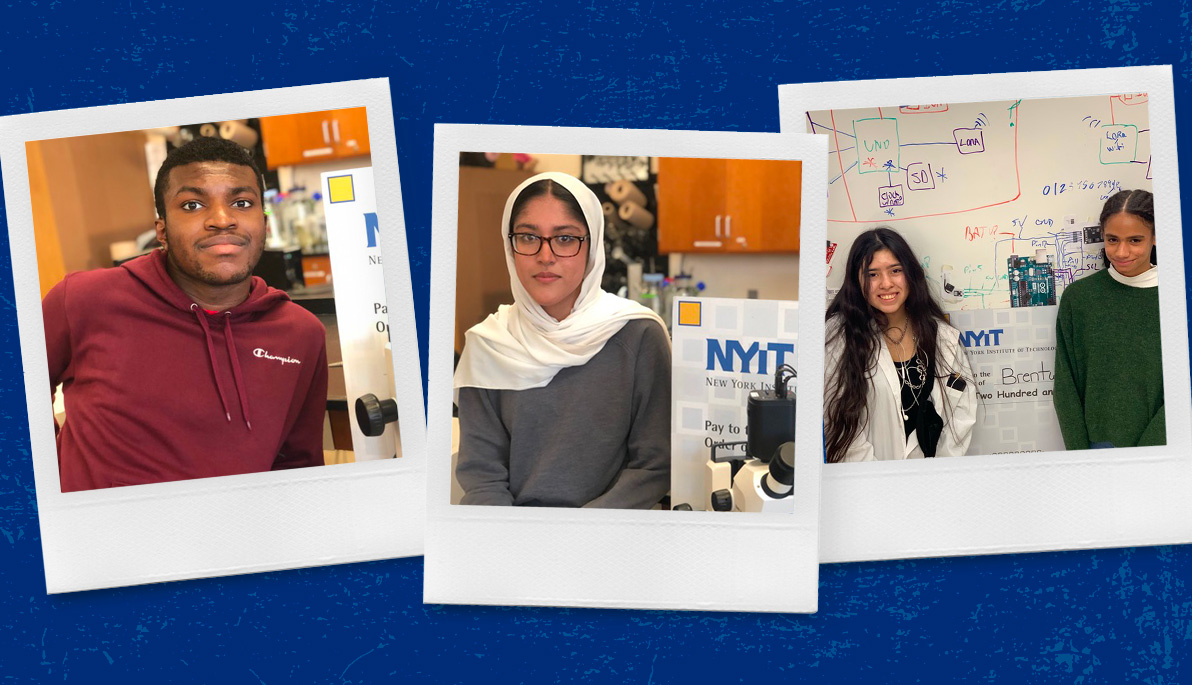
- Related Topics
February 10, 2022
Pictured from left: Andrew Whittingham, Dua Hanif, Isabel Chilpe, and Amanda Sanchez from Brentwood High School.
Underscoring its commitment to undergraduate research and to building a pipeline for students to pursue science, technology, engineering and math (STEM) fields, New York Institute of Technology has awarded 30 research projects from 20 high schools with New York Tech Mini-Research Grant Awards (MRGA). Now in its fifth year, the MRGA program received a total of 127 research project submissions in 2021.
The Mini-Research Grant Awards of $300, made possible through the support of Voya Foundation, are applied to expenses incurred by the high school researchers during new or continuing research in STEM and related disciplines in spring or fall 2022. The participants must have plans to compete in a science competition and present their work in person or remotely at New York Tech.
“Interest and submission quality were strong again this year, with students and teachers from high schools well beyond the local area continuing to apply,” notes Niharika Nath, Ph.D. , professor of biological and chemical sciences, who oversees the MRGA program. “We’re proud that New York Tech’s commitment to undergraduate research and to diversifying the STEM pipeline at all academic and socioeconomic levels is encouraging research activity.”
The New York Tech MRGA review committee, comprising Nath along with Rosemary Gallagher, D.P.T., Ph.D. , associate professor of physical therapy, Wenjia Li, Ph.D. , associate professor of computer science, and Amy Bravo , senior director of Career Success and Experiential Education, selected one or more projects to be funded from local high schools including Bethpage, Brentwood, Cold Spring Harbor, Connetquot, North Shore, Roslyn, Sacred Heart, Stella K. Abraham, and Valley Stream North in Long Island; Midwood High School in Brooklyn; Queens High School for the Sciences at York College; Bergen County Academies, Bergen County Technical High School, Lakeland Regional High School, Pequannock Township High School, and Toms River High School North in New Jersey; and Norwich Technical in Connecticut. In addition, researchers from outside the New York metropolitan area representing St. Joseph’s Academy in St. Louis, Missouri, were selected to receive grants.
New York Tech undergraduate and graduate students assisted in the grant review process, including D.P.T. (physical therapy) students Aissa Beaton and Wilber Parada ; biology majors Ajin Varghese and Dono Shodieva , and biomedical engineering student Mary Sanchez .
Some topics of research projects selected for MRGA funding include:
- What is the Effect of Dietary Carbohydrate Intake on Performance in Female Endurance Athletes? (Valley Stream North High School)
- Biodegradation of Polystyrene by Bacteria Found in The Gut of Tenebrio molitor Larvae (mealworm beetle) (Norwich Technical High School)
- Developing a Hydroponic System with the Recycling of Greywater (Bethpage High School)
- Combating Covid with an Electroceutical Plant-based Textile (Bergen County Academies)
- Numeracy and the Communication of Medical Risk (North Shore High School)
- The Effect of External Factors on the Perception and Taste of Food (Midwood High School)
- Effect of Organic Fertilizers vs. Synthetic Fertilizers on Cyanobacteria (St. Joseph’s Academy)
- Investigating Factors that Could Alter the Genetic Impact of APOE on Alzheimer’s Disease (Connetquot High School)
- Effect of Ionic Liquids on Perovskite Solar Cell Stability (Bergen County Academies)
- The Impact of Eutrophication on the Ribbed Mussel ( Geukensia demissa ) and Their Host Plant Spartina alterniflora (Brentwood High School)
- “The Crumb Rubber Conundrum:” The Effects of Heavy Metal Leaching on Terrestrial Invertebrates (Sacred Heart Academy)
- Cost-Effective Air Quality Monitoring Using Readily Available Programming Interfaces (Brentwood High School)
- Smart Mask Respiratory Protection, Air Quality Monitoring, and Reporting System (Stella K. Abraham Girls High School)
- Effects of Plant Substances in Inhibiting Prominent Pathogenic Oral Bacteria (Toms River High School North)
- RAMOSA3 Undergoes Liquid-liquid Phase Separation to Modulate Inflorescence Development in Maize (Cold Spring Harbor High School)
Applications for the sixth annual Mini-Research Grant Award for high school students will open in fall 2022.
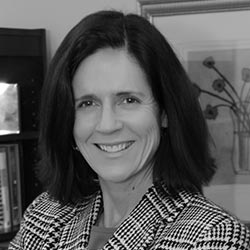
By Libby Sullivan
More Features
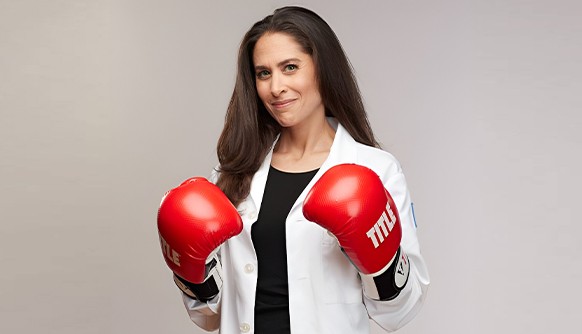
April 03, 2024
Q&A: Causes, Challenges, and Treatments for Parkinson’s
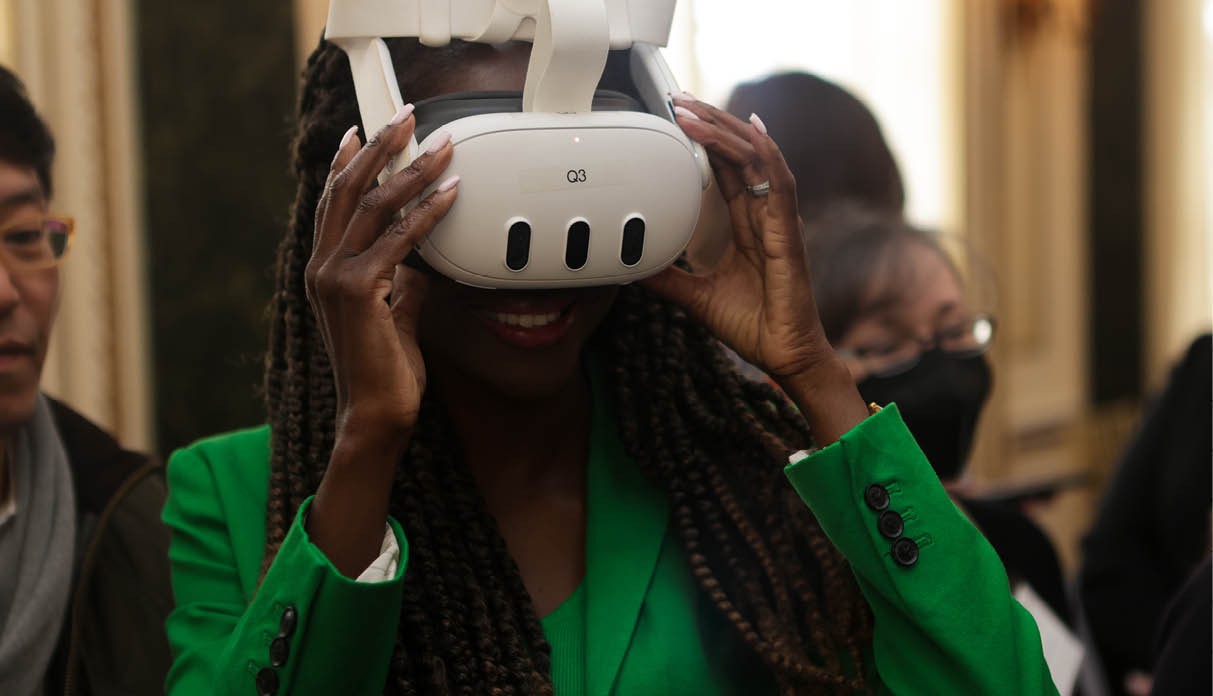
April 01, 2024
Celebrating Research and Scholarship
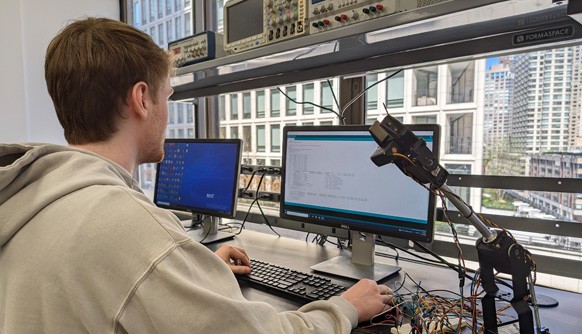
March 29, 2024
Renovated Engineering Labs Unveiled on New York City Campus
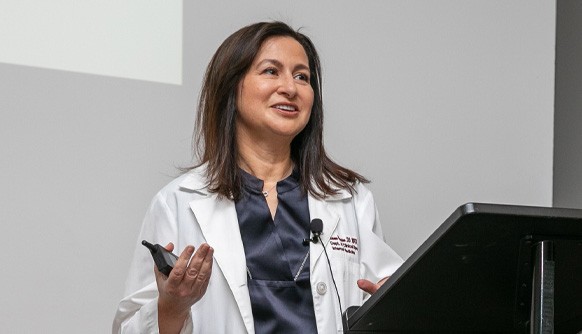
March 27, 2024
NYITCOM Physician: Diabetes Patients Should Heed FDA Warning
By continuing to use the website, you consent to analytics tracking per NYIT's Privacy Statement Accept Cookies
- Research Skills

50 Mini-Lessons For Teaching Students Research Skills
Please note, I am no longer blogging and this post hasn’t updated since April 2020.
For a number of years, Seth Godin has been talking about the need to “ connect the dots” rather than “collect the dots” . That is, rather than memorising information, students must be able to learn how to solve new problems, see patterns, and combine multiple perspectives.
Solid research skills underpin this. Having the fluency to find and use information successfully is an essential skill for life and work.
Today’s students have more information at their fingertips than ever before and this means the role of the teacher as a guide is more important than ever.
You might be wondering how you can fit teaching research skills into a busy curriculum? There aren’t enough hours in the day! The good news is, there are so many mini-lessons you can do to build students’ skills over time.
This post outlines 50 ideas for activities that could be done in just a few minutes (or stretched out to a longer lesson if you have the time!).
Learn More About The Research Process
I have a popular post called Teach Students How To Research Online In 5 Steps. It outlines a five-step approach to break down the research process into manageable chunks.

This post shares ideas for mini-lessons that could be carried out in the classroom throughout the year to help build students’ skills in the five areas of: clarify, search, delve, evaluate , and cite . It also includes ideas for learning about staying organised throughout the research process.
Notes about the 50 research activities:
- These ideas can be adapted for different age groups from middle primary/elementary to senior high school.
- Many of these ideas can be repeated throughout the year.
- Depending on the age of your students, you can decide whether the activity will be more teacher or student led. Some activities suggest coming up with a list of words, questions, or phrases. Teachers of younger students could generate these themselves.
- Depending on how much time you have, many of the activities can be either quickly modelled by the teacher, or extended to an hour-long lesson.
- Some of the activities could fit into more than one category.
- Looking for simple articles for younger students for some of the activities? Try DOGO News or Time for Kids . Newsela is also a great resource but you do need to sign up for free account.
- Why not try a few activities in a staff meeting? Everyone can always brush up on their own research skills!
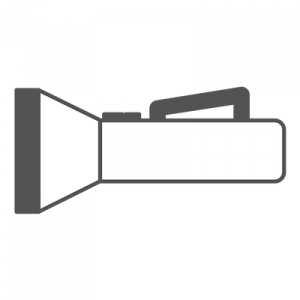
- Choose a topic (e.g. koalas, basketball, Mount Everest) . Write as many questions as you can think of relating to that topic.
- Make a mindmap of a topic you’re currently learning about. This could be either on paper or using an online tool like Bubbl.us .
- Read a short book or article. Make a list of 5 words from the text that you don’t totally understand. Look up the meaning of the words in a dictionary (online or paper).
- Look at a printed or digital copy of a short article with the title removed. Come up with as many different titles as possible that would fit the article.
- Come up with a list of 5 different questions you could type into Google (e.g. Which country in Asia has the largest population?) Circle the keywords in each question.
- Write down 10 words to describe a person, place, or topic. Come up with synonyms for these words using a tool like Thesaurus.com .
- Write pairs of synonyms on post-it notes (this could be done by the teacher or students). Each student in the class has one post-it note and walks around the classroom to find the person with the synonym to their word.

- Explore how to search Google using your voice (i.e. click/tap on the microphone in the Google search box or on your phone/tablet keyboard) . List the pros and cons of using voice and text to search.
- Open two different search engines in your browser such as Google and Bing. Type in a query and compare the results. Do all search engines work exactly the same?
- Have students work in pairs to try out a different search engine (there are 11 listed here ). Report back to the class on the pros and cons.
- Think of something you’re curious about, (e.g. What endangered animals live in the Amazon Rainforest?). Open Google in two tabs. In one search, type in one or two keywords ( e.g. Amazon Rainforest) . In the other search type in multiple relevant keywords (e.g. endangered animals Amazon rainforest). Compare the results. Discuss the importance of being specific.
- Similar to above, try two different searches where one phrase is in quotation marks and the other is not. For example, Origin of “raining cats and dogs” and Origin of raining cats and dogs . Discuss the difference that using quotation marks makes (It tells Google to search for the precise keywords in order.)
- Try writing a question in Google with a few minor spelling mistakes. What happens? What happens if you add or leave out punctuation ?
- Try the AGoogleADay.com daily search challenges from Google. The questions help older students learn about choosing keywords, deconstructing questions, and altering keywords.
- Explore how Google uses autocomplete to suggest searches quickly. Try it out by typing in various queries (e.g. How to draw… or What is the tallest…). Discuss how these suggestions come about, how to use them, and whether they’re usually helpful.
- Watch this video from Code.org to learn more about how search works .
- Take a look at 20 Instant Google Searches your Students Need to Know by Eric Curts to learn about “ instant searches ”. Try one to try out. Perhaps each student could be assigned one to try and share with the class.
- Experiment with typing some questions into Google that have a clear answer (e.g. “What is a parallelogram?” or “What is the highest mountain in the world?” or “What is the population of Australia?”). Look at the different ways the answers are displayed instantly within the search results — dictionary definitions, image cards, graphs etc.
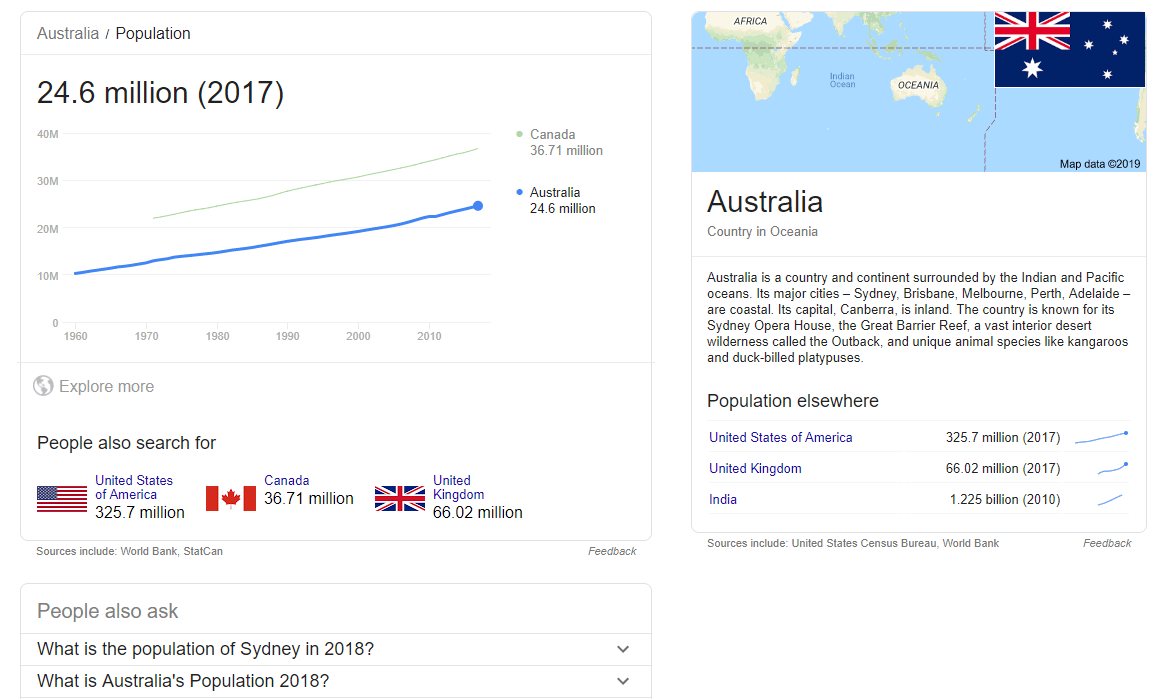
- Watch the video How Does Google Know Everything About Me? by Scientific American. Discuss the PageRank algorithm and how Google uses your data to customise search results.
- Brainstorm a list of popular domains (e.g. .com, .com.au, or your country’s domain) . Discuss if any domains might be more reliable than others and why (e.g. .gov or .edu) .
- Discuss (or research) ways to open Google search results in a new tab to save your original search results (i.e. right-click > open link in new tab or press control/command and click the link).
- Try out a few Google searches (perhaps start with things like “car service” “cat food” or “fresh flowers”). A re there advertisements within the results? Discuss where these appear and how to spot them.
- Look at ways to filter search results by using the tabs at the top of the page in Google (i.e. news, images, shopping, maps, videos etc.). Do the same filters appear for all Google searches? Try out a few different searches and see.
- Type a question into Google and look for the “People also ask” and “Searches related to…” sections. Discuss how these could be useful. When should you use them or ignore them so you don’t go off on an irrelevant tangent? Is the information in the drop-down section under “People also ask” always the best?
- Often, more current search results are more useful. Click on “tools” under the Google search box and then “any time” and your time frame of choice such as “Past month” or “Past year”.
- Have students annotate their own “anatomy of a search result” example like the one I made below. Explore the different ways search results display; some have more details like sitelinks and some do not.
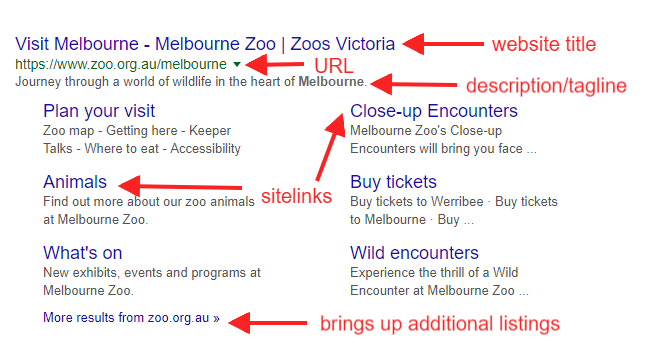
- Find two articles on a news topic from different publications. Or find a news article and an opinion piece on the same topic. Make a Venn diagram comparing the similarities and differences.
- Choose a graph, map, or chart from The New York Times’ What’s Going On In This Graph series . Have a whole class or small group discussion about the data.
- Look at images stripped of their captions on What’s Going On In This Picture? by The New York Times. Discuss the images in pairs or small groups. What can you tell?
- Explore a website together as a class or in pairs — perhaps a news website. Identify all the advertisements .
- Have a look at a fake website either as a whole class or in pairs/small groups. See if students can spot that these sites are not real. Discuss the fact that you can’t believe everything that’s online. Get started with these four examples of fake websites from Eric Curts.
- Give students a copy of my website evaluation flowchart to analyse and then discuss as a class. Read more about the flowchart in this post.
- As a class, look at a prompt from Mike Caulfield’s Four Moves . Either together or in small groups, have students fact check the prompts on the site. This resource explains more about the fact checking process. Note: some of these prompts are not suitable for younger students.
- Practice skim reading — give students one minute to read a short article. Ask them to discuss what stood out to them. Headings? Bold words? Quotes? Then give students ten minutes to read the same article and discuss deep reading.
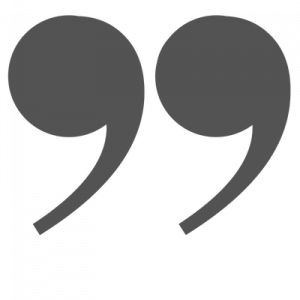
All students can benefit from learning about plagiarism, copyright, how to write information in their own words, and how to acknowledge the source. However, the formality of this process will depend on your students’ age and your curriculum guidelines.
- Watch the video Citation for Beginners for an introduction to citation. Discuss the key points to remember.
- Look up the definition of plagiarism using a variety of sources (dictionary, video, Wikipedia etc.). Create a definition as a class.
- Find an interesting video on YouTube (perhaps a “life hack” video) and write a brief summary in your own words.
- Have students pair up and tell each other about their weekend. Then have the listener try to verbalise or write their friend’s recount in their own words. Discuss how accurate this was.
- Read the class a copy of a well known fairy tale. Have them write a short summary in their own words. Compare the versions that different students come up with.
- Try out MyBib — a handy free online tool without ads that helps you create citations quickly and easily.
- Give primary/elementary students a copy of Kathy Schrock’s Guide to Citation that matches their grade level (the guide covers grades 1 to 6). Choose one form of citation and create some examples as a class (e.g. a website or a book).
- Make a list of things that are okay and not okay to do when researching, e.g. copy text from a website, use any image from Google images, paraphrase in your own words and cite your source, add a short quote and cite the source.
- Have students read a short article and then come up with a summary that would be considered plagiarism and one that would not be considered plagiarism. These could be shared with the class and the students asked to decide which one shows an example of plagiarism .
- Older students could investigate the difference between paraphrasing and summarising . They could create a Venn diagram that compares the two.
- Write a list of statements on the board that might be true or false ( e.g. The 1956 Olympics were held in Melbourne, Australia. The rhinoceros is the largest land animal in the world. The current marathon world record is 2 hours, 7 minutes). Have students research these statements and decide whether they’re true or false by sharing their citations.
Staying Organised
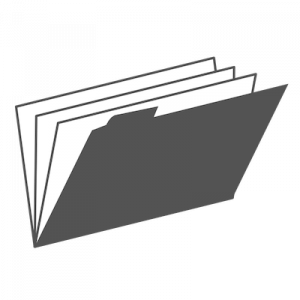
- Make a list of different ways you can take notes while researching — Google Docs, Google Keep, pen and paper etc. Discuss the pros and cons of each method.
- Learn the keyboard shortcuts to help manage tabs (e.g. open new tab, reopen closed tab, go to next tab etc.). Perhaps students could all try out the shortcuts and share their favourite one with the class.
- Find a collection of resources on a topic and add them to a Wakelet .
- Listen to a short podcast or watch a brief video on a certain topic and sketchnote ideas. Sylvia Duckworth has some great tips about live sketchnoting
- Learn how to use split screen to have one window open with your research, and another open with your notes (e.g. a Google spreadsheet, Google Doc, Microsoft Word or OneNote etc.) .
All teachers know it’s important to teach students to research well. Investing time in this process will also pay off throughout the year and the years to come. Students will be able to focus on analysing and synthesizing information, rather than the mechanics of the research process.
By trying out as many of these mini-lessons as possible throughout the year, you’ll be really helping your students to thrive in all areas of school, work, and life.
Also remember to model your own searches explicitly during class time. Talk out loud as you look things up and ask students for input. Learning together is the way to go!
You Might Also Enjoy Reading:
How To Evaluate Websites: A Guide For Teachers And Students
Five Tips for Teaching Students How to Research and Filter Information
Typing Tips: The How and Why of Teaching Students Keyboarding Skills
8 Ways Teachers And Schools Can Communicate With Parents
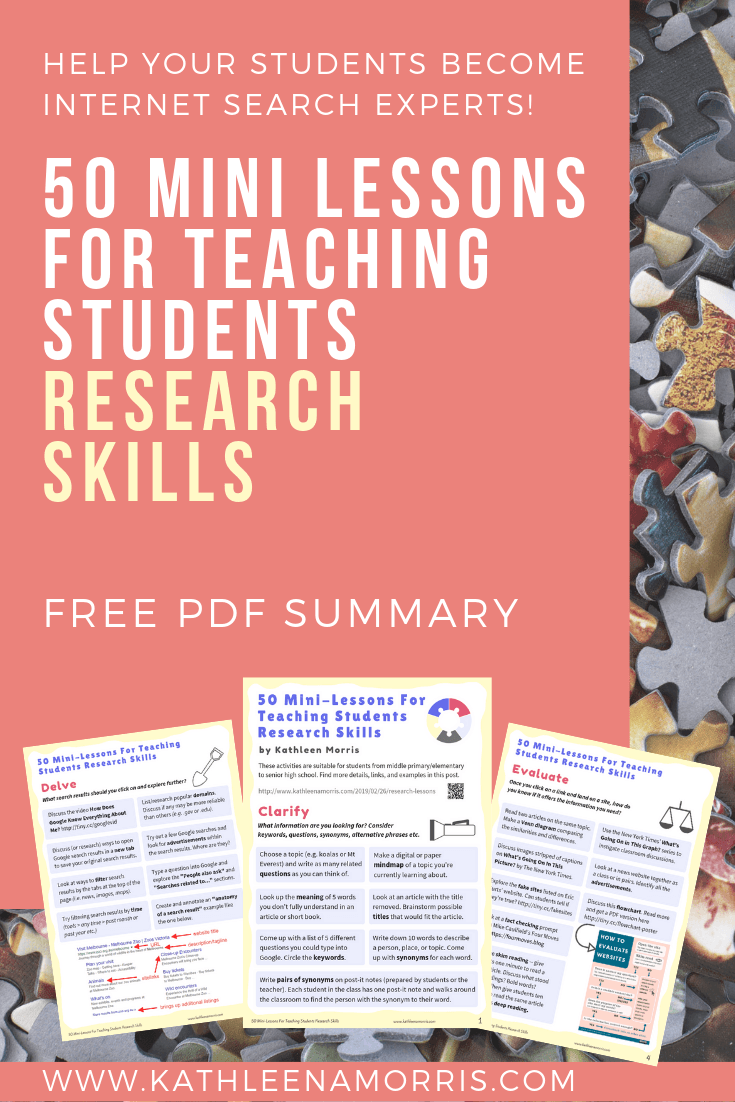
10 Replies to “50 Mini-Lessons For Teaching Students Research Skills”
Loving these ideas, thank you
This list is amazing. Thank you so much!
So glad it’s helpful, Alex! 🙂
Hi I am a student who really needed some help on how to reasearch thanks for the help.
So glad it helped! 🙂
seriously seriously grateful for your post. 🙂
So glad it’s helpful! Makes my day 🙂
How do you get the 50 mini lessons. I got the free one but am interested in the full version.
Hi Tracey, The link to the PDF with the 50 mini lessons is in the post. Here it is . Check out this post if you need more advice on teaching students how to research online. Hope that helps! Kathleen
Best wishes to you as you face your health battler. Hoping you’ve come out stronger and healthier from it. Your website is so helpful.
Comments are closed.

High School Students Thrive as Researchers
Authentic exploratory research hones students’ investigation and analysis skills..
Posted April 1, 2024 | Reviewed by Monica Vilhauer
- Why Education Is Important
- Find a Child Therapist

This post is Part I in a series.
I got to speak with students at Laguna Beach High School (LBHS) recently when giving a career talk there. They kept asking me advanced questions about conducting studies, writing, and science, and they spoke with passion about their own research projects. I was taken aback by how much these high school teens sounded like my adult college students and peers. They kept mentioning “AER”, and I had to learn more.
LBHS’s Authentic Exploratory Research (AER) Program is an independent research course inspired by Palo Alto Unified School District’s Advanced Authentic Research Program. In AER, students are paired with adult mentors (such as LBUSD staff, industry experts, and academics) who assist the teens in researching their own big questions in fields of their choice. Students spend about 60 hours per semester on coursework that includes both instruction and working on each project itself.
No such courses were offered at LBHS when I graduated there back in 1990, and I wonder how much sooner I could have enjoyed my career as a researcher if I had gotten to participate in AER as a youth. Though the program was introduced in 2019 by Laguna Beach Unified School District (LBUSD) Superintendent Jason Viloria, Ed.D., Jun Shen is the passionate teacher and edtech coordinator who runs it. I had the pleasure of partnering with Shen for an interview series where we’ll first explore how AER works before hearing from students about their experiences with AER honing skills for future success. Students’ feedback (in interviews to follow) and Shen’s answers (which follow each question below) can help others implement such a program.
Jenny Grant Rankin: What were the biggest challenges to implementing a successful AER program, and how did you tackle them?
Jun Shen: The biggest ongoing challenge is to find the balance between respecting the students’ individual freedom in their projects on one hand, and on the other, closely managing the students so they’d make adequate progress. Tackling this is an iterative process. Through the last four years, I have tried many different methods like online journaling, different grading rubrics and requirements, different communication protocols, and it seems to be steadily getting better.
JGR: When pairing students with adult mentors, how do you find and secure mentors who are appropriate for students' different interests?
JS: We have a dedicated Mentor Coordinator for AER, at first the ASB Director Jennifer Lundblad, then our District’s Career Education Coordinator Kellee Shearer. After students register for AER in March, we interview them in April and May to get a good feel for their field of interest, and Kellee spends the summer finding them mentors.
JGR: When speaking to your students about AER, I was impressed by the sophistication with which they discussed their studies. What was the most powerful strategy you used to help high schoolers understand research concepts that are hard for even college students to grasp?
JS: Most AER students are definitely wise beyond their years but I can’t claim credit for this one. It’s definitely a team effort, with a splash of selection bias thrown in. Most (though not all) students who take on the challenge of AER are already high-performing and highly-motivated students; thus, they’ve already learned a lot of the research and analysis skills in some of their other upper-level classes. In addition to that, we have a full-time Library Media Specialist, first Stephanie Gamache then Glen Warren, who works with the students to help them find what they need. Their mentor is another obviously valuable asset. As for me, I do very little whole-group, one-size-fits-all instruction about research and data analysis. Most of the students’ research methodologies are created individually with my advice.
JGR: What can you tell educators who are nervous about giving students so much independence and freedom in a course?
JS: First, be curious. If you love learning new things, then you’ll have a great time with your students as you explore some obscure topics together. The more you communicate that you’re personally invested in their study, the harder they will work with you. Second, it won’t be perfect your first year and that’s OK. Looking back, my first year running AER was rather lackluster, with a sizable portion of students dropping out or barely finishing their projects. Every year we learn our lessons and improve the course for the following year. Third, don’t reinvent the wheel. We based our program on Palo Alto USD’s program and, year after year, have modified it to suit our culture and needs. Start with their or our curriculum and see where it leads you.
JGR: What else should readers know about AER?
JS: It’s one of the highlights of my career. I’ve always been that kid who watched as many Discovery Channel Documentaries as I could because I loved learning about everything. I never thought that I’d get to geek out with kids about Aerospace Engineering and Fashion Design in a high school teaching job!
I’ve always been that kid, too. It’s heartwarming to learn how AER can be as rewarding for staff as it is for students, who we’ll hear from next. To continue reading, look for Part II.

Jenny Grant Rankin, Ph.D., is a Fulbright Specialist for the U.S. Department of State.
- Find a Therapist
- Find a Treatment Center
- Find a Support Group
- International
- New Zealand
- South Africa
- Switzerland
- Asperger's
- Bipolar Disorder
- Chronic Pain
- Eating Disorders
- Passive Aggression
- Personality
- Goal Setting
- Positive Psychology
- Stopping Smoking
- Low Sexual Desire
- Relationships
- Child Development
- Therapy Center NEW
- Diagnosis Dictionary
- Types of Therapy

Understanding what emotional intelligence looks like and the steps needed to improve it could light a path to a more emotionally adept world.
- Coronavirus Disease 2019
- Affective Forecasting
- Neuroscience
- The Vice Chancellor and Dean
- Facts and Figures
- Our Departments
- Zachry Engineering Education Complex
- Advising and Support
- Degree Programs
- Engineering Academies
- Online Degrees by Department
- Online Courses
- Engineering Global Programs
- Admissions and Aid
- Undergraduate Admissions
- Graduate Admissions
- Transfer Students
- Entry to a Major
- Explore Engineering Career Paths
- Visit With Us
- Student Life
- Find Your Community
- Get Creative
- Interact with Industry
- Solve Problems
- SuSu and Mark A. Fischer '72 Engineering Design Center
- Meloy Engineering Innovation and Entrepreneurship Program
- Undergraduate Research
- Autonomy and Robotics
- Education and Training Research
- Energy Systems and Services Research
- Health Care Research
- Infrastructure Research
- Materials and Manufacturing Research
- National Security and Safety Research
- Space Engineering
- Partner With Us
- PK-12 and Educators
- Researchers
- Reach Our Divisions
Igniting Innovation and Empowering Tomorrow's STEM Leaders
April 4, 2024 By Lauren Jenkins
- Campus Community
- College of Engineering

More than 1,200 middle school and high school students from across Texas traveled to College Station from March 22-23, 2024, to showcase their science and engineering projects at the Texas Science and Engineering Fair (TXSEF) .
Students competed at regional science and engineering fairs from January to March before advancing to the state fair held at Texas A&M University. This year’s fair was held at the Texas A&M University Student Recreation Center with an awards ceremony at Rudder Auditorium. It was co-sponsored by the Texas Workforce Commission, ExxonMobil and Texas A&M Engineering.
"The Texas Science and Engineering Fair is a celebration of innovation and boundless creativity, of finalists as they proudly showcase their research skills and projects in science and engineering,” said Dr. Cindy Lawley, assistant vice chancellor for academic and outreach programs for Texas A&M Engineering. “We witness not only the culmination of their hard work but also the unwavering support from dedicated families and educators who are inspiring a new generation of thinkers and innovators poised to shape the future with their ingenuity and determination."
Night at the ZACH
To kick off the weekend, TXSEF participants and their families — nearly 6,000 people —descended upon the Zachry Engineering Education Complex (ZACH) to experience Night at the ZACH. Hosted inside and outside Zachry, Night at the ZACH features exhibitors showcasing their departments, organizations, current projects, and/or expertise with hands-on activities designed to get students pumped about engineering and science.
Night at the ZACH ignites inspiration, fostering connections that transcend disciplines and ignite a passion for pushing the boundaries of knowledge and possibility.
Crowd favorites included the Lockheed Martin F-35 Cockpit Demonstration Simulator; ExxonMobil’s robotic dog Sparky; NASA’s Exploration trailer; Dell Tech Rally Mobile; and photo opportunities with Reveille X, the First Lady of Aggieland.
"At Night at the ZACH, TXSEF finalists have the opportunity to engage with industry and academia, fueling their curiosity and igniting new avenues of exploration. Yet, beyond the excitement of discovery lies a moment of celebration — a celebration of their remarkable journey to the Texas Science and Engineering Fair,” said Shelly Tornquist, director of Spark! PK-12 Engineering Education Outreach. “Night at the ZACH ignites inspiration, fostering connections that transcend disciplines and ignite a passion for pushing the boundaries of knowledge and possibility."
In addition to student organizations like the Texas A&M Solar Racing Team and the Texas A&M Sounding Rocketry Team, Night at the ZACH welcomed senior capstone projects from the Department of Electrical & Computer Engineering. Students shared information about their projects, academic journeys, and experiences as engineering students.
Competition Day
On competition day, finalists presented their projects to over 350 judges with expertise in fields ranging from physical sciences to engineering to life sciences. Finalists competed as an individual or a team in either the junior division (middle school students) or senior division (high school students), where they presented on their project’s scientific basis, the interpretation and limitations of the results, and their conclusions.

"TXSEF is more than just a culmination of months of hard work; it's a day where young minds converge, showcasing their ingenuity and dedication to solving the world's most pressing challenges,” Tornquist said. “As students present their research and projects, the atmosphere is electric with innovation and determination. Each presentation is not just a moment in time but a testament to the endless possibilities that STEM offers."
Several special awards and scholarships were awarded to select projects on the competition floor. These awards were supported by TXSEF sponsors and industry partners and recognized before the awards ceremony.
After a full day of judging, finalists and families made their way to Rudder Auditorium, filling it to capacity. The Spark! PK-12 Engineering Education Outreach robot Spark-E entertained the crowd with dancing and games.
In addition to first through third place awards in the 22 categories in both junior and senior divisions, best of state for both life sciences and physical sciences was awarded in both divisions, plus an honorable mention for each category.
Finalists from the senior division were selected to attend the Governor's Science and Technology Champions Academy and finalists from the junior division were selected to attend the Thermo Fisher Scientific Junior Innovators Challenge (JIC). Twelve (12) projects from the senior division advance to the Regeneron International Science and Engineering Fair (ISEF) held May 11-17, 2024, in Los Angeles, Calif.
- Facebook Facebook
- Twitter Twitter
- LinkedIn LinkedIn
- Email Email
- Print Print

Suggested Searches
- Climate Change
- Expedition 64
- Mars perseverance
- SpaceX Crew-2
- International Space Station
- View All Topics A-Z
Humans in Space
Earth & climate, the solar system, the universe, aeronautics, learning resources, news & events.

2024 Total Solar Eclipse Broadcast
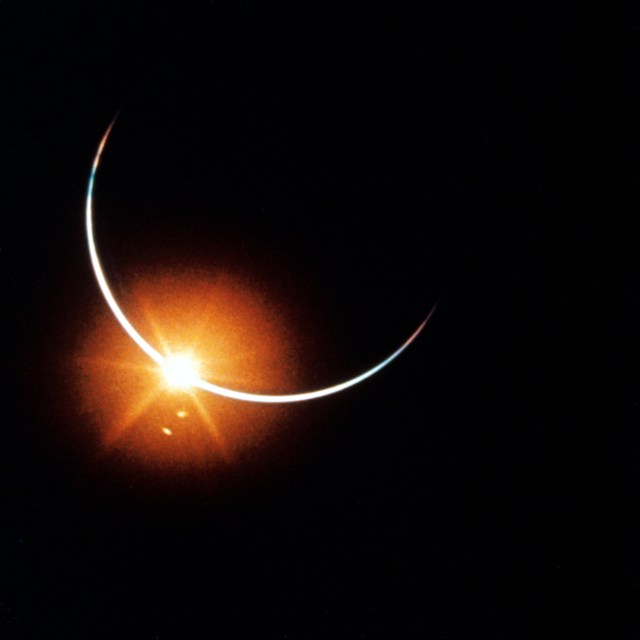
Eclipses Near and Far
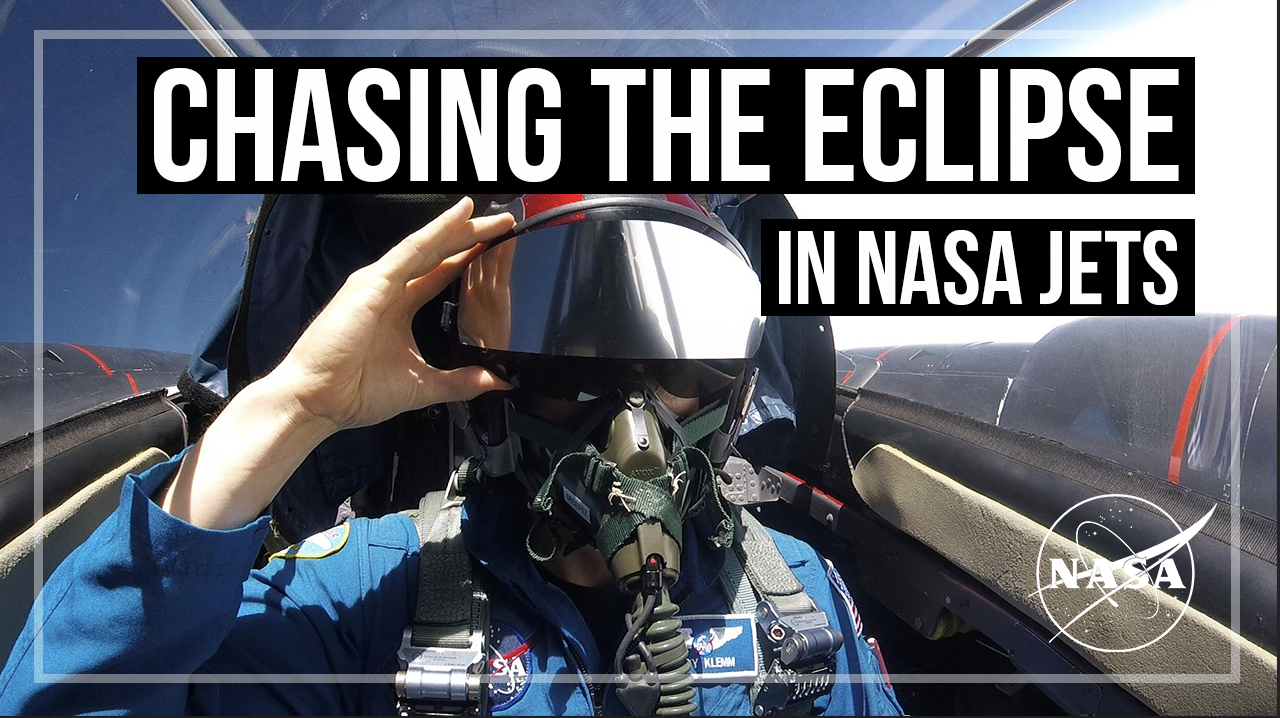
Scientists Pursue the Total Solar Eclipse with NASA Jet Planes
- Search All NASA Missions
- A to Z List of Missions
- Upcoming Launches and Landings
- Spaceships and Rockets
- Communicating with Missions
- James Webb Space Telescope
- Hubble Space Telescope
- Why Go to Space
- Astronauts Home
- Commercial Space
- Destinations
- Living in Space
- Explore Earth Science
- Earth, Our Planet
- Earth Science in Action
- Earth Multimedia
- Earth Science Researchers
- Pluto & Dwarf Planets
- Asteroids, Comets & Meteors
- The Kuiper Belt
- The Oort Cloud
- Skywatching
- The Search for Life in the Universe
- Black Holes
- The Big Bang
- Dark Energy & Dark Matter
- Earth Science
- Planetary Science
- Astrophysics & Space Science
- The Sun & Heliophysics
- Biological & Physical Sciences
- Lunar Science
- Citizen Science
- Astromaterials
- Aeronautics Research
- Human Space Travel Research
- Science in the Air
- NASA Aircraft
- Flight Innovation
- Supersonic Flight
- Air Traffic Solutions
- Green Aviation Tech
- Drones & You
- Technology Transfer & Spinoffs
- Space Travel Technology
- Technology Living in Space
- Manufacturing and Materials
- Science Instruments
- For Kids and Students
- For Educators
- For Colleges and Universities
- For Professionals
- Science for Everyone
- Requests for Exhibits, Artifacts, or Speakers
- STEM Engagement at NASA
- NASA's Impacts
- Centers and Facilities
- Directorates
- Organizations
- People of NASA
- Internships
- Our History
- Doing Business with NASA
- Get Involved
- Aeronáutica
- Ciencias Terrestres
- Sistema Solar
- All NASA News
- Video Series on NASA+
- Newsletters
- Social Media
- Media Resources
- Upcoming Launches & Landings
- Virtual Events
- Sounds and Ringtones
- Interactives
- STEM Multimedia
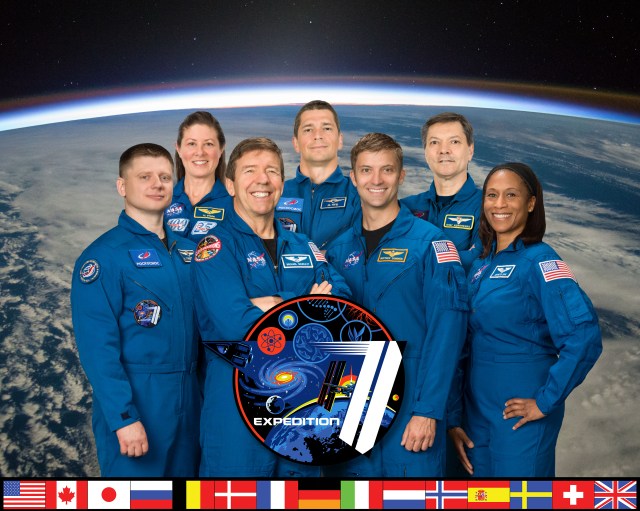
Expedition 71
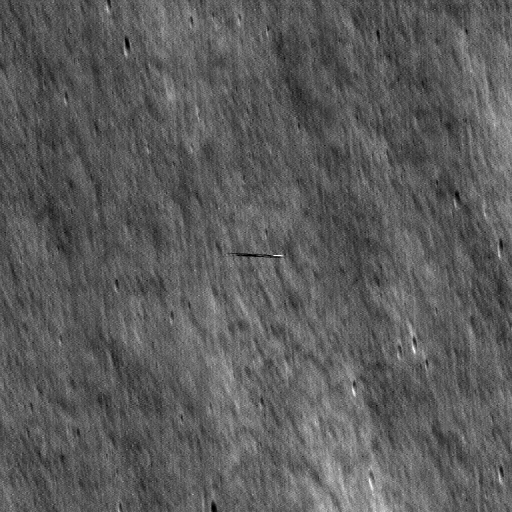
NASA’s LRO Finds Photo Op as It Zips Past SKorea’s Danuri Moon Orbiter
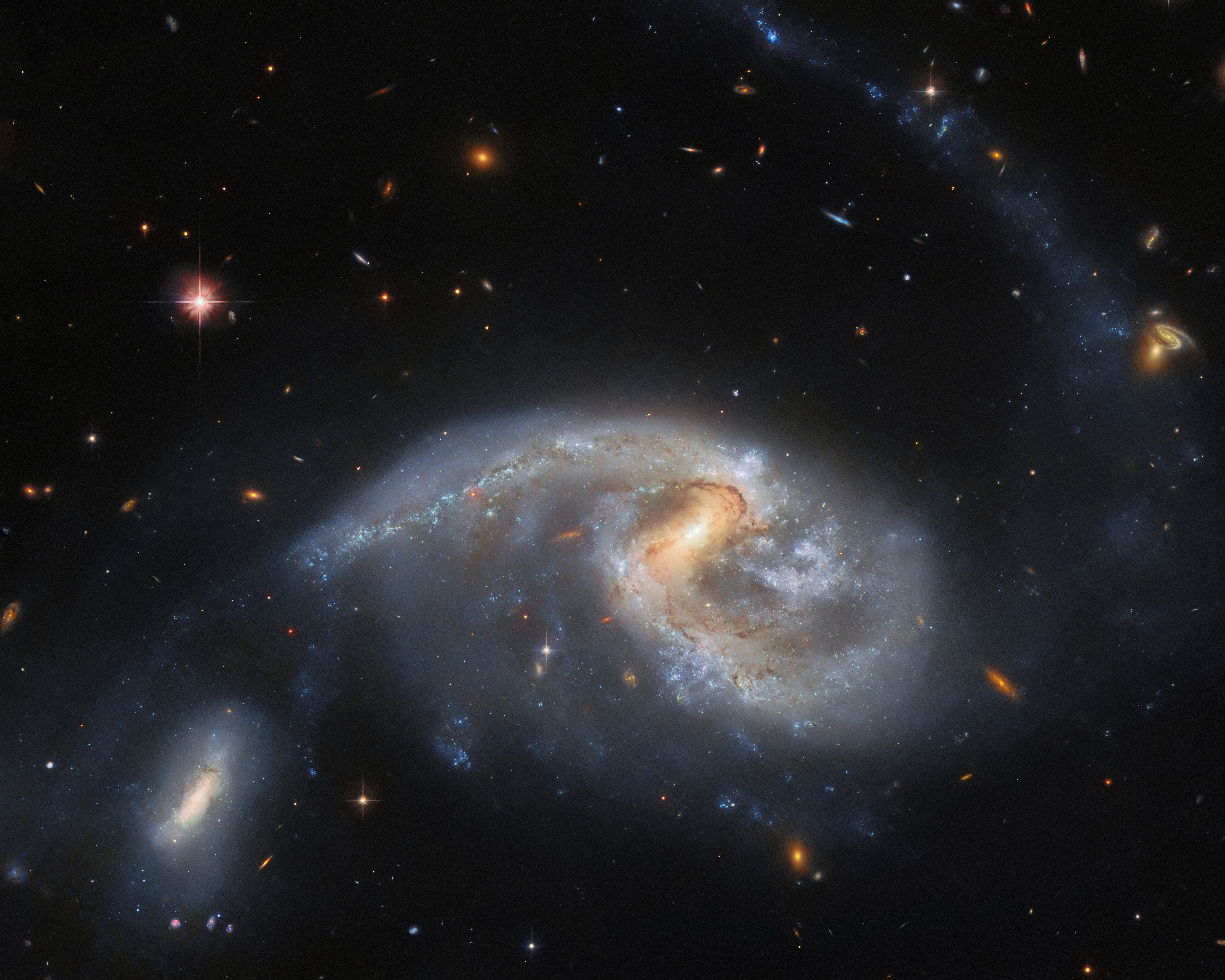
Hubble Peers at Pair of Closely Interacting Galaxies

NASA Astronaut Loral O’Hara, Expedition 70 Science Highlights

Diez maneras en que los estudiantes pueden prepararse para ser astronautas

Optical Fiber Production

How NASA Spotted El Niño Changing the Saltiness of Coastal Waters
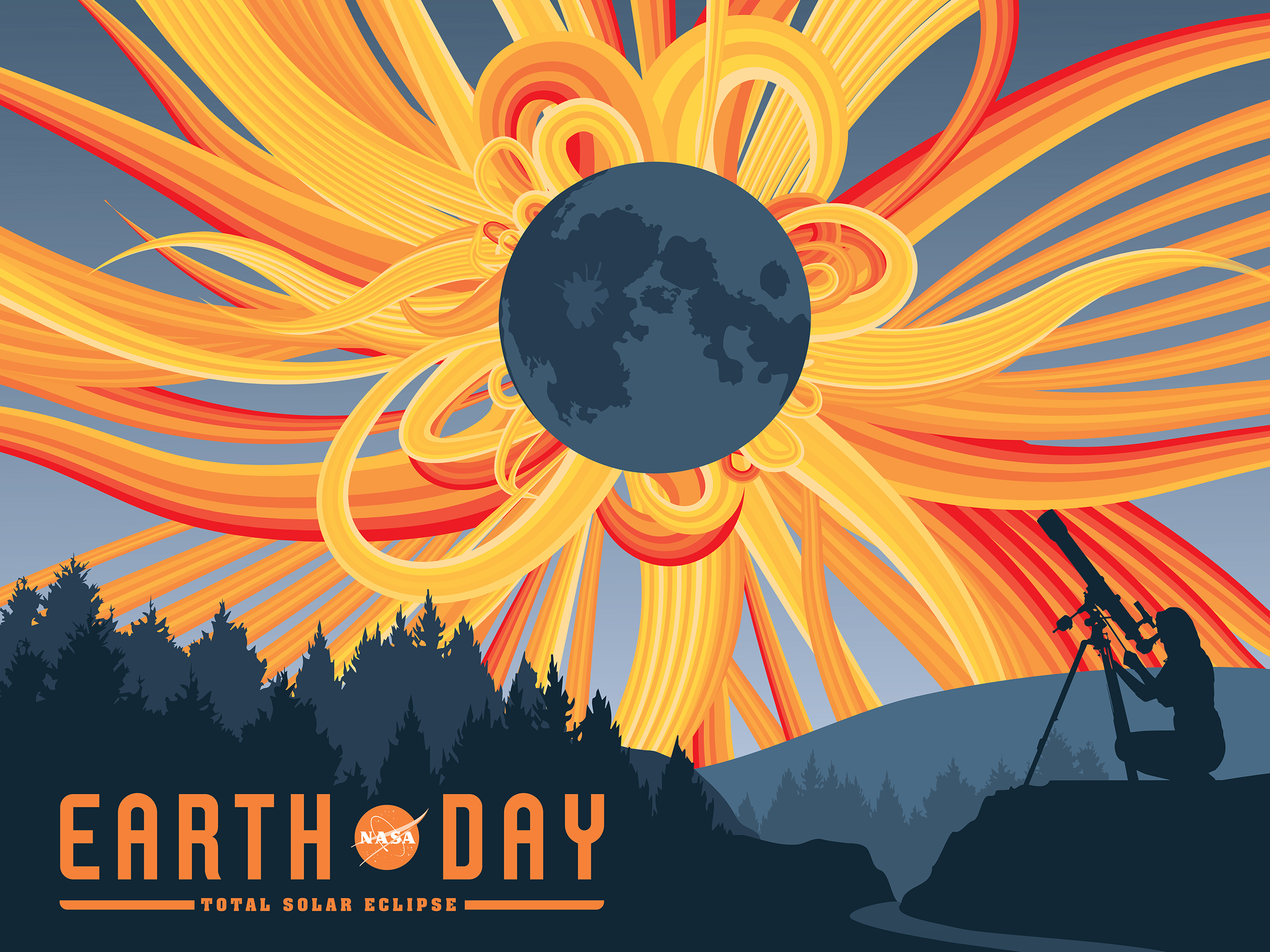
Earth Day Toolkit
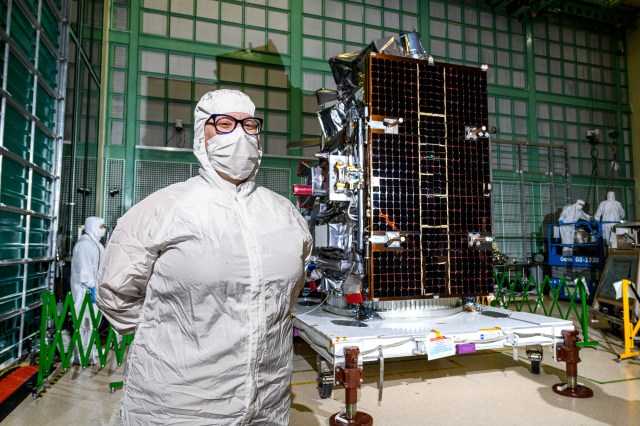
Veronica T. Pinnick Put NASA’s PACE Mission through Its Paces
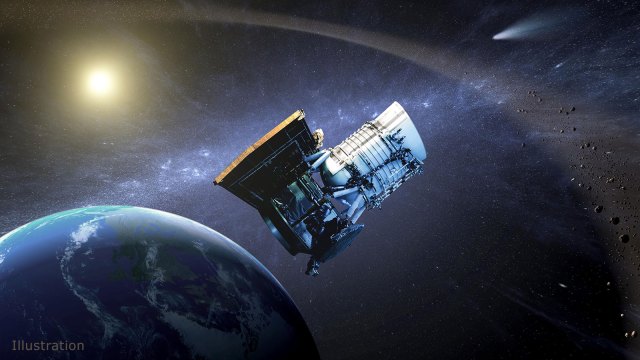
NASA’s NEOWISE Extends Legacy With Decade of Near-Earth Object Data
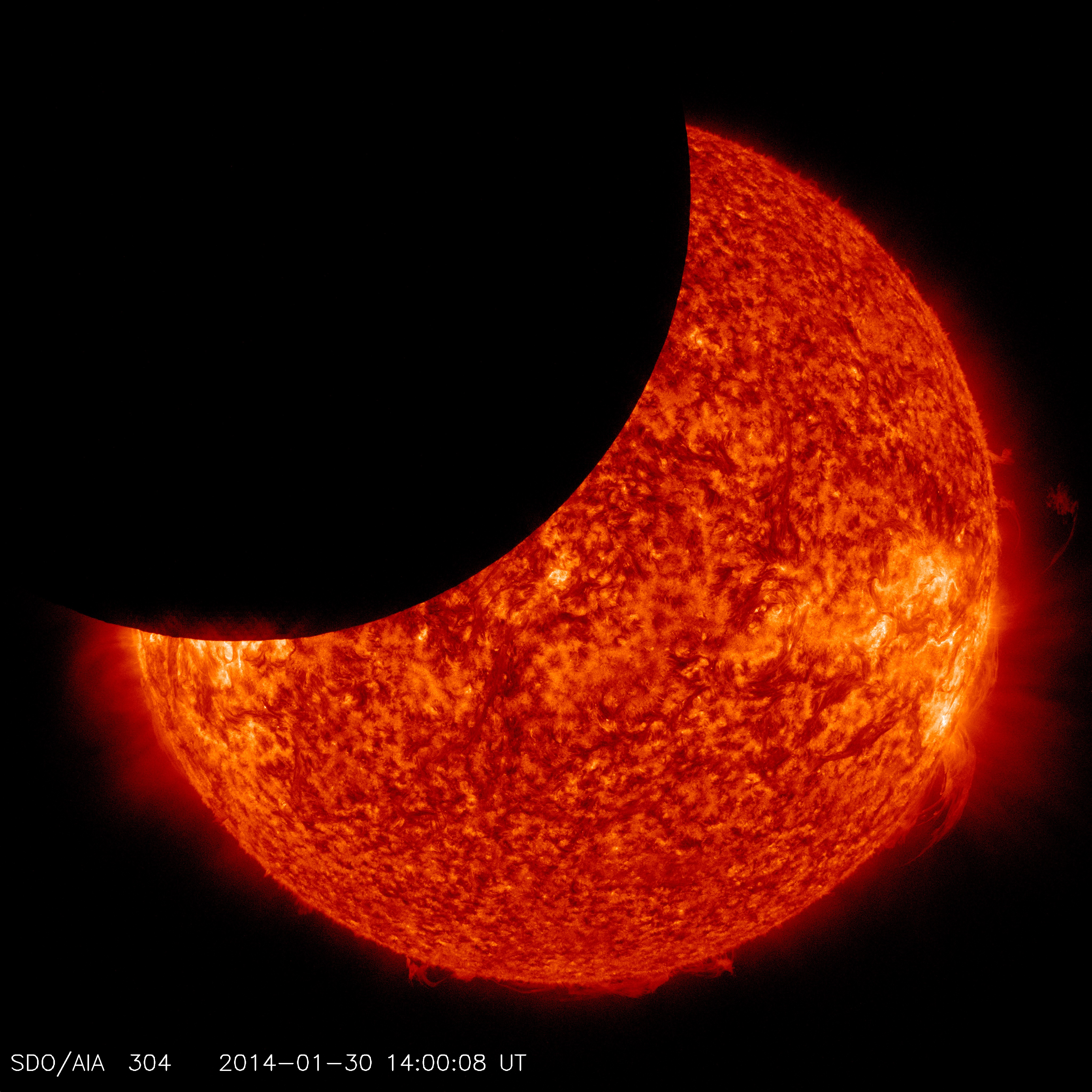
Harnessing the 2024 Eclipse for Ionospheric Discovery with HamSCI
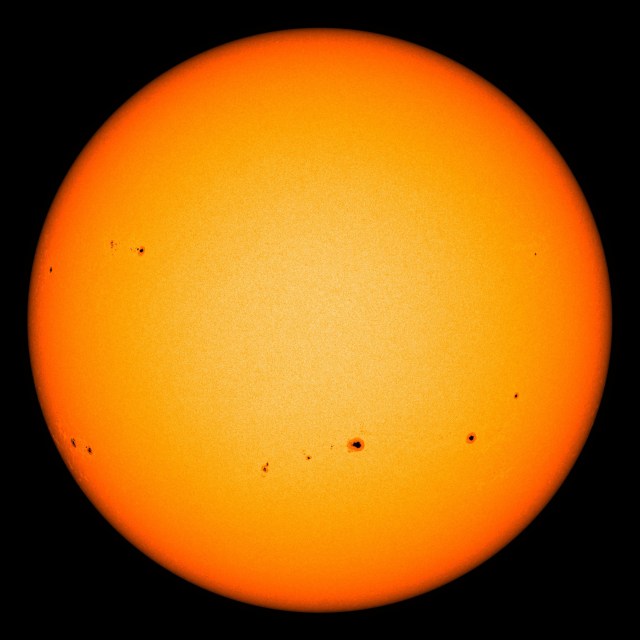
How NASA’s Roman Telescope Will Measure Ages of Stars
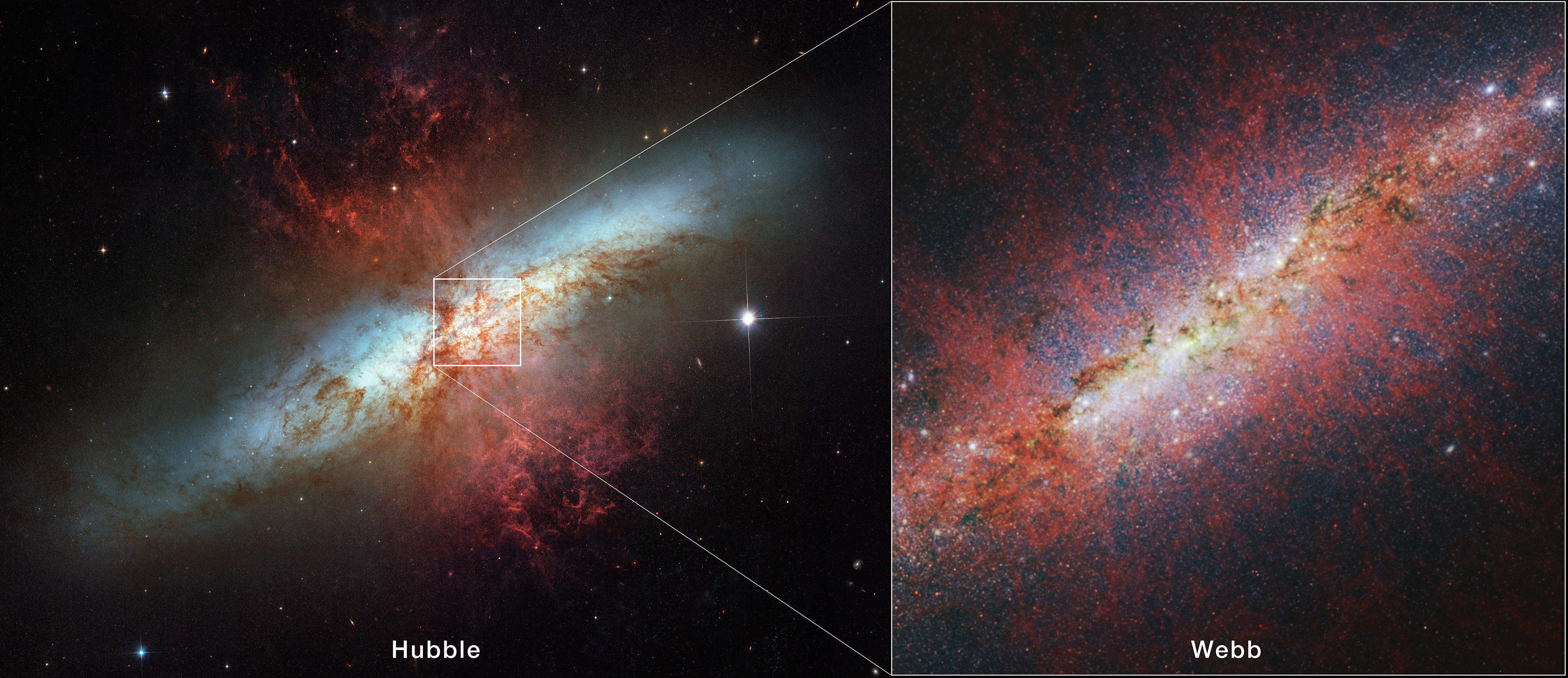
NASA’s Webb Probes an Extreme Starburst Galaxy
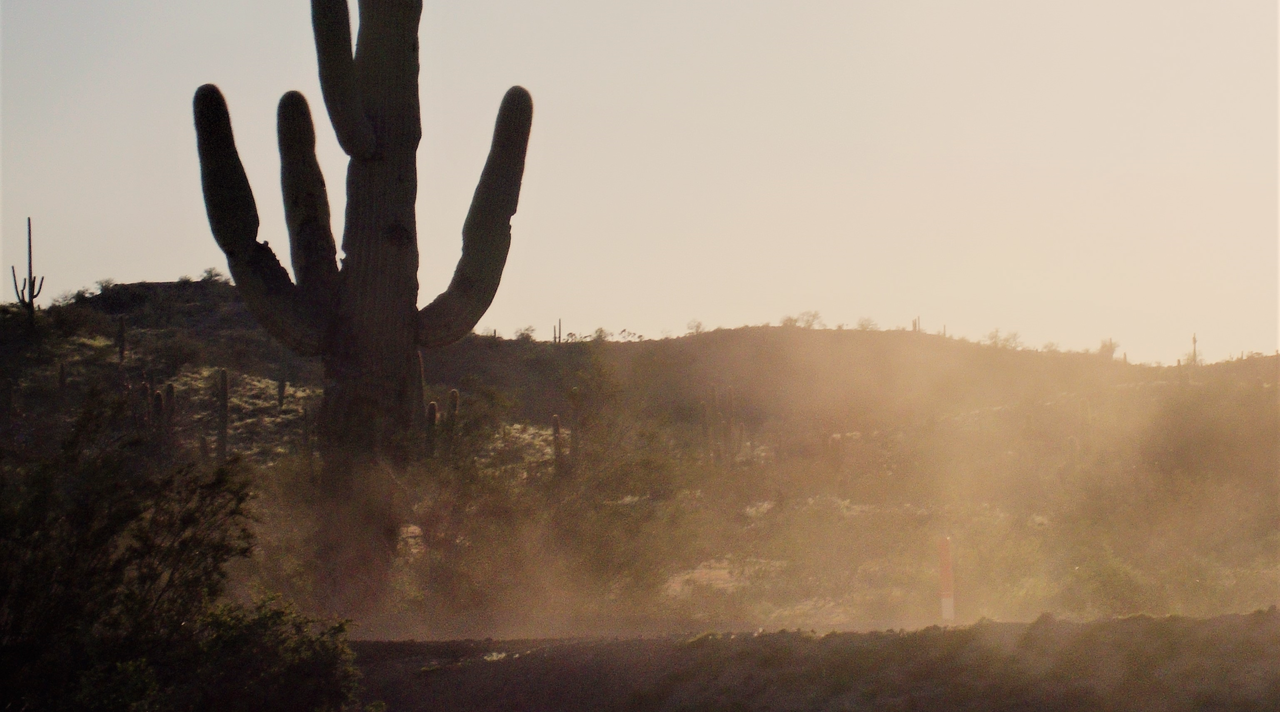
Amendment 8 A.44 Earth Action: Health and Air Quality Applied Sciences Team Final Text and Due Dates.
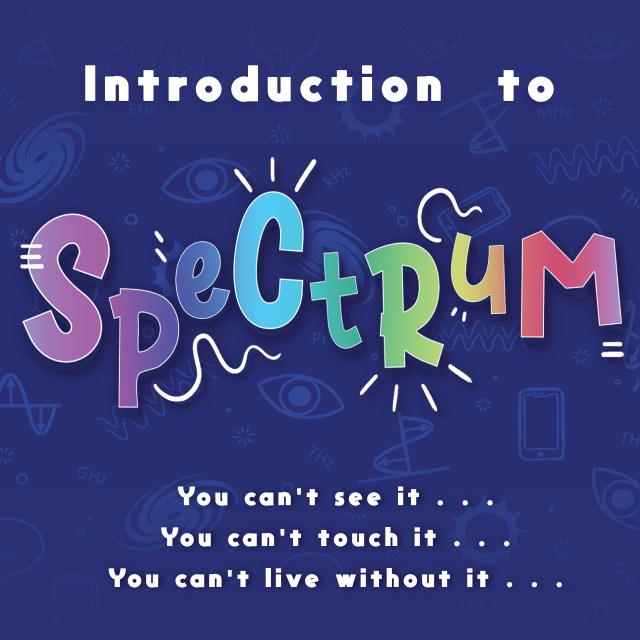
Introduction to Spectrum

NASA Langley Team to Study Weather During Eclipse Using Uncrewed Vehicles

NASA Noise Prediction Tool Supports Users in Air Taxi Industry

ARMD Solicitations

Tech Today: Synthetic DNA Diagnoses COVID, Cancer

David Woerner

Tech Today: Cutting the Knee Surgery Cord

NASA Partnerships Bring 2024 Total Solar Eclipse to Everyone
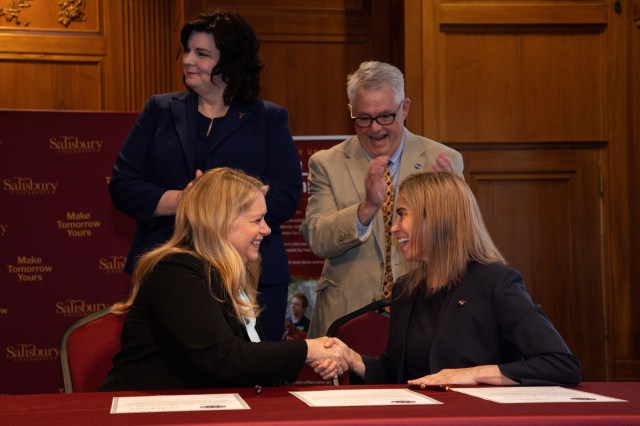
NASA, Salisbury U. Enact Agreement for Workforce Development
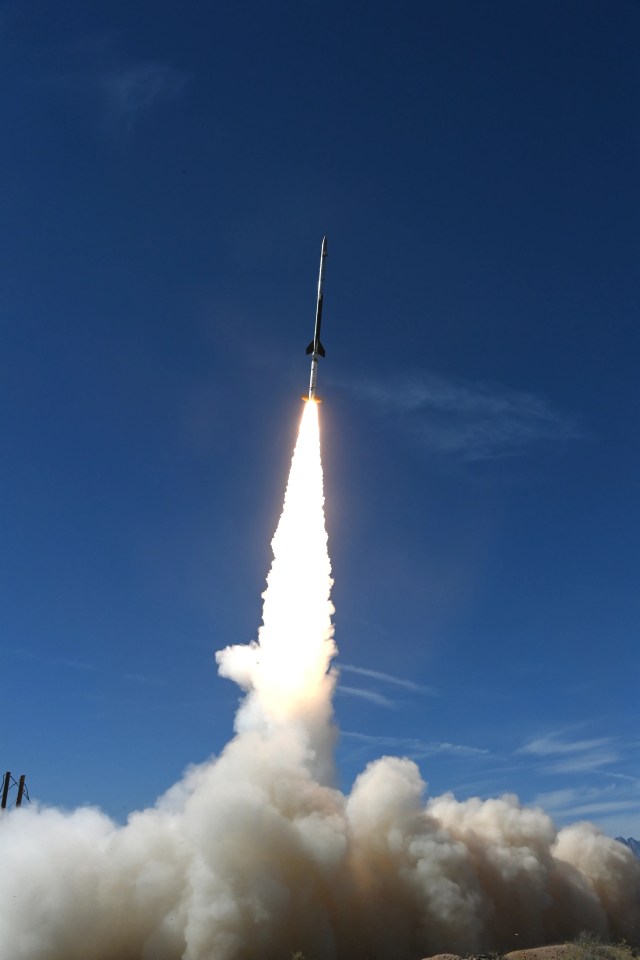
NASA Wallops to Launch Three Sounding Rockets During Solar Eclipse

Astronauta de la NASA Marcos Berríos

Resultados científicos revolucionarios en la estación espacial de 2023
Order up: high school students compete to launch their food into space with nasa hunch culinary competition.
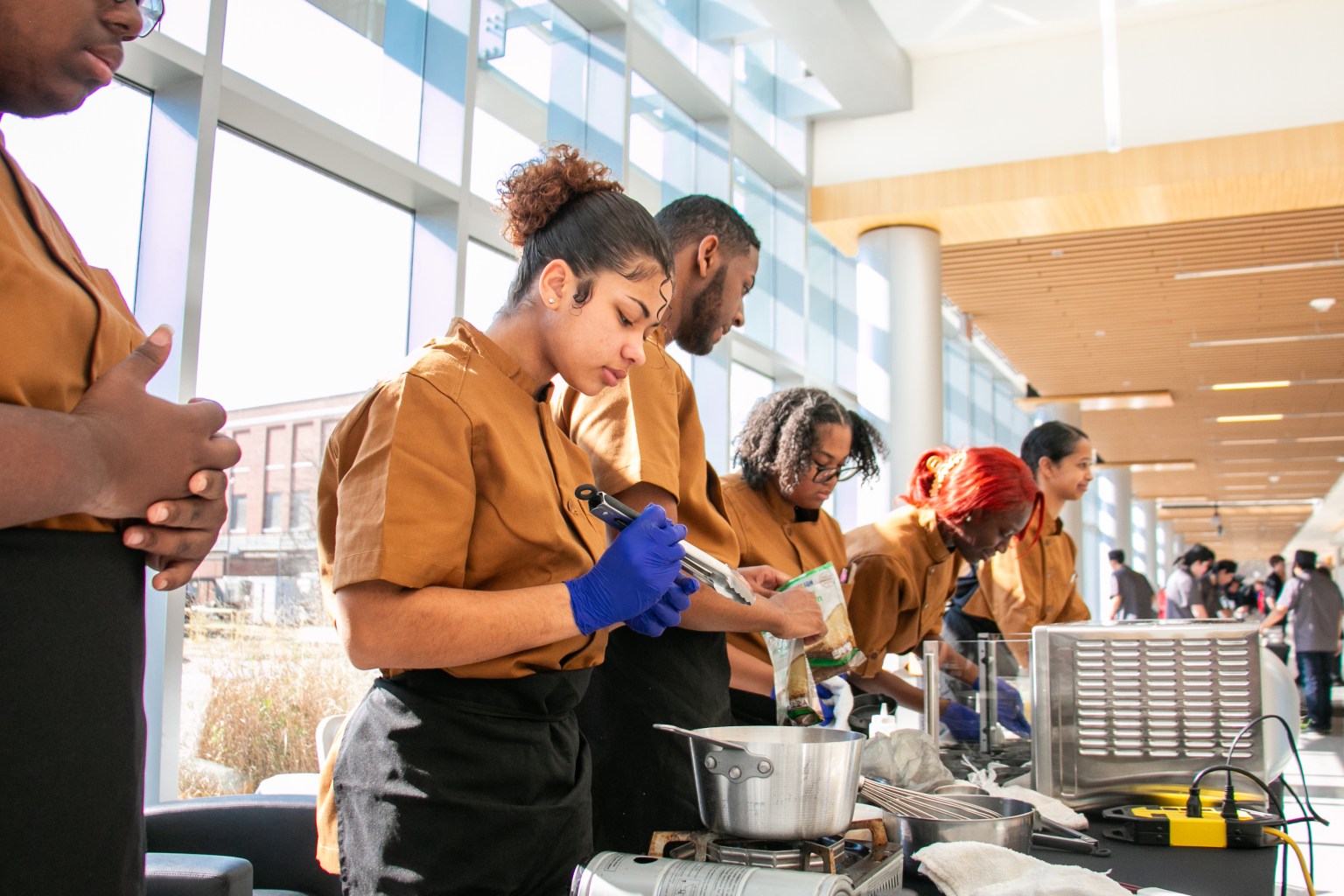
Simone Williams
Nasa communications intern.
On Monday, Feb. 26, visitors to the Integrated Engineering Services Building at NASA’s Langley Research Center in Hampton, Virginia, were greeted by the mouthwatering smell of roasted garlic, sautéed peppers and onions, fragrant herbs, and the unexpected discovery that the building’s main hallway had been turned into a pop-up kitchen for local high school students.
These students were participants in NASA HUNCH Culinary. NASA HUNCH (High School Students United with NASA to Create Hardware) is a Project Based Learning program where high school students participate in the design and fabrication of real world valued products for NASA. HUNCH has six areas of focus that students may choose to participate in: Precision Machining, Softgoods, Design and Prototype, Food Science, Communications, and Software.
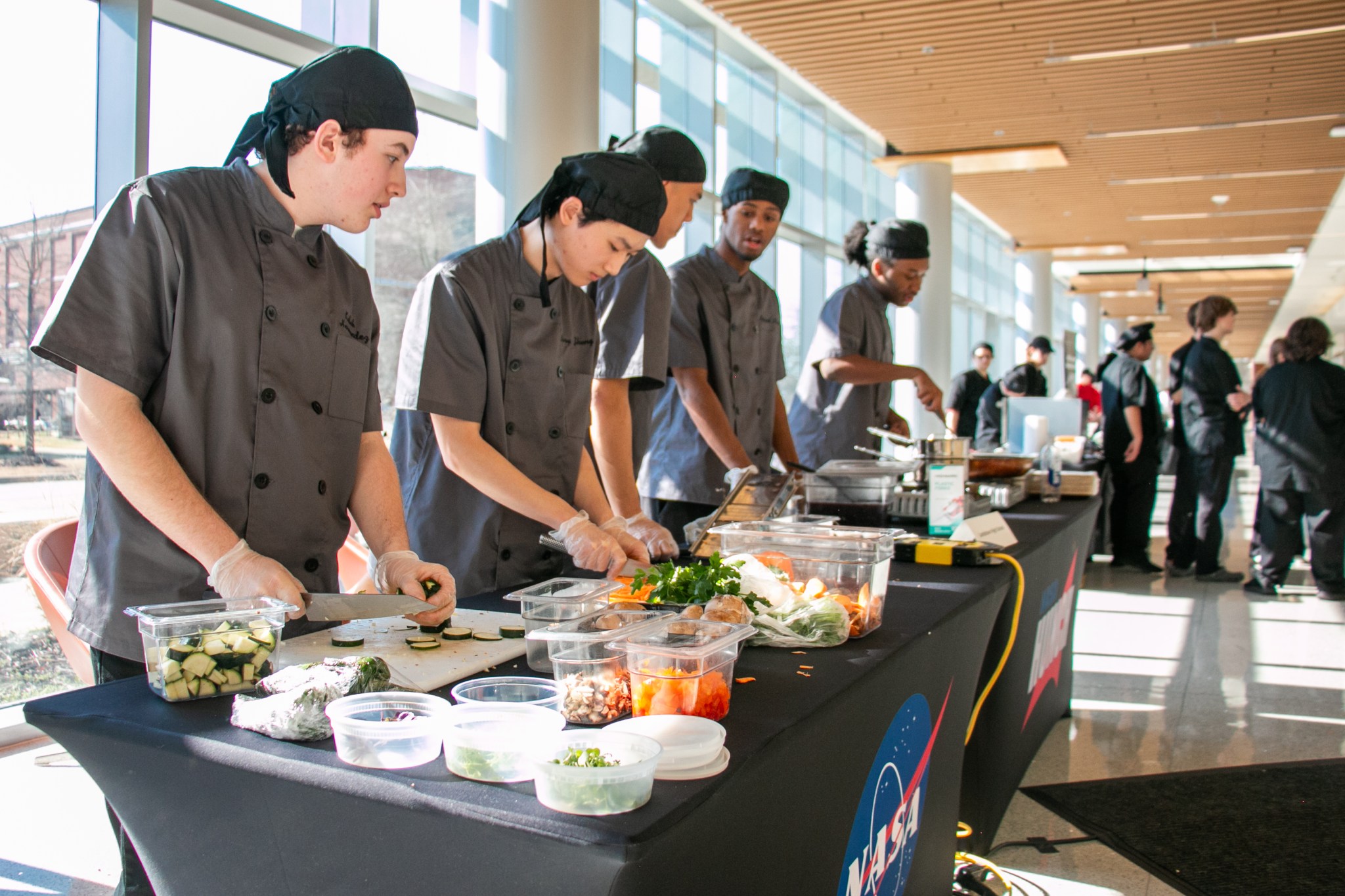
The HUNCH Astronaut Culinary Program provides students the opportunity to create dishes for astronauts aboard the International Space Station. Students must create tasty recipes following a specific food processing procedure and meeting certain nutritional requirements. These dishes must meet the standards of the NASA Johnson Space Center Food Lab in Houston, Texas.
Through this program, students gain culinary experience as well as experience with research and presenting their work in a professional environment. Students spend weeks perfecting their recipes so that on competition day, they can recreate their dishes in person at various NASA centers across the country.
This year, HUNCH Culinary student teams were tasked with the challenge of creating a savory breakfast dish that included a vegetable. The recipes had to fall between 150 and 350 calories, contain less than 12 grams of fat and 250 milligrams of sodium, have at least one gram of fiber, and “must process well for spaceflight and for use in microgravity” among several other requirements.
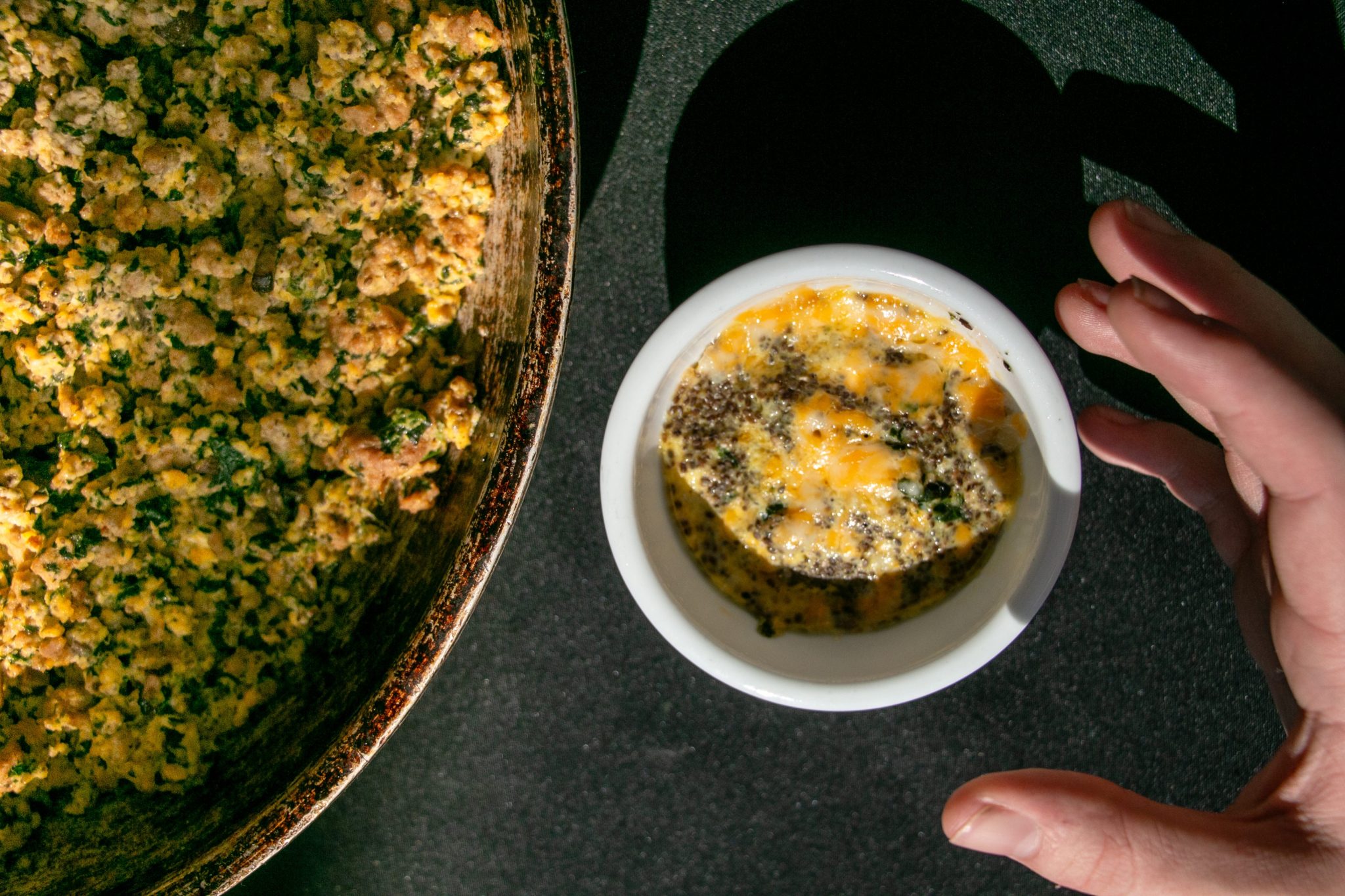
Several students described challenges around creating a recipe under these guidelines. Nyland Clay, a student at Landstown High School in Virginia Beach, explained his team’s problem solving around the minimal sodium guideline.
“We were able to work around that by using different types of flavors in order to substitute for the extra sodium,” he said. “One of the ways we did this was with poblano peppers. When seared over a grill, they make a nice smoky flavor that doesn’t add any sodium whatsoever.”
Nyland’s team additionally chose to use ground turkey in their sweet potato hash recipe instead of ground beef to avoid unnecessary fat.
Travis Walker, culinary instructor at Phoebus High School in Hampton and former executive catering chef manager for the NASA Langley Exchange, spoke highly of his students as his reason for teaching.
“The most rewarding part is just watching the growth of the kids,” he said. “From the day you get them and they can’t boil water, to the time they get here and they’re in these competitions and excelling — that’s the most rewarding part.”
The student groups with the highest scores will be invited to Johnson Space Center in Houston for a final competition where their dishes will be judged by Johnson Food Lab personnel, industry professionals, the ISS program office, and astronauts. The criteria are quality, taste, and the students’ work on the research paper and presentation video. The winning entree will be processed by the Johnson Space Center Food Lab and sent up to the station for the astronauts to enjoy.
Related Terms
- Langley Research Center
Explore More

NASA Selects University Teams to Compete in 2024 RASC-AL Competition
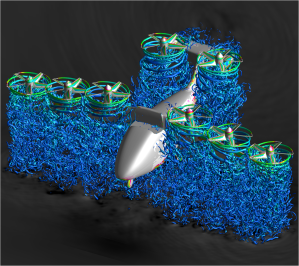
- Today's news
- Reviews and deals
- Climate change
- 2024 election
- Fall allergies
- Health news
- Mental health
- Sexual health
- Family health
- So mini ways
- Unapologetically
- Buying guides
Entertainment
- How to Watch
- My watchlist
- Stock market
- Biden economy
- Personal finance
- Stocks: most active
- Stocks: gainers
- Stocks: losers
- Trending tickers
- World indices
- US Treasury bonds
- Top mutual funds
- Highest open interest
- Highest implied volatility
- Currency converter
- Basic materials
- Communication services
- Consumer cyclical
- Consumer defensive
- Financial services
- Industrials
- Real estate
- Mutual funds
- Credit cards
- Credit card rates
- Balance transfer credit cards
- Business credit cards
- Cash back credit cards
- Rewards credit cards
- Travel credit cards
- Checking accounts
- Online checking accounts
- High-yield savings accounts
- Money market accounts
- Personal loans
- Student loans
- Car insurance
- Home buying
- Options pit
- Investment ideas
- Research reports
- Fantasy football
- Pro Pick 'Em
- College Pick 'Em
- Fantasy baseball
- Fantasy hockey
- Fantasy basketball
- Download the app
- Daily fantasy
- Scores and schedules
- GameChannel
- World Baseball Classic
- Premier League
- CONCACAF League
- Champions League
- Motorsports
- Horse racing
- Newsletters
New on Yahoo
- Privacy Dashboard
Solar eclipse
- 2024 solar eclipse guide: What to know
- Eclipse forecast and path
- Solar eclipse conspiracy theories
- Where to buy eclipse glasses
- Eclipse travel tips
2024 Eclipse: Kemp High School students to take part in cross-country research project
KEMP, Texas - Students and teachers from Kemp High School in Kaufman County will play a key role in research for the total solar eclipse in April .
The five students from Kemp are part of the 2024 Citizen Continental-America Telescope Eclipse project .
35 telescopes will be set up along the eclipse path from Texas to Maine to capture totality images. NASA describes it as an eclipse relay race for science.
READ MORE: How NASA plans to study the sounds of the total solar eclipse
The team applied for the opportunity back in November and were chosen to take part.
"This is a chance for these kids to really get to do science," said Kyle Rimler, the head of the science department for Kemp High School.
The project is funded by NASA and the U.S. National Science Foundation, where the team goes through intensive training at the Frontier Flight Museum in Dallas to learn to track the sun.
"We're going to be in a documentary. So we're taking video for a documentary of everything we're doing," Rimler added.
The students will put together the computer-controlled telescope to capture the images.
"I've always loved astronomy," said junior Katy Kizer. "The research is really cool, but so is being with everyone here."
Kemp High School will be able to keep the donated telescope.
READ MORE: 2024 Eclipse: Where to watch the solar eclipse in Dallas
The school is making the day a campus-wide celebration. They are calling it the Solar Bowl.
There will be a flag football game and performances from the band, drill team and cheer squad.
"Everyday it gets bigger and bigger, and I'm hoping that Kemp really gets excited about it," said Rimler.
Recommended Stories
Nasa will be studying the total solar eclipse. here's how you can help.
On Monday, April 8, a total solar eclipse will be visible across a swath of North America, from Mexico’s Pacific coast to the easternmost reaches of Canada. NASA has sponsored a handful of citizen science projects that anyone can participate in.
Solar eclipse triggers onslaught of conspiracy theories across social media
Let’s break down some of the common conspiracy theories around the April 8 solar eclipse.
Total solar eclipse guide 2024: When it is, where the path of totality is, how to watch it safely and more
Everything you need to know about the April 8 celestial event.
Eclipse weather forecast: From Texas to Maine, what conditions you should expect on Monday
Preliminary local forecasts in 15 states along the so-called path of totality show viewing the highly-anticipated celestial event may be a problem for some, less so for others.
Yankees push back start time for game vs. Marlins due to solar eclipse
The Guardians also moved back the start time for their home opener on Monday.
'It is a life-changing event': From $1,000 one-way flights to surging Airbnb rentals, travelers are gearing up for the solar eclipse
With 30 million Americans in the path of totality, travelers are adding billions to the economy in order to witness the April 8 event.
Your April guide to a happier, healthier you: spring COVID boosters, total solar eclipse and the benefits of a rainy walk (really!)
A look ahead at living your best life this April, from the total solar eclipse to the rainy day activity you should try.
Jordan Spieth hits ball into drainage ditch then clubhouse gutter, 2 days after hole-in-one
Who among us hasn't had a hole like Jordan Spieth had on the 18th of the Valero Texas Open.
WrestleMania 40 Night 1 results, grades, analysis: The Rock, Roman Reigns defeat Cody Rhodes, Seth Rollins
The Bloodline capped off WrestleMania Night 1 with a win over Cody Rhodes and Seth Rollins that will impact Night 2's main event.
Demi Moore is a huge fan of this shampoo-conditioner duo to maintain her iconic hair — and it's on sale at Amazon
Good hair needs good products.
These No. 1 bestselling solar deck lights have the ‘right touch of ambiance’ and they’re nearly 40% off
Get your backyard glowing for just $25.
Target Circle Week kicks off tomorrow: Everything we know, including early deals to shop now
Mark your calendar: Target Circle Week begins Sunday, April 7 and runs through Saturday, April 13.
Apple's road ahead: New products, diversifying revenue streams will be key to its stock, analysts say
Apple’s stock is struggling to find its footing. Shares of the tech giant have declined 8.5% since the start of the year, wiping more than $300 billion from its market capitalization.
Vince Carter, Seimone Augustus, Jerry West highlight Basketball Hall of Fame Class of 2024
The 13-member class will be inducted in August.
OpenAI and Google reportedly used transcriptions of YouTube videos to train their AI models
A report by The New York Times claims both OpenAI and Google transcribed videos from YouTube and used these texts to train their AI models, possibly violating copyrights. OpenAI reportedly transcribed more than one million hours of YouTube videos.
NBA Daily Playoff Picture: The one where Joel Embiid and the 76ers could use a win
Here are the latest updates on the postseason landscape, including magic numbers, strength of schedule, relevant tiebreakers and the stakes for Saturday's slate of games.
The stifling impact high inflation has on retirement savers
For many Americans, the daily costs of living have made saving for retirement a struggle. They’ve paused contributions to retirement accounts, pared them back, or dipped into these funds.
The best tie down straps of 2024
Tie down straps can keep your cargo secure while on the road. They're adjustable, making it easier to hold everything down and manage high load capacities.
Nothing in markets goes without saying: Chart of the Week
The precipitous fall of Trump Media, Truth Social's parent company, following a regulatory filing illustrates a cardinal rule in markets.
'Cuts like a hot knife through butter:' These powerful Fiskars pruning shears are down to just $10
Great for trimming in the garden or clipping fresh flowers, these scissors have nearly 34,000 five-star fans.
- Bahasa Indonesia
- Slovenščina
- Science & Tech
- Russian Kitchen
7 facts about Lomonosov Moscow State University you should know
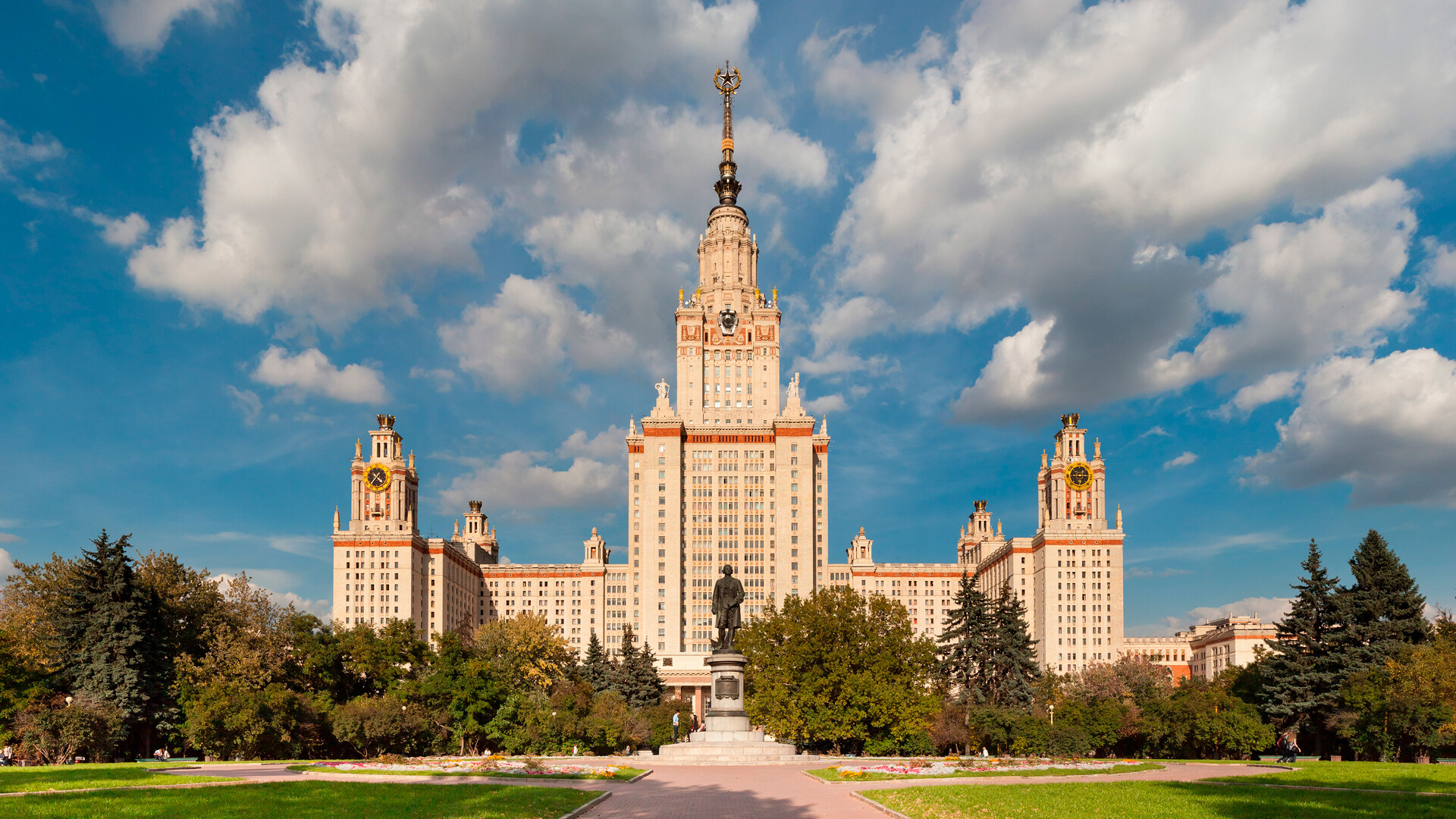
1. The oldest university in Russia
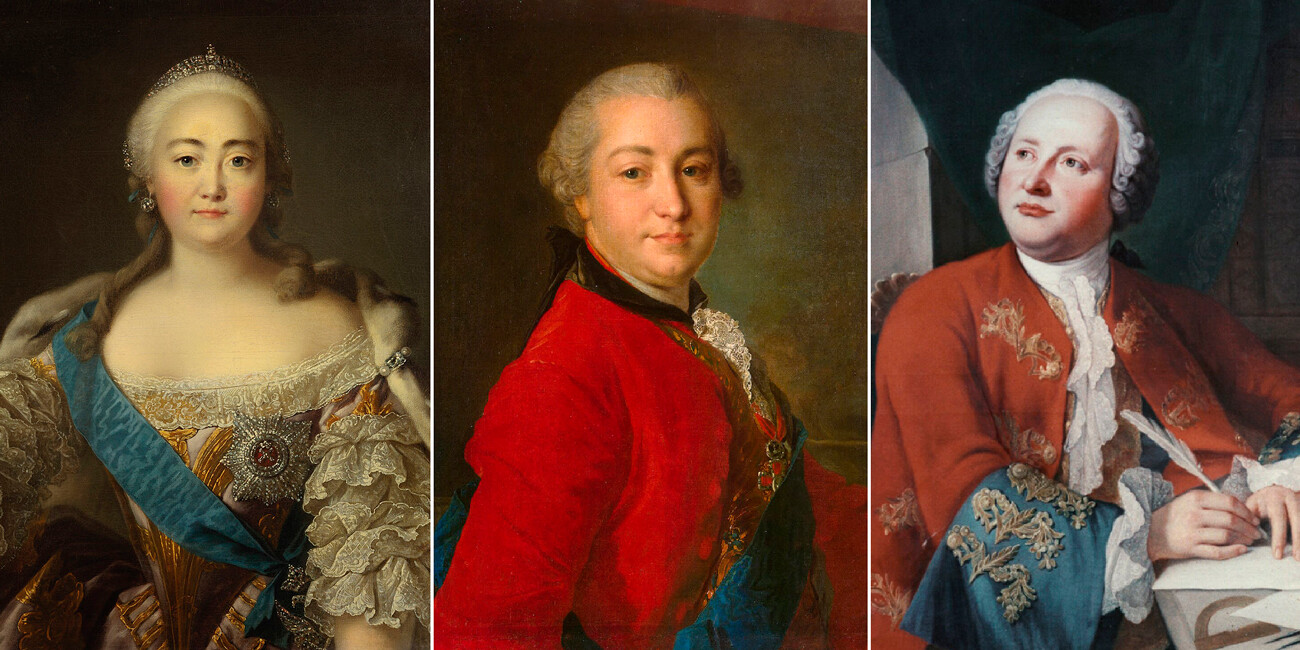
Empress Elizabeth of Russia; Ivan Shuvalov; Mikhail Lomonosov
Moscow University was founded in 1755 at the order of Empress Elizaveta Petrovna. The education concept and the university project were prepared by first Russian academician Mikhail Lomonosov . However, MSU would be named after him only in 1940.
Lomonosov’s words, “science is a clear knowledge of the truth, enlightenment of the mind”, adorn the coat of arms of MSU today (The full quote from his book ‘Rhetoric’ goes as follows: “Science is a clear knowledge of the truth, enlightenment of the mind, immaculate entertainment of life, praise of youth, support of old age, builder of cities, regiments, the fortress of success in misery and decoration in happiness, everywhere a faithful and inseparable companion.”).
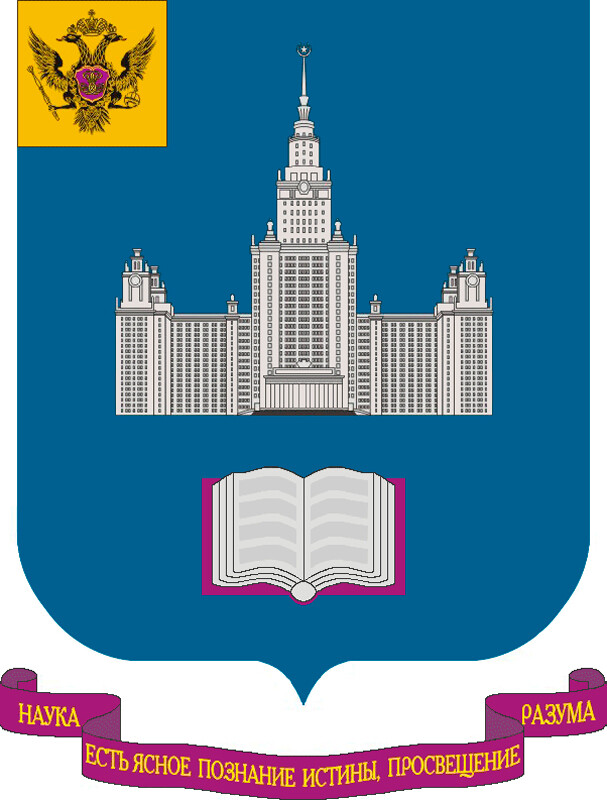
Moscow State University emblem
Lomonosov student and Elizaveta’s favorite Ivan Shuvalov, who presented the project to the empress, promoted the idea of creating a university. He became the first curator of MSU.
January 25 is considered the birthday of the university, also known as ‘Tatiana Day’. Shuvalov timed it for the birthday of his mother. MSU also has a house church named after Martyr Tatiana.
Moscow University contests St. Petersburg State University’s claim to be the oldest (historians debate if the latter is the successor of the Academy of Sciences, founded by Peter the Great in 1724 or the reorganized Pedagogical University, founded in 1819).
And yet, MSU’s anthem says: “It’s ours! It’s the first! It’s Moscow University!”
2. Until 1953, the main building was located near the Kremlin
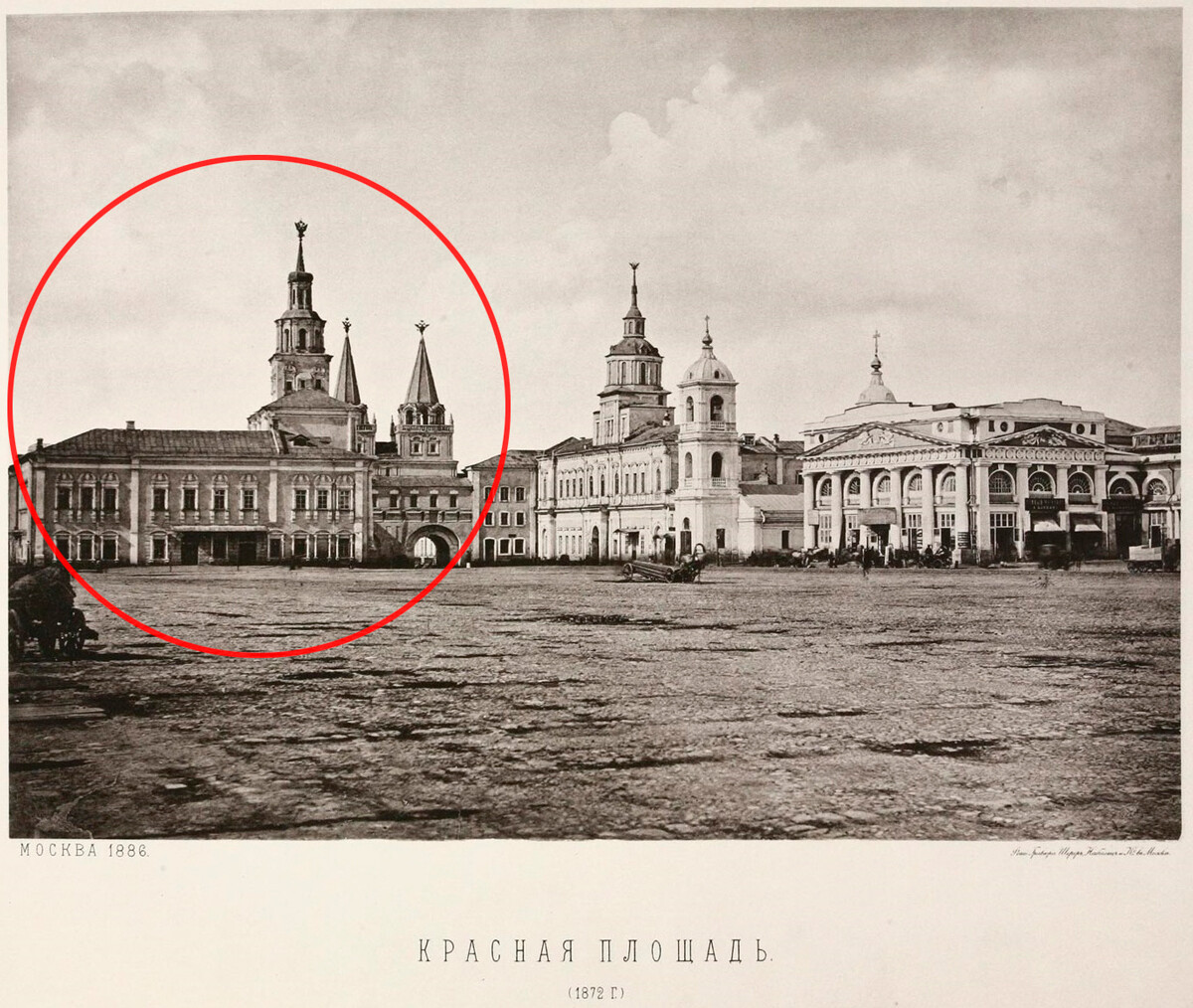
The building of 'Zemsky prikaz' on the Red Square, 1872
The first building of MSU didn’t survive – initially, the university was given the building of Zemsky prikaz (county council) on the Red Square (today, the Historical Museum occupies this space). This building didn’t meet the requirements of the new university – and, in the 1780s, a new building was erected for it on Mokhovaya Street, right across from the Kremlin.
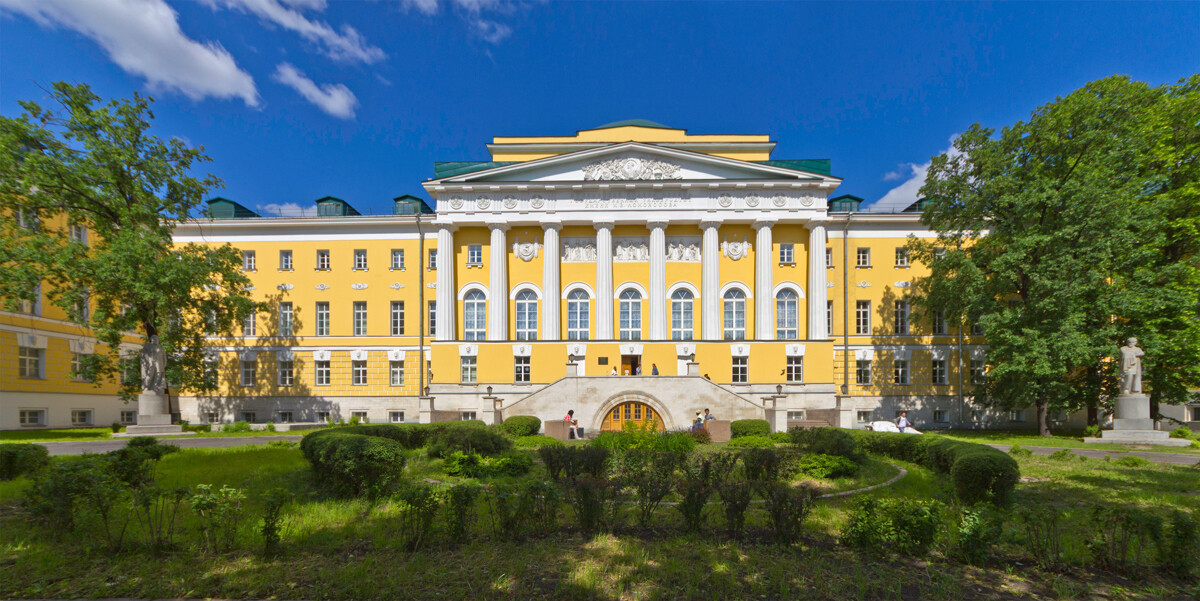
The oldest building of the university (now it hosts MSU’s Institute of Asian and African Studies)
Students still attend this oldest of the surviving buildings of the university at the address Mokhovaya Street, 11 – now it hosts MSU’s Institute of Asian and African Studies.
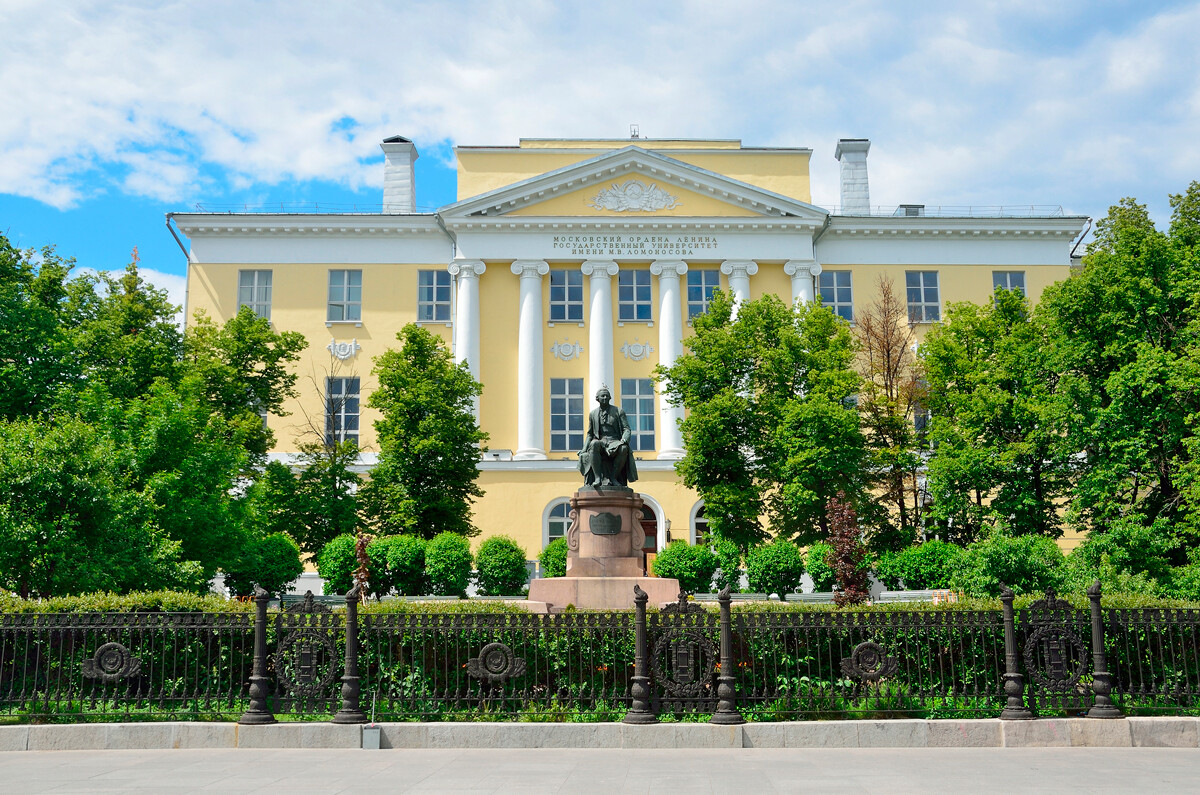
MSU’s Faculty of Journalism (with a monument to Mikhail Lomonosov in front of it)
In the 1830s, for the university’s needs another building was bought out (built in 1790) across the road (now the address Mokhovaya, 9 is occupied by the MSU Faculty of Journalism), as well as the house church. Later, the university occupied the entire quarter – its own printing house appeared, as well as a scientific library and a zoological museum.
3. The main building is now one of Stalin’s skyscrapers
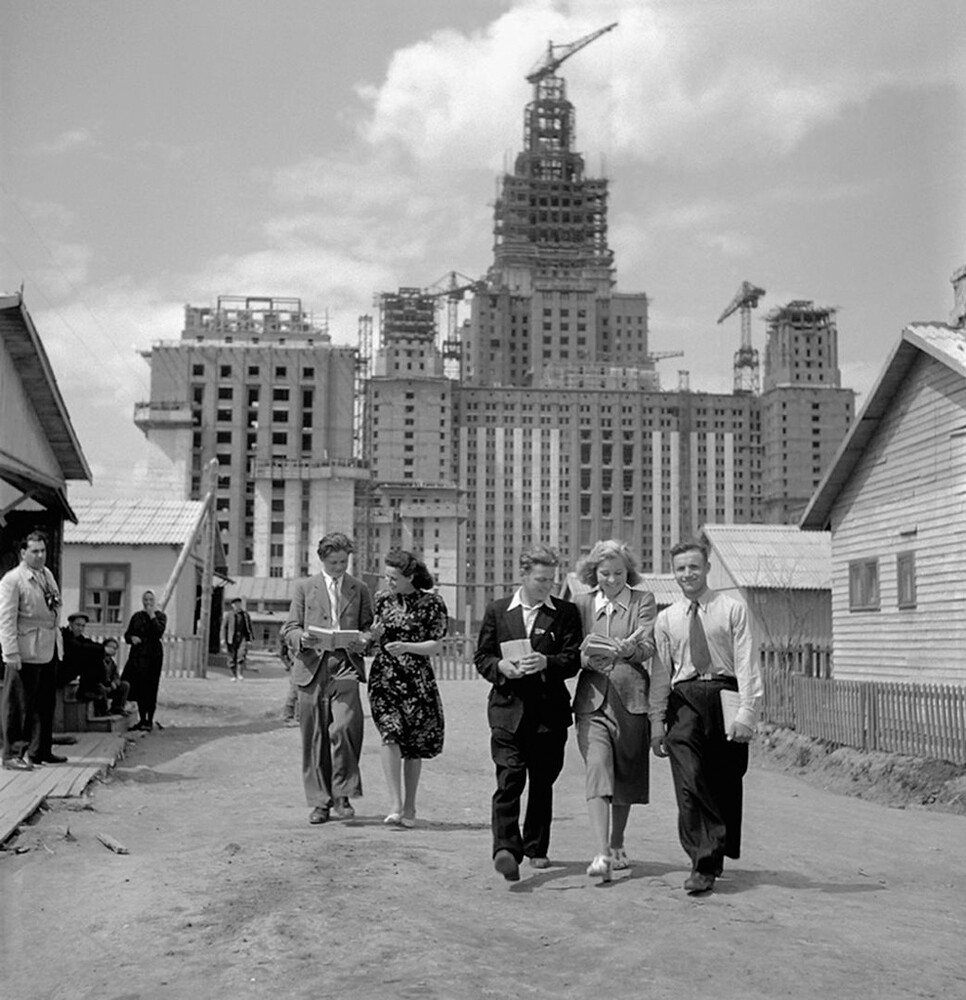
MSU main building under construction, 1951
Before the 1917 Revolution, education at Moscow State University was just for the elites – and, even then, only a very small circle of people could afford it. But, after the Revolution, the course was set for the democratization of education. The number of students rose sharply, a reorganization was undertaken and student self-governed bodies were created. The Higher Courses for Women also merged with MSU, for the first time allowing female students and also female professors. New faculties and areas of study appeared; small buildings in the center of the city couldn’t keep up with the main university of the country’s needs.
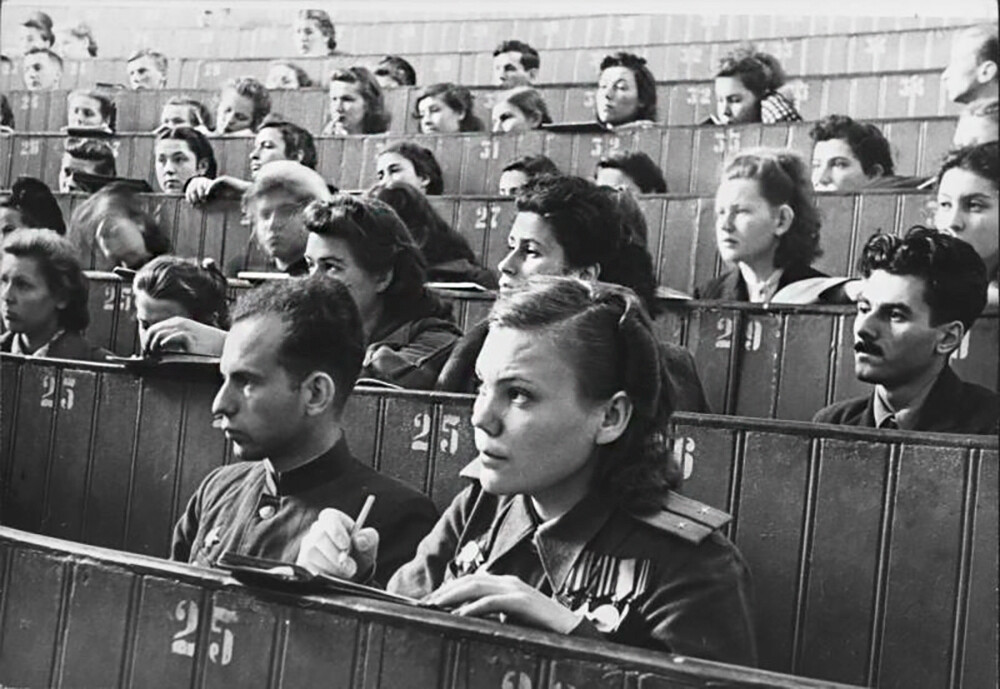
First lecture after the end of WWII. September 1, 1945
At the end of the 1940s, Stalin planned to build several high-rises in Moscow – initially, the high-rise on Lenin (‘Sparrow’) Hills on the bend of the Moscow River was supposed to be a hotel. But, the MSU administration pleaded so much for a new building that Stalin decided to give this building to the university. MSU ended up being the tallest of these buildings – its central building with the spire has 32 stories and is 239 meters tall (and it's the tallest educational building in the world).
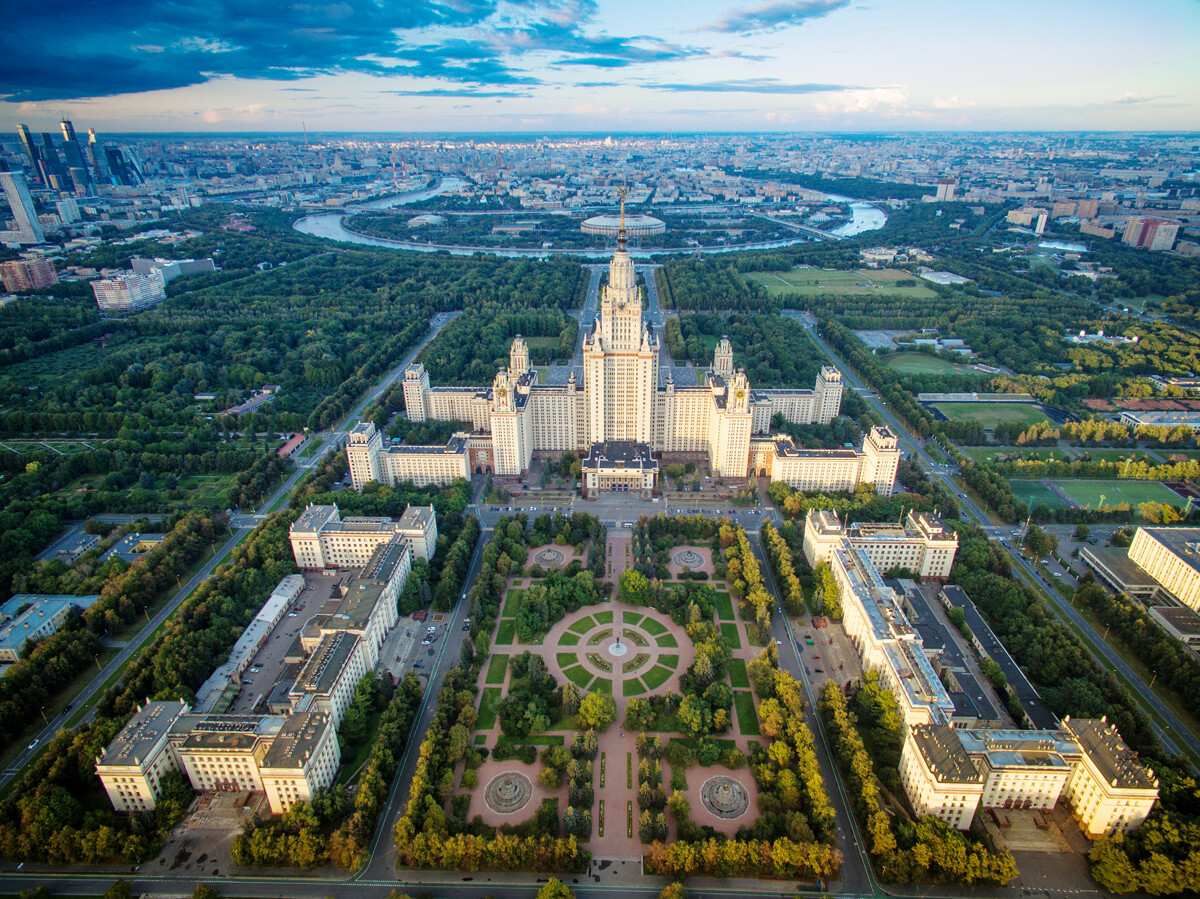
Main building of MSU and buildings of the Faculty of Chemistry (left) and Physics
At the same time, two buildings for the Faculties of Chemistry and Physics were erected next to the main one in the same style.
4. MSU owns hundreds of other buildings
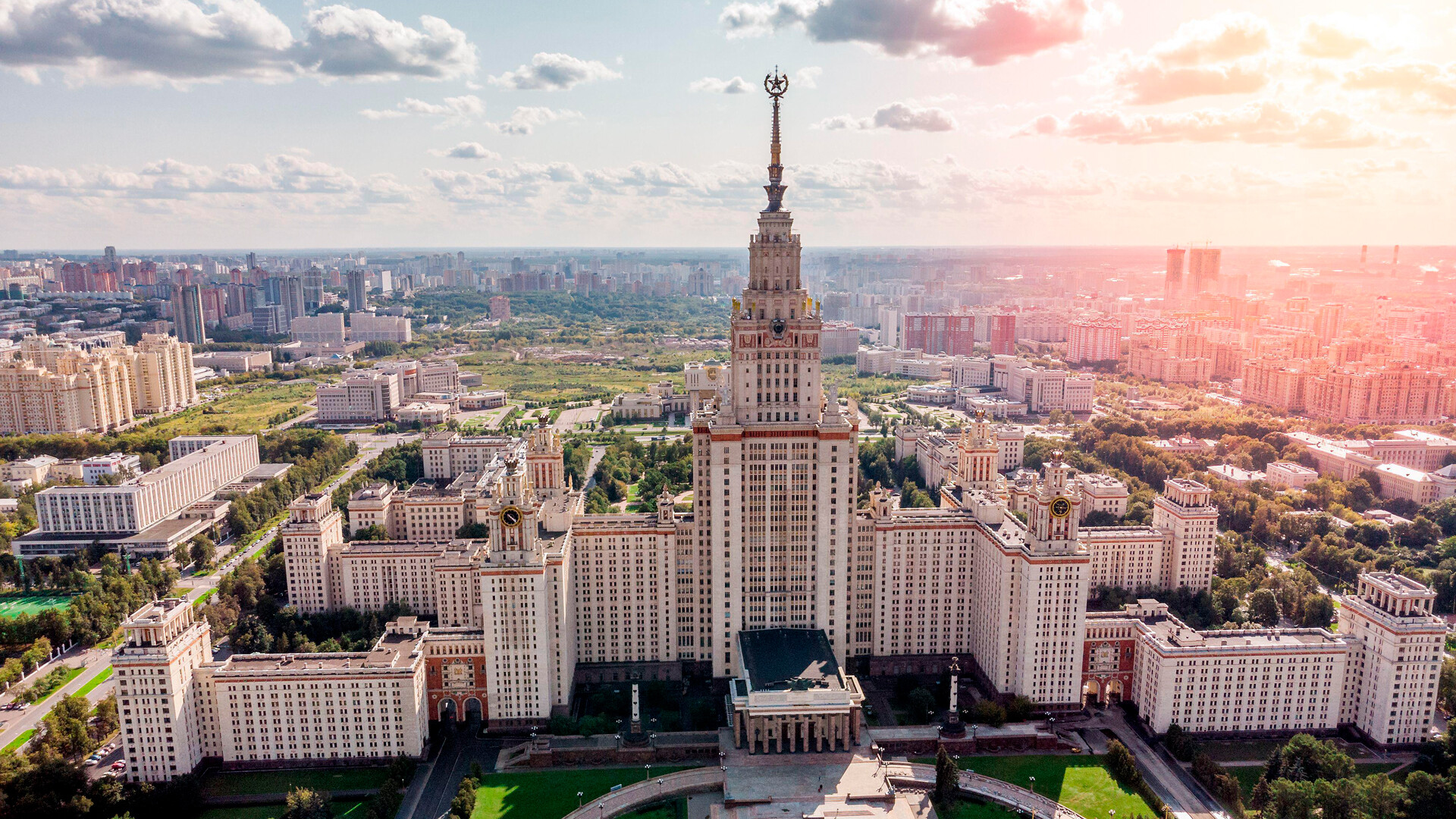
View on MSU main building from the Vorobyevy Gory
Today, MSU owns hundreds of buildings across Moscow and beyond. The area of just the main campus is hundreds of hectares.
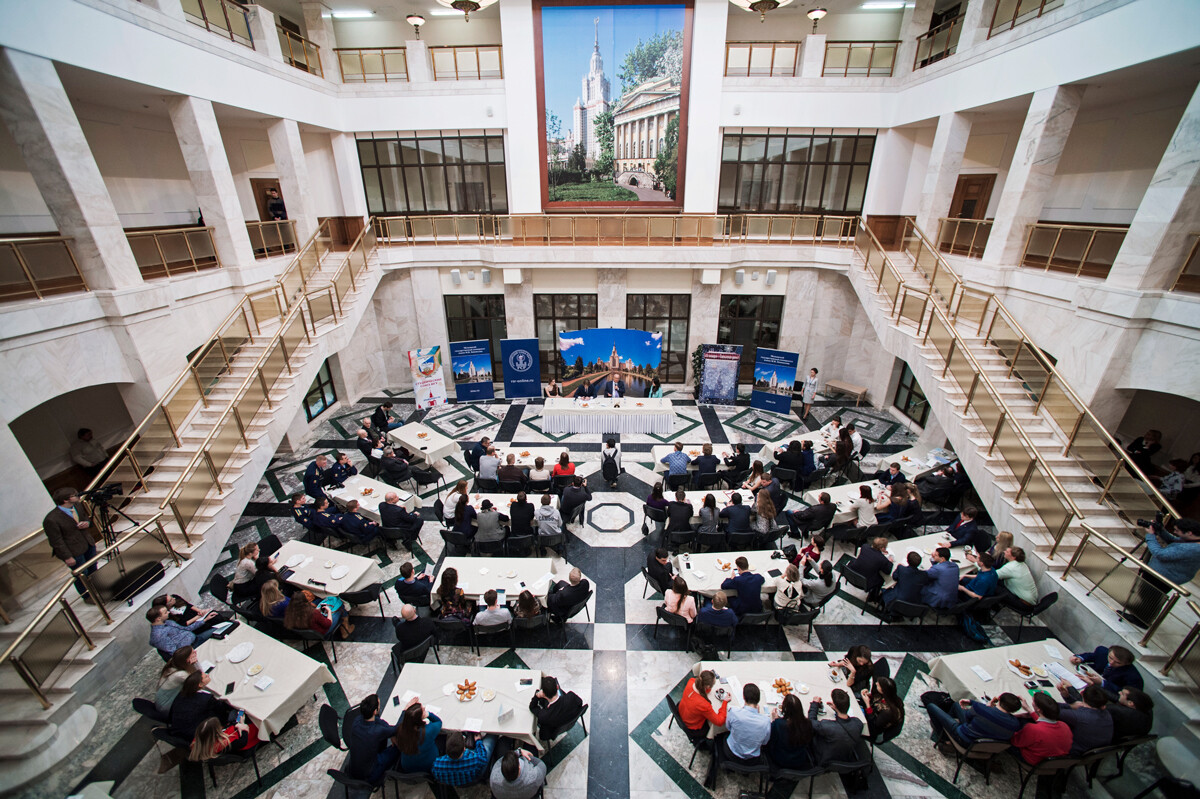
The building of the new MSU Fundamental Library (opened in 2005)
Aside from a range of buildings in the middle of the city and more than ten educational buildings on Sparrow Hills, MSU owns several libraries, research centers and laboratories, its own printing house, a botanical garden, several museums, a track and field arena, as well as soccer fields and tennis courts and much, much more.
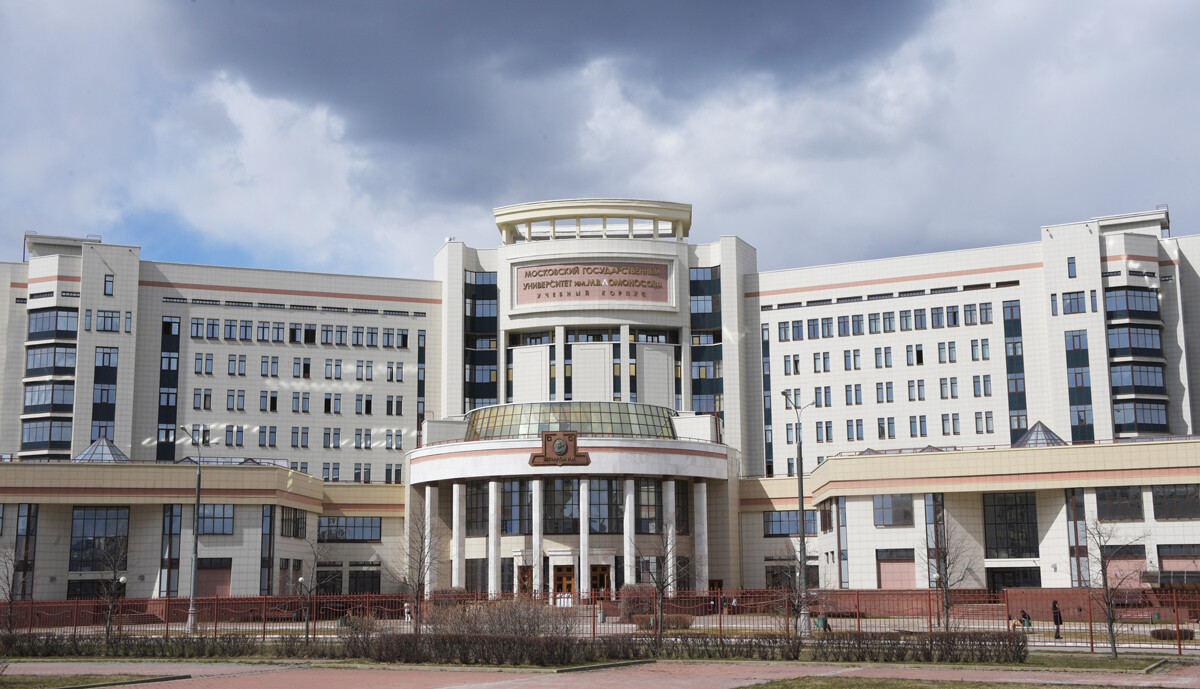
The Shuvalov academic buildings of MSU (opened in 2007)
It even has its own clinic, meteorological observatory and its own nuclear center.
5. The university currently has 43 faculties!
In addition to the faculties, MSU also has more than 300 departments and seven branches in other countries (among them former USSR republics and Slovenia).
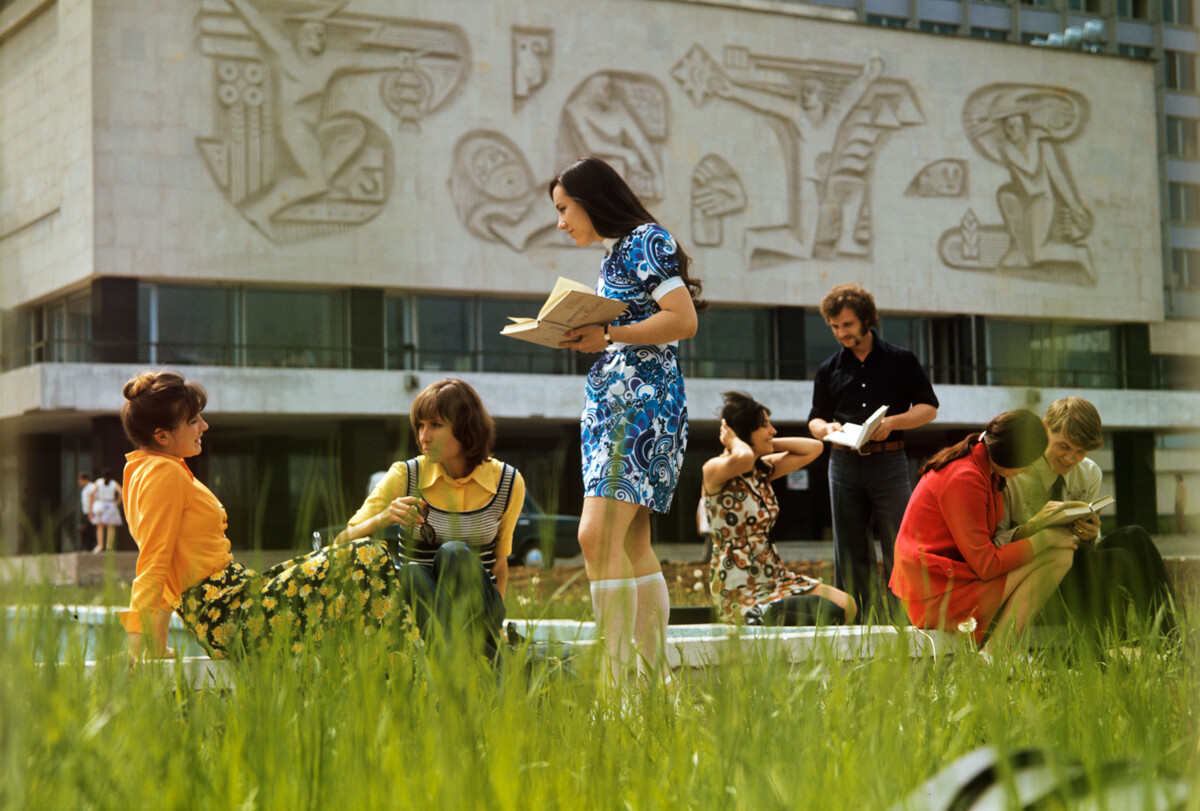
Students in front of the first Humanities Building, 1975
Initially, in 1755, the university had only three faculties – the Faculty of Philosophy, Faculty of Law and Faculty of Medicine. In the 19th century, they were joined by the departments of physical and mathematical sciences, as well as philological departments. After the 1917 Revolution, it was reorganized and new faculties of fundamental sciences appeared: the faculties of Chemistry, Biology, Mechanics and Mathematics, Physics, History, Geology, Geography, Philology and Economics.
In 1952, the Faculty of Journalism branched off the Faculty of Philology and, in 1973, the Faculty of Soil Science branched off the Faculty of Biology. Also, the faculties of Psychology, Computational Mathematics and Cybernetics and the Institute of Asian and African Studies appeared.
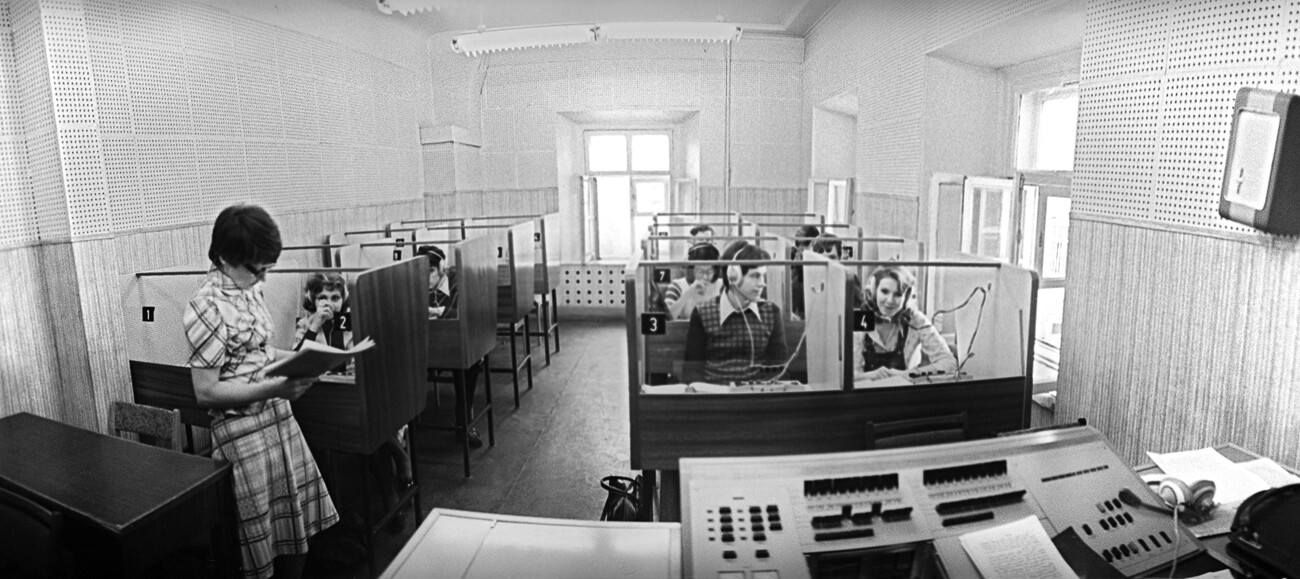
Lesson in the lingaphone classroom at the MSU Institute of Asian and African Studies, 1978
In the 1980s-1990s, separate faculties were allocated for such sciences as sociology, foreign languages and area studies, materials science, fundamental medicine, public administration and military education. Today, MSU also teaches bioengineering, global politics, public administration, business, television, humanitarian management among many other options.
Aside from that, MSU has its own educational center for high school students, whose priority is the preparation for enrolling at the university.
6. Headed for more than 30 years by academician Viktor Sadovnichy

MSU rector Viktor Sadovnichiy greets freshmen
Since 1992, Viktor Sadovnichiy has served as a longtime rector of the university. He himself graduated in 1963 from the Faculty of Mechanics and Mathematics of MSU (that’s why other faculties’ students are often jealous, because they believe he loves his faculty a bit more than the others and pays more attention to it).
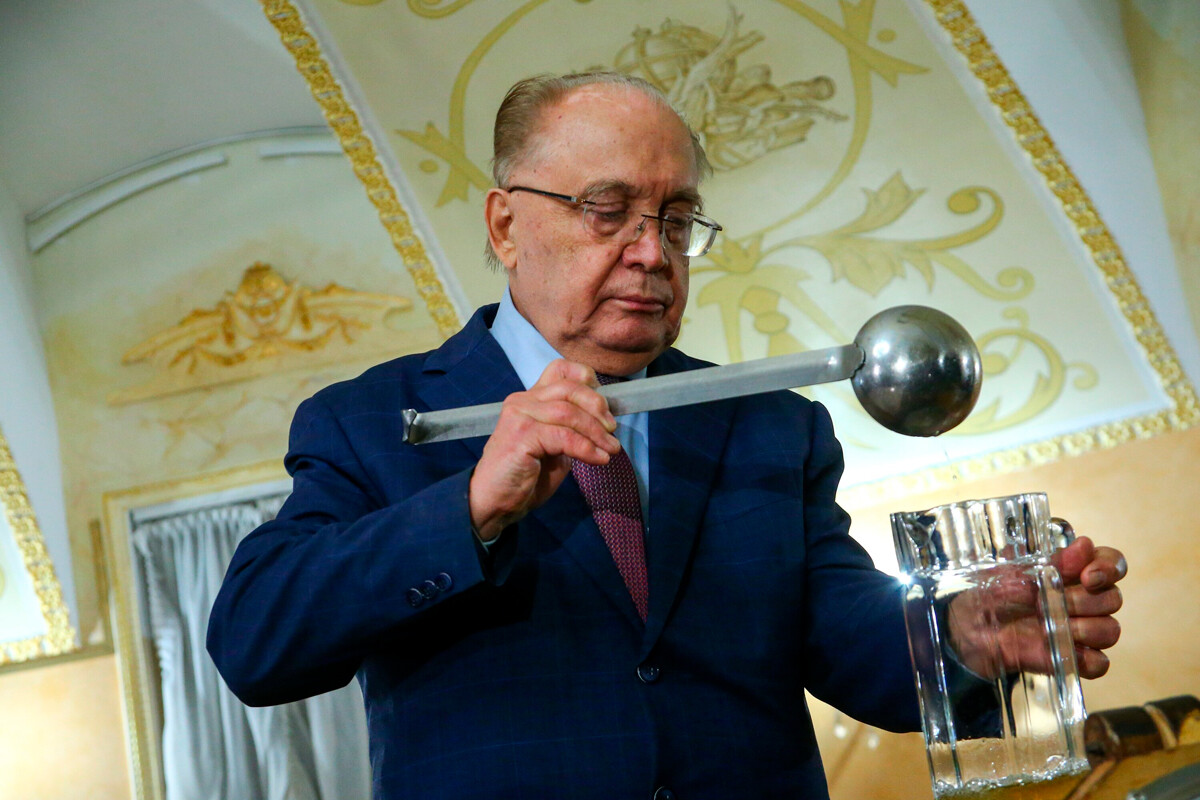
Every year, according to an old tradition, the rector offers students medovukha - a honey-based alcoholic beverage - on MSU’s birthday.
Sadovnichiy also heads the Russian Union of Rectors and has the title of honorary professor at many foreign universities, from the U.S. to Japan. He has a lot of state honors and awards. Aside from that, an asteroid was named after him (‘Sadovnichij’), as well as a type of peony tree (‘Academician Sadovnichiy’).
7. MSU alumni received 11 Nobel Prizes

An MSU student getting ready for classes
Today, about 40,000 students attend MSU (almost 4,000 of them are foreign students from 80 countries). It’s simply impossible to count the overall number of graduates of the university for all the years of its existence. Russia Beyond alone has about a dozen graduates (mainly from the Faculty of Journalism)!
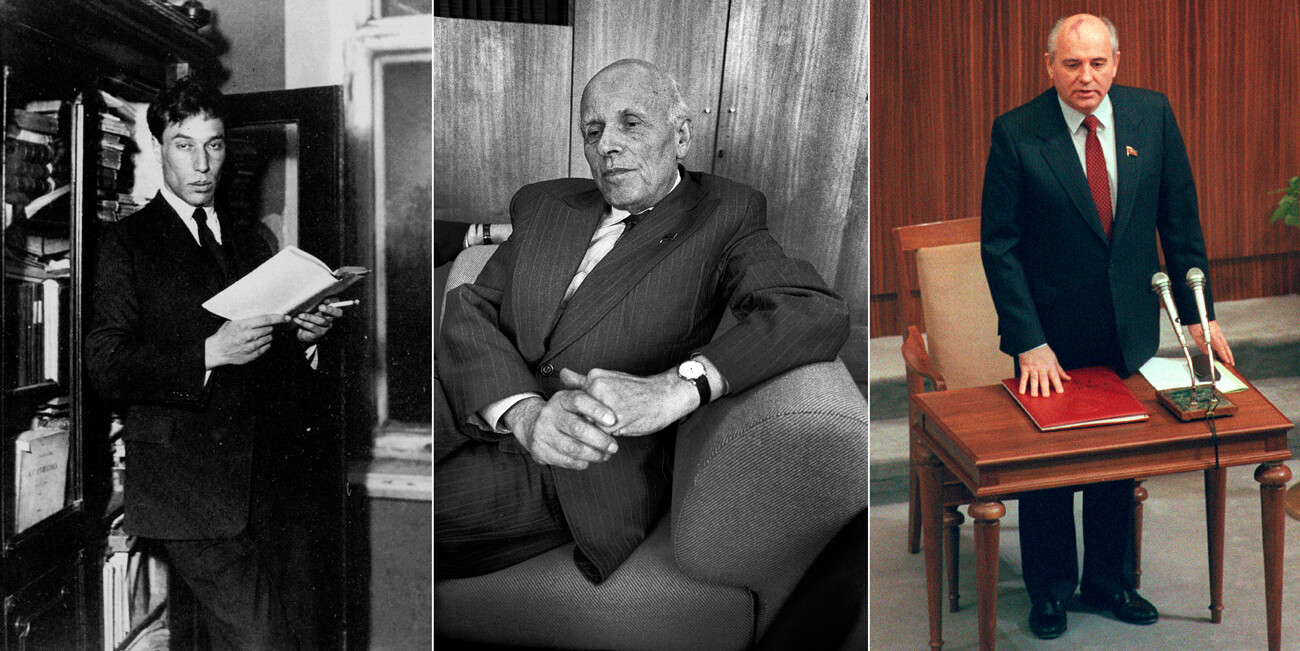
MSU graduates who won the Nobel Prize: Boris Pasternak, Andrei Sakharov, Mikhail Gorbachev
People who graduate from MSU become famous politicians, businessmen, sportsmen, writers and journalists – and, of course, outstanding scientists. They received a slew of notable awards, and 11 graduates became Nobel Prize laureates in different fields:
- Nikolay Semyonov (Chemistry, 1956),
- Igor Tamm and Ilya Frank (Physics, 1958),
- Boris Pasternak (Literature, 1958),
- Lev Landau (Physics, 1962),
- Alexander Prokhorov (Physics, 1964),
- Andrei Sakharov (Peace Prize, 1975),
- Pyotr Kapitsa (Physics, 1978),
- Mikhail Gorbachev (Peace Prize, 1990),
- Vitaly Ginzburg and Alexei Abrikosov (Physics, 2003)
Dear readers,
Our website and social media accounts are under threat of being restricted or banned, due to the current circumstances. So, to keep up with our latest content, simply do the following:
- Subscribe to our Telegram channel
- Subscribe to our weekly email newsletter
- Enable push notifications on our website
- Install a VPN service on your computer and/or phone to have access to our website, even if it is blocked in your country
If using any of Russia Beyond's content, partly or in full, always provide an active hyperlink to the original material.
to our newsletter!
Get the week's best stories straight to your inbox
- What Russian language exams exist for foreigners?
- Why I decided to learn Russian, and how hard it was for a Chinese speaker
- How the University of Tyumen is becoming the innovative educational center of Western Siberia
This website uses cookies. Click here to find out more.

School №1501

Description of School №1501
- Established: in 1989
- Location: Moscow, Russia
- Age of students: 7 - 17 years.
- Type of education: joint (mixed)
- Type of accommodation: accommodation is provided only for pupils of the orphanage for students with hearing impairments
- Language of instruction: Russian.
School No. 1501 is a large educational complex, where, together with prestigious universities, they offer programs that allow them to start nurturing qualified medical, engineering and scientific personnel from school. Such an opportunity arose due to the historical features of the institution: the Lyceum No. 1, established at the Moscow University in 1989, became one of the first educational institutions representing the continuous cycle of school and higher education. In 1999, the Lyceum received a new building and the title of “Multi-profile Technical Lyceum No. 1501”, and in 2014, 6 schools and 3 kindergartens were attached to it. All graduates of the school annually become students of the most famous higher educational institutions of the country, including:
- Technical University MSTU. N.E. Bauman;
- Technological University MSTU "Stankin";
- Medical and Dental University MSMU them. A.I. Evdokimova;
- Automobile and Road Technical University MADI (STU).
After enrollment, graduates often continue to develop research projects that began in school. Today, the entire pedagogical team of the educational complex sees its mission and main goal in bringing up not just a harmonious personality, able to easily adapt to the needs of a rapidly changing world, but to nurture responsible citizens who in the future will turn into high-class specialists and will be able to solve state problems in the best way. tasks.
Programs and prices, tuition fees in School №1501
Medical program.
Medical program - a course for students of grades 6-11, including natural science preparatory and medical specialized education. 95% of its graduates associate their profession with medicine and become students of the best universities in the country. The average grade of exam in biology and chemistry among students of this program is 73 out of 100 - such results can be achieved due to the following features of the course:
- the functioning of the "Club of the Young Medic", in which students learn about the work of clinics and laboratories, attend lectures of famous academicians and doctors, and study the departments of the Medical and Dental University. A.I. Evdokimova;
- the study of Latin, the basics of medical terminology, the rules of first aid;
- participation in conferences, research contests;
- continuous improvement of their knowledge and skills of teachers who undergo advanced courses, participate in professional conferences, contests, seminars, master classes.
At the end of the school medical course, graduates of the eleventh grades have the opportunity to pass a specialized pre-vocational exam, the points of which are added to the amount of points previously received by the student during the Unified State Examination (subject to admission to the First Medical University of Moscow State Medical University).
Engineering program
The engineering program is a natural science and technical course designed to help pupils of the tenth and eleventh grades decide on the choice of a future engineering specialty during school. Together with the Moscow Lyceum No. 1501, the project participants are federal higher education institutions and high-tech Russian enterprises. Each party has its own role in the program.
Secondary school educational institutions:
- directly implement engineering profile programs;
- organize extracurricular activities of schoolchildren taking into account their technological interests;
- assess the performance of students mastering specialized subjects, additional related courses, practices in non-school organizations.
Higher education institutions:
- develop specialized programs and prepare materials, criteria for diagnosing students' knowledge;
- organize events to improve the qualifications of school teachers participating in the program;
- popularize scientific knowledge;
- organize specialized conferences, competitions, practical courses.
Engineering industry enterprises:
- take an active part in the formation of requirements for the competencies of graduates;
- help organize the research activities of schoolchildren;
- assist in the organization and practice;
- they are working on vocational guidance: they acquaint students with specific engineering specialties and positions, explain which direct duties each of them provides.
Academic (scientific and technological program)
The scientific and technological program at lyceum No. 1501 allows high school students (students of 10-11 grades) to prepare themselves in the best way for getting higher academic education in the field of economics and in the future to work in high-tech industries, the development of which will determine Russia's economic capacity as a whole. Full implementation of the course is possible thanks to the close cooperation of the Lyceum with the Institute of Design and Technological Informatics of the Russian Academy of Sciences and the Moscow State Pedagogical University.
The course contains elements of pre-vocational education, special attention in its framework is paid to the formation of the following skills in students:
- ability to work in a team, find a common language with students from other educational institutions of different ages under the guidance of scientists;
- conduct effective search operations in conditions where the result is not known in advance;
- correctly formulate and verify their own hypotheses;
- apply modern methodology for scientific research;
- critically assess the accuracy and significance of the results obtained in the process of research.
In order to ensure maximum immersion of schoolchildren in the world of academic research on the basis of the school are:
- a circle from the academician, where students can attend lectures of university professors, famous scientists;
- Summer academic practice, which allows students to improve their research skills.
- algebra (3 hours);
- geometry (3 hours);
- probability theory and statistics (1 hour).
The "Mathematical vertical"
The Mathematical Vertical program is the flagship course of the Center for Educational Excellence, in which students in grades 7–9 will study in-depth modern mathematics and the subjects of the natural science cycle. In high school, such a knowledge base will allow them to successfully master specialized, preprofessional, academic, IT courses. Weekly, in addition to other compulsory subjects, students will study:
Also provided for individual and group counseling (2 hours) and classes in a circle (1 hour).
Education in the sixth grade is considered as a preparatory stage of the program, including:
- writing a preparatory program in mathematics (in December);
- visiting the circle of in-depth study of the exact sciences;
- writing an introductory work (in April).
Course performance is assessed according to criteria such as:
- the level of passing the OGE;
- successful completion of specialized diagnostics after the end of the seventh and eighth grades;
- performance at the All-Russian School Olympiad.
- continuous improvement of their knowledge and skills of teachers who undergo advanced training courses, participate in professional conferences, contests, seminars, master classes.
The Mathematical Vertical program is the flagship course of the Center for Educational Excellence, in which students in grades 7–9 will study in-depth modern mathematics and the subjects of the natural science cycle. In high school, such a knowledge base will allow them to successfully master specialized, preprofessional, academic, IT courses. Weekly, in addition to other compulsory subjects, students will study:
Accommodation, meals, prices
As part of the educational complex, there is an institution for studentrs with hearing impairments, which provides for the possibility of 24-hour free stay of pupils on full board basis: with full five meals a day and living on the boarding school territory. All the other constituent educational units of Lyceum No. 1501 provide exclusively for full-time education for high school students living in Moscow.
The school administration organizes meals for students together with the “Social Nutrition Center” enterprise in the form of hot breakfasts and lunches. There are 2 power formats:
- at the expense of the Moscow city budget (for students from socially unprotected and large families);
- on a paid basis.
Since the educational institution consists of several buildings, there are a number of differences between the modes of operation of canteens in different buildings:
- for pre-school offices provided four meals (including lunch and afternoon tea);
- for students living in the Lyceum and studying in the buildings along Malaya Dmitrovka Street and Uspensky Lane, full board is available: the first and second breakfasts, lunch, afternoon tea and dinner.
Activities School №1501
In order to help the lyceum students to develop comprehensively and strengthen their health, there are clubs and sections in various areas in lyceum No. 1501:
- photo studio
- guitar lessons,
- vocal studio;
- communication skills development circle
- Club "Young Journalist";
- French club,
- German language club;
- table tennis,
- basketball,
- volleyball.
Classes in the sections have practical application: the Lyceum students publish the internal newspaper "Lyceum Bulletin", annually prepare calendars with school data, perform and take prizes at various sports competitions, provide photo reports of all school events.
- Included in the TOP-20 of the best schools in Moscow over the past five years.
- The winner of the competition of educational institutions introducing innovations in the educational process (2006).
- Grant winner of Moscow for high results of educational activities (2011).
- Lyceum received a letter of appreciation for the successful and effective implementation of research programs.
- The organizer of the scientific and practical international conference for stuednts "What, how and why - I will figure it out and explain."
- Each graduate of the Lyceum performs design and research work under the guidance of school teachers or teachers of technical universities.
- The Lyceum became the platform from which the webcast of the All-Russian Parent Meeting was held with the participation of the Minister of Education (2015).
Facilities and equipment at School №1501
Versatile educational institution № 1501 consists of seven schools and three kindergartens, which occupy 11 buildings in different streets of Moscow. In total, the school buildings of the institution consist of 202 classrooms + all of them are additionally equipped with the following specialized rooms:
- computer classes;
- workshops for labor lessons;
- art studio;
- technology cabinets;
- study rooms for extended day groups;
- libraries with reading rooms;
- sports and gyms with all necessary equipment;
- street game and sports grounds;
- dining rooms;
- medical offices.
All buildings of the school complex have access to the Internet, as well as connected to the corporate network of the Moscow Department of Education.
Admission dates and extra charges
The school year at school number 1501 starts on September 1 and ends:
- May 21 for elementary school students;
- May 24 for high school students and high school students;
- in accordance with the schedule of final state exams for graduates of the ninth and eleventh grades.
The whole educational process is divided into quarters, each of which ends with a vacation:
- additional February for the first classes.
The cost of education in lyceum No. 1501 is formed from the sum of expenses for food and visits to various sections of the child. Directly the school itself is fully funded from the city budget, but all types of additional extracurricular education are on a paid basis. Prices for school № 1501 in different sections differ from 170RUB / hour for attending the course “Introduction to Logic” to 560RUB for an hourly occupation of foreign languages.
Entry requirements, how to apply, what is required to enrol
School № 1501 enrolls students of different age categories.
Features of the admission of studens in elementary school (grades 1 - 4):
- Parents need to submit an online application on the municipal site of the city of Moscow;
- there are no entrance tests;
- when visiting kindergartens of the multi-disciplinary institution No. 1501, enrollment in the first class takes place in the order of transfer from the pre-school department.
The enrollment of students in grades 7–10 occurs through the process of transferring students from other educational institutions, while taking into account:
- participation in competitions at various levels;
- the results of the monitoring of the Moscow Center for the Quality of Education in core subjects;
- the success of passing the final state certification;
- results of entrance examinations developed by the Lyceum Commission.
Institution on the map
Residence permits, citizenship and other services.
- Guardianship services during the studies
- Student supervision
Review about School №1501
Recommendations on when to apply, similar educational institutions.

Interested in studying in School №1501?
Explore more than just language.

Join us and stay up to date with the latest news and promotions!
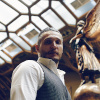

IMAGES
VIDEO
COMMENTS
Interesting Research Project Ideas for High School In Education. Examine the advantages of having diverse students in schools. Evaluate the effectiveness of charter schools within the national education system. Explore the impact of modern technology on the teaching methods used in schools.
In the research program I help run for high school students, we've had students who have written on many high school research project topics. These include climate change's impact on the economy in Mumbai, non-viral delivery mechanisms for CRISPR/cas9, and an analysis of the AI strategy of the European Union.
NHSJS is a free, online, student-run and peer-reviewed research journal that is targeted towards high school students. To be published in this journal, students don't have to do independent ...
Independent research is an educational activity done by students who wish to fully investigate a topic they are interested in. If you are wondering if a high school student can do independent research, the answer is a BIG YES!In fact, high school students can benefit the most from conducting independent research.. Aside from fostering critical thinking skills, research projects can deliver ...
At Inspirit AI, our students deepen their subject knowledge of computer science and artificial intelligence through mentor-led projects and courses. Preparation for higher education and careers: Engaging in research projects in high school prepares students for the rigors of academic life and research-oriented careers.
For example, last year over 4000 students applied for 500 spots in the Lumiere Research Scholar Program, a rigorous research program founded by Harvard researchers. The program pairs high-school students with Ph.D. mentors to work 1-on-1 on an independent research project. The program actually does not require you to have a research topic in ...
Set goals for completing the introduction, various sections of the body, and your conclusion. 6. Edit Your Paper. There will be multiple stages of editing that need to happen. First, you will self-edit your first draft. Then, you will likely turn a draft of your paper in to your mentor for another round of editing.
Inspirit AI's AI + X program: High school students can participate in Inspirit AI's 1:1 AI + X mentorship program. This 1:1 program offers students a unique opportunity to collaborate with an experienced research mentor to conduct real-world research projects. In collaboration with experienced AI research mentors, students will begin by ...
A mini research project can help students focus on the most important central theme of the lesson. The goal of the mini research project is for students to invest in learning about a new topic, and then sharing with their classmates what they learned. The project is meant to support and reinforce a specific central idea of the lesson or unit.
The institute hosts approximately 1,000 high school students per year for three-day periods to participate in "miniature" research projects. The lab is managed by the non-profit organization Tous Chercheurs—loosely translated as "Researchers, All"—reflecting its philosophy that everyone can be a researcher for at least a little while.
Cost: $2,707-$9,459. Format: In-person (Anchorage, AK; Mammoth, CA; or Providence, RI) Application deadline: May 10, 2024. For high school students looking to literally expand their horizons, BELL is a great chance to visit a spectacular landscape, learn its native history, and do your own research.
High School Project on AI in Cancer Research: Sia's Research Paper and Blog. High School Cancer Research Student Ojas Writes a 30-Page Paper. Genetic Engineering as an Effective Cancer Therapy: A Research Paper Focused on CRISPR. A Paper on the Relationship Between the Most Significant Breast Cancer Susceptibility Proteins, Aldehydes, and ...
1. Use green chemistry as a tool to achieve sustainability targets in the fields of energy, water remediation, agriculture or sensing. 2. Find novel chemicals that can be used to shape the next generation of batteries, green fuels, and energy harvesting. 3.
Continuing its commitment to undergraduate research and building a pipeline for students to pursue science, technology, engineering, and math (STEM) fields, New York Tech has completed the sixth year of its Mini-Research Grant Awards (MRGA) program. Research projects were received from 18 high schools in New York, New Jersey, and Connecticut ...
Develop a list of future education and career interests. Brainstorm potential research topics relating to your passion or interest. Look up ongoing research studies by professors or doctoral degree-seeking students with a local college or university. Ask family members if they know any researchers who they could connect you with.
Underscoring its commitment to undergraduate research and to building a pipeline for students to pursue science, technology, engineering and math (STEM) fields, New York Institute of Technology has awarded 30 research projects from 20 high schools with New York Tech Mini-Research Grant Awards (MRGA). Now in its fifth year, the MRGA program ...
Submit to a research journal. There are several research journals that accept submissions from high school students. Try submitting your research paper to The Concord Review, The Journal of Emerging Investigators, or AGNI Magazine.At Inspirit AI, we offer 1:1 independent research mentorship programs where we guide students to conduct their own AI research and submit to a scientific journal.
Learn how to teach research skills to primary students, middle school students, or high school students. 50 activities that could be done in just a few minutes a day. Lots of Google search tips and research tips for kids and teachers. ... 10 Replies to "50 Mini-Lessons For Teaching Students Research Skills" Sarah says: July 29, 2019 at 4:49 ...
In AER, students are paired with adult mentors (such as LBUSD staff, industry experts, and academics) who assist the teens in researching their own big questions in fields of their choice ...
The students were chosen out of a list from roughly 460 schools across 46 states through the NASA HUNCH mission (High School Students United with NASA to Create Hardware), a project-based learning ...
Mar 18, 2024 - Explore Stephanie Icenogle - The Creat's board "Mini Research Projects", followed by 1,557 people on Pinterest. See more ideas about creative classroom, student centered activities, back to school activities.
More than 1,200 middle school and high school students from across Texas traveled to College Station from March 22-23, 2024, to showcase their science and engineering projects at the Texas Science and Engineering Fair (TXSEF).. Students competed at regional science and engineering fairs from January to March before advancing to the state fair held at Texas A&M University.
On Monday, Feb. 26, visitors to the Integrated Engineering Services Building at NASA's Langley Research Center in Hampton, Virginia, were greeted by the mouthwatering smell of roasted garlic, sautéed peppers and onions, fragrant herbs, and the unexpected discovery that the building's main hallway had been turned into a pop-up kitchen for local high school students.
KEMP, Texas - Students and teachers from Kemp High School in Kaufman County will play a key role in research for the total solar eclipse in April. The five students from Kemp are part of the 2024 ...
The university strives for the status of an advanced analytical, research, scientific, educational and project center, providing high-quality education for both Russian and foreign citizens. The university is among 15 candidates of the state program "Priority - 2030", supporting the development and strategic academic leadership of the ...
Come and join us for the Awarding and Closing Ceremony of the National Science and Technology Fair (NSTF) 2024! #NSTF2024 #MATATAG #BatangMakabansa...
ProCES 25th Anniversary SPONSORED BY THE G.S. BECKWITH GILBERT '63 LECTURE SERIES 4:30-5:45 "Responsible Research Practices with Environmental Justice Communities" In 1860, the last ship of enslaved people landed on the shore of Mobile Bay. After the end of the Civil War, these survivors of the Middle Passage bought land on the plateau above the river, built homes and a school, and called this ...
1. The oldest university in Russia. Empress Elizabeth of Russia; Ivan Shuvalov; Mikhail Lomonosov. Tretyakov Gallery; Hermitage; Kunstkamera. Moscow University was founded in 1755 at the order of ...
During the 23rd session of the UNWTO General Assembly, at a business session "Educational Tourism. Creative Tourism Strategy and Educational Megaproject" held as part of the Moscow visiting program, the Moscow City Tourism Committee presented a unique project "City of Discoveries" aimed at attracting secondary school students from Russian regions into the Capital.
Established: in 1989. Location: Moscow, Russia. Age of students: 7 - 17 years. Type of education: joint (mixed) Type of accommodation: accommodation is provided only for pupils of the orphanage for students with hearing impairments. Language of instruction: Russian. School No. 1501 is a large educational complex, where, together with ...